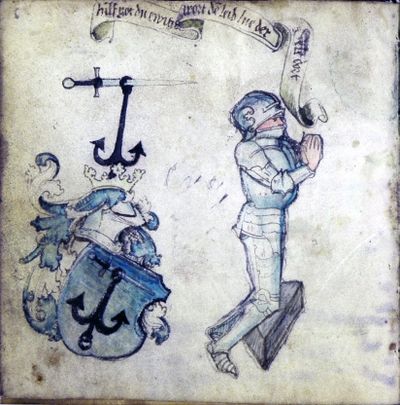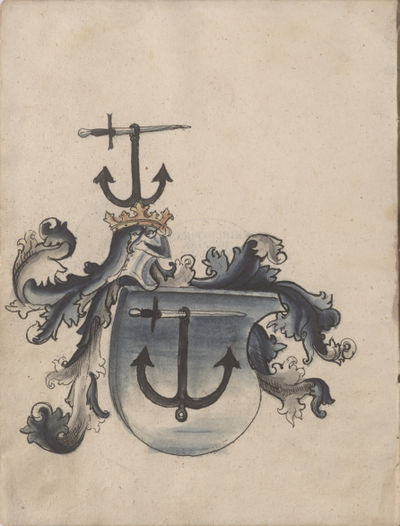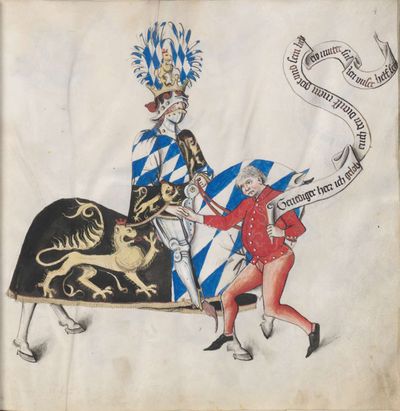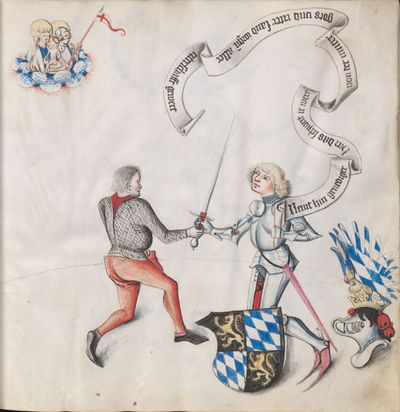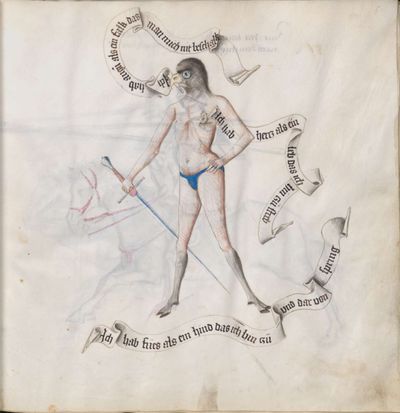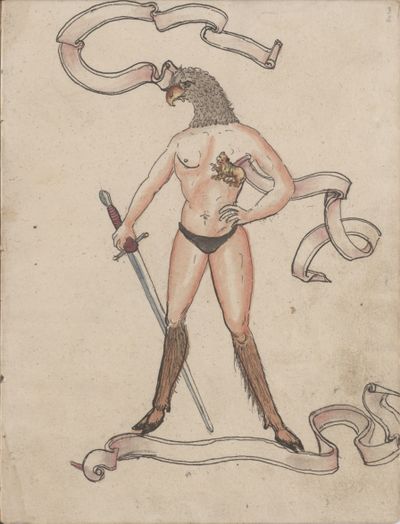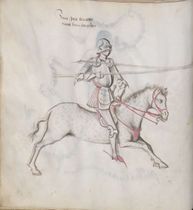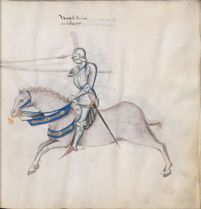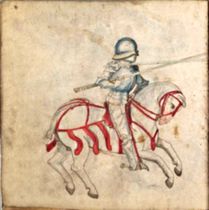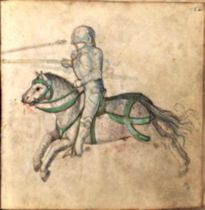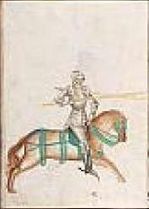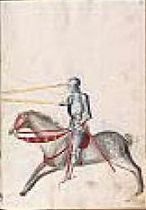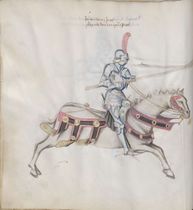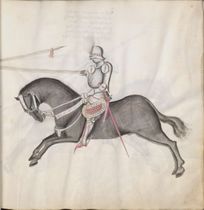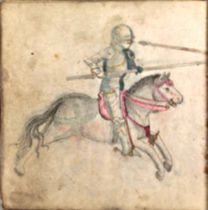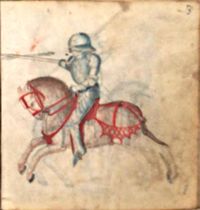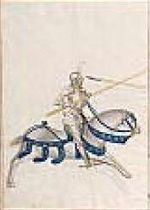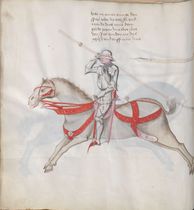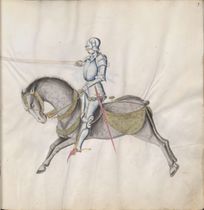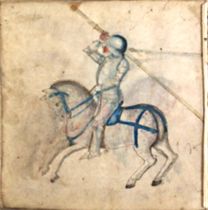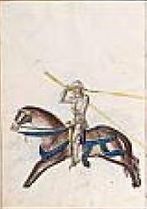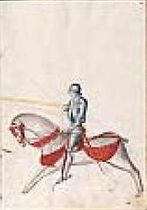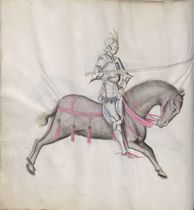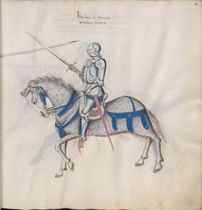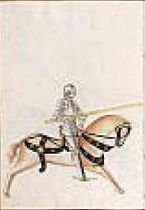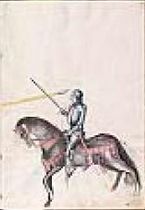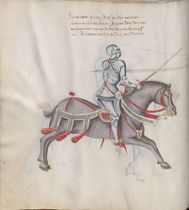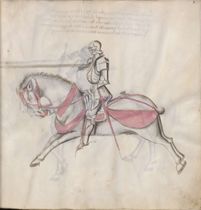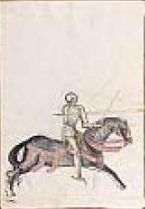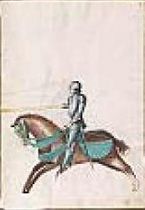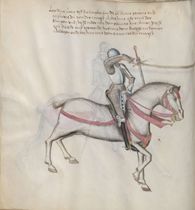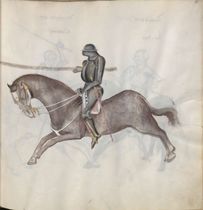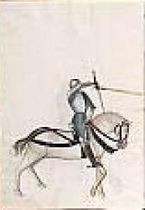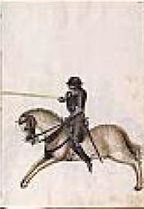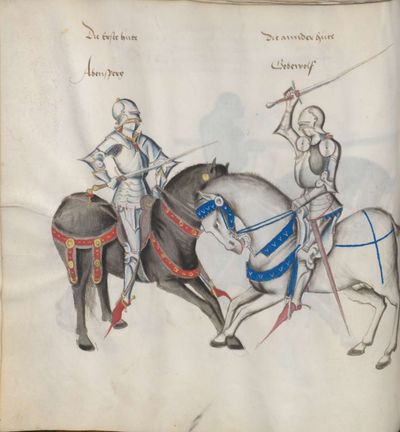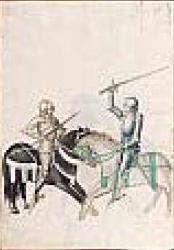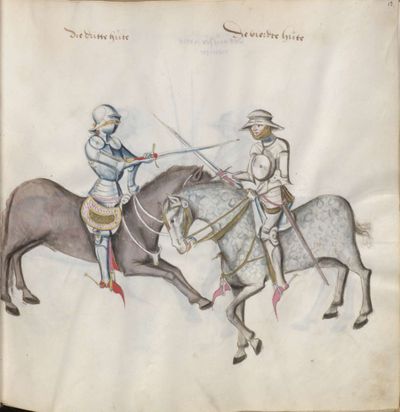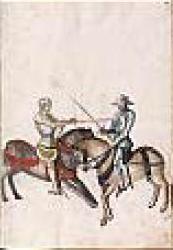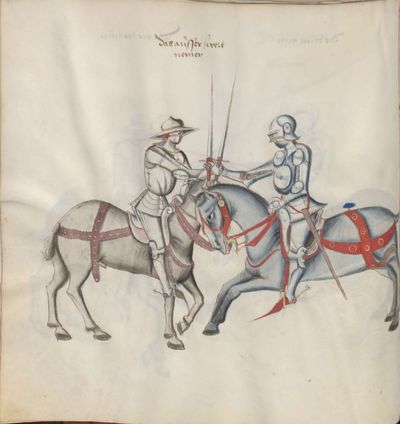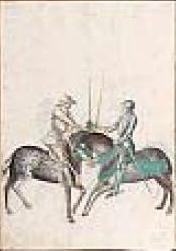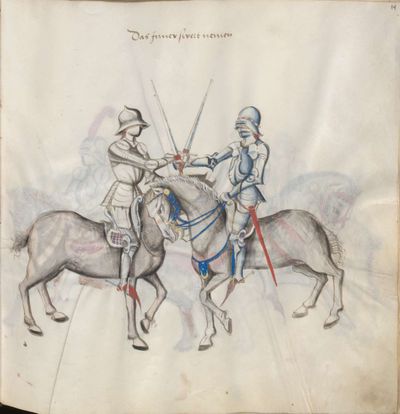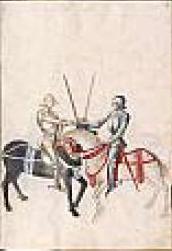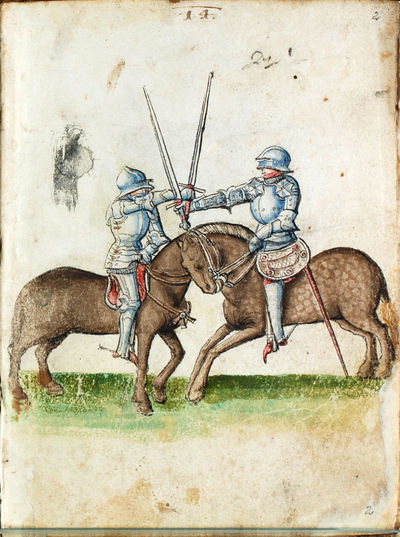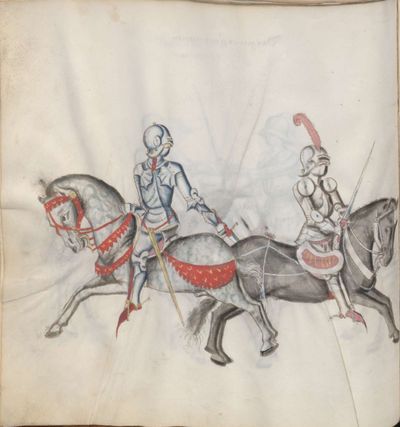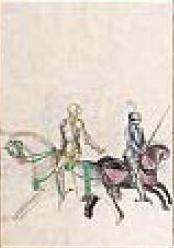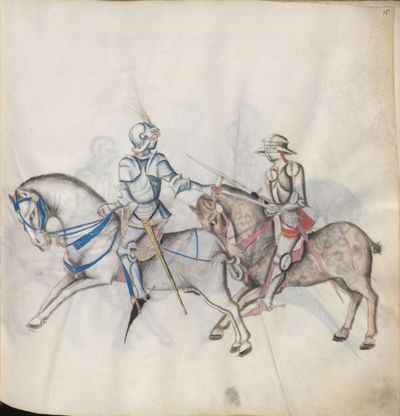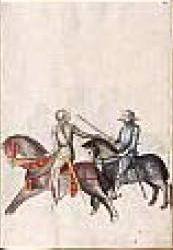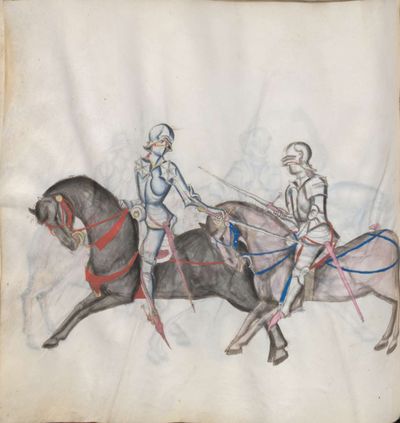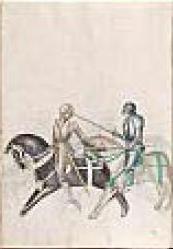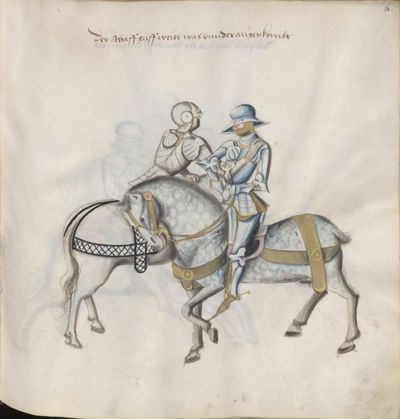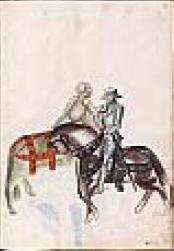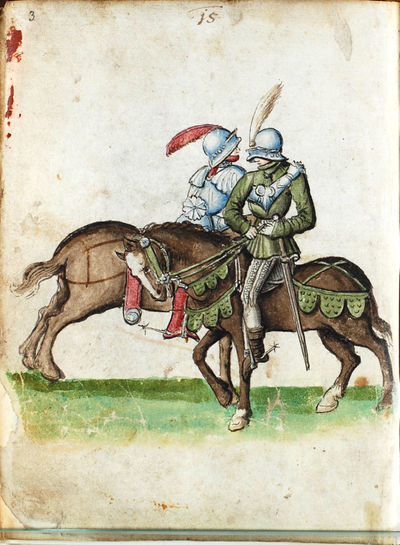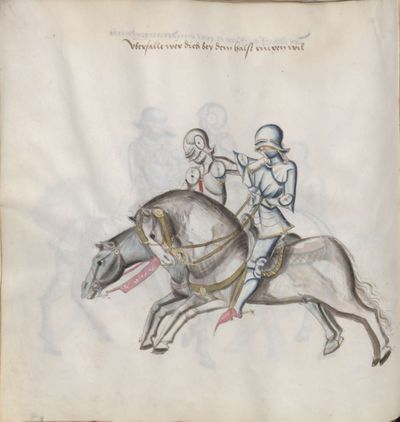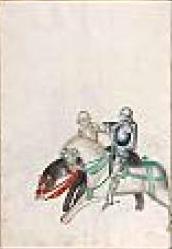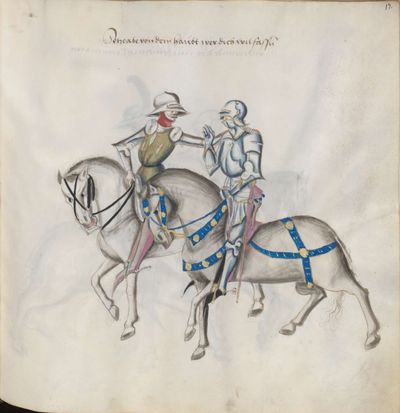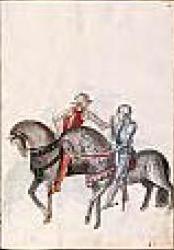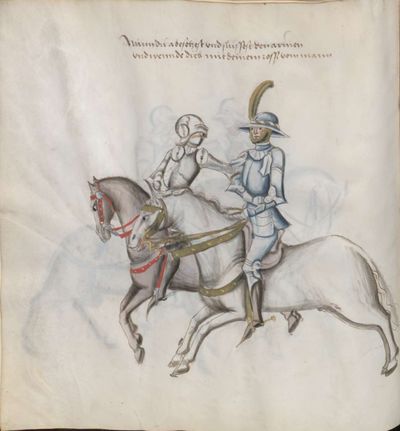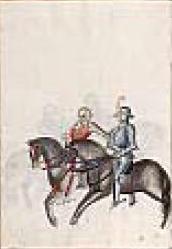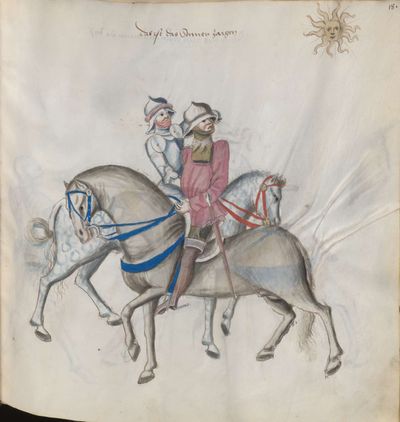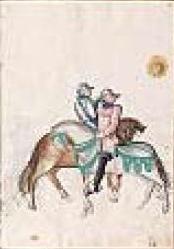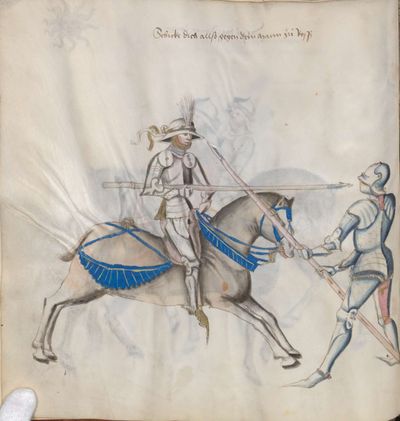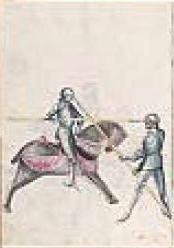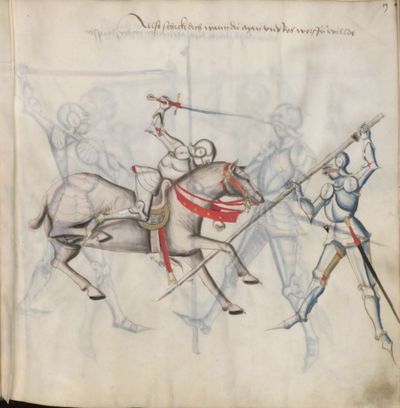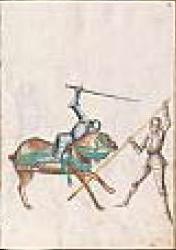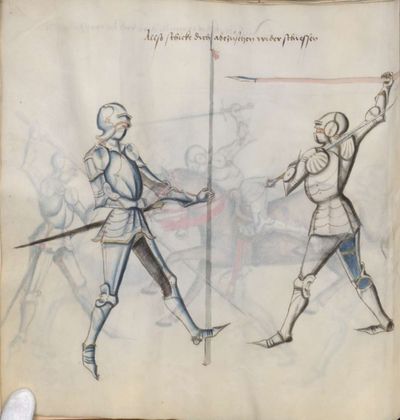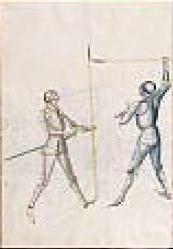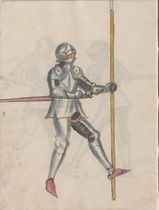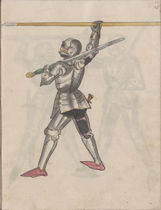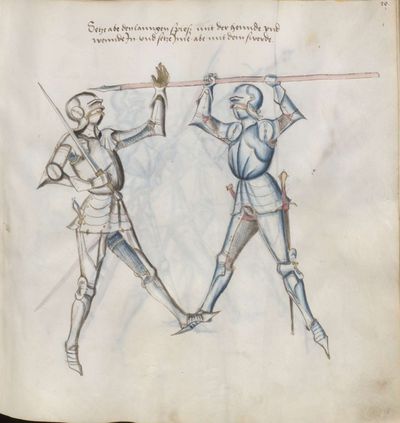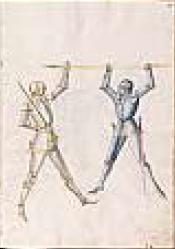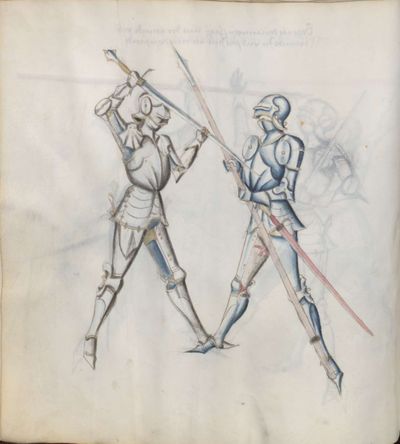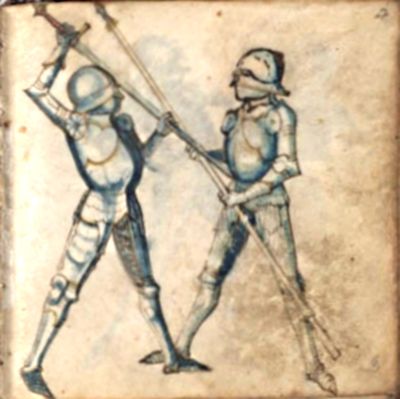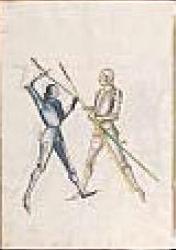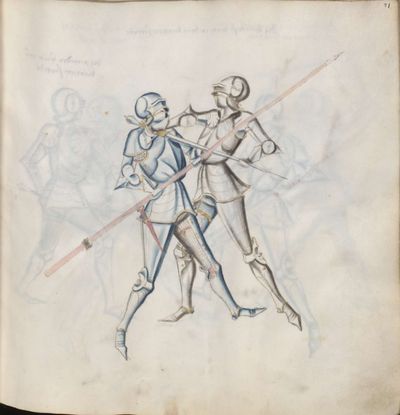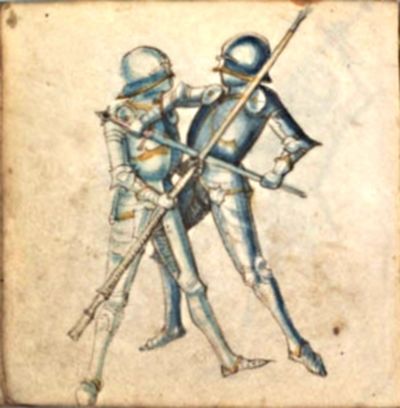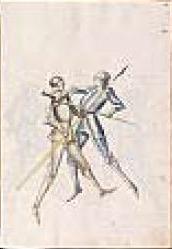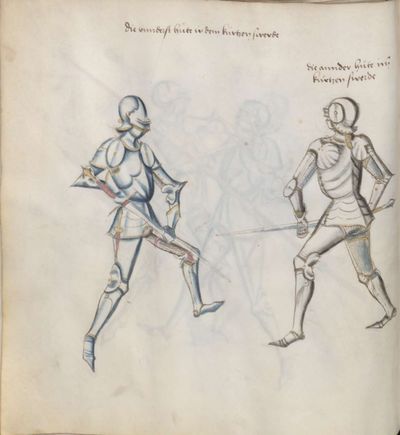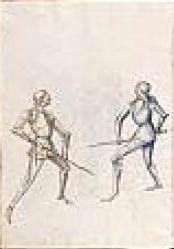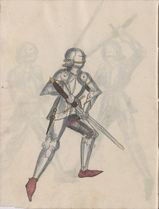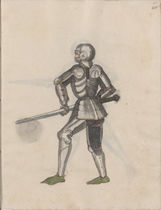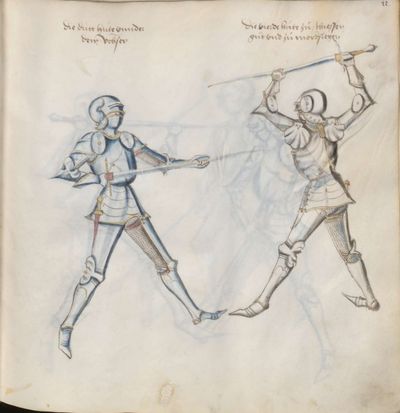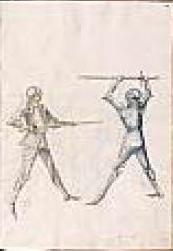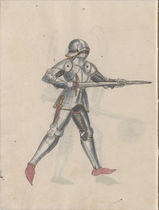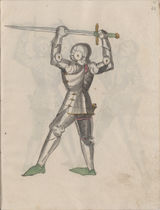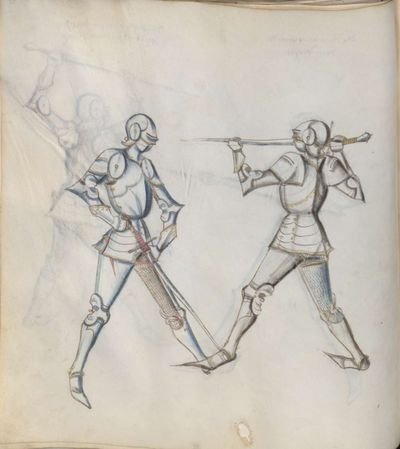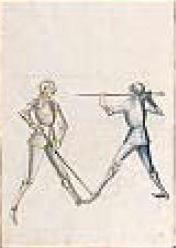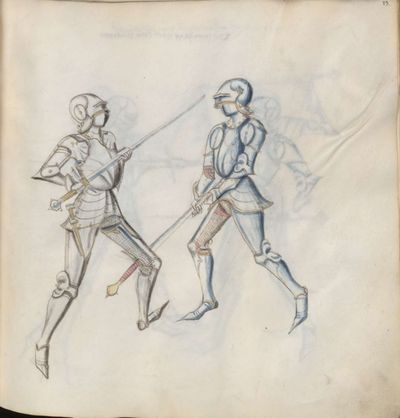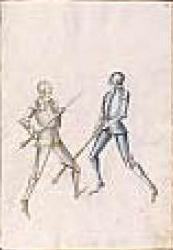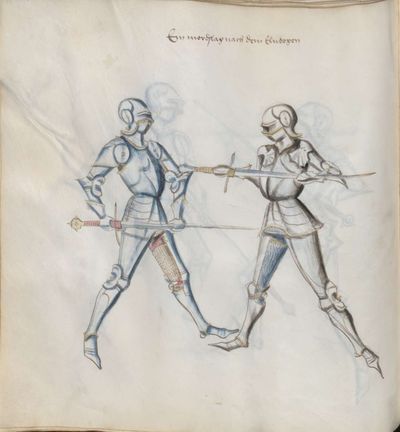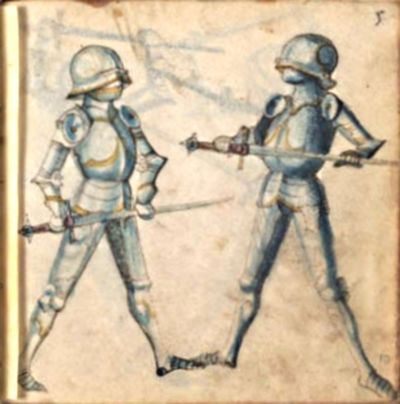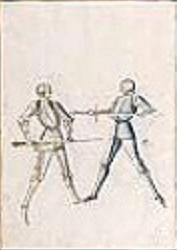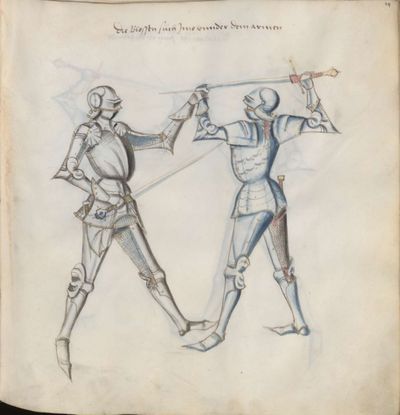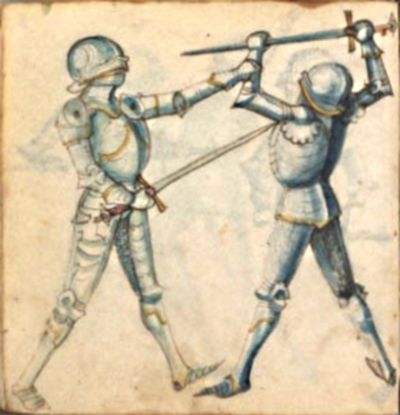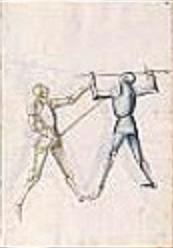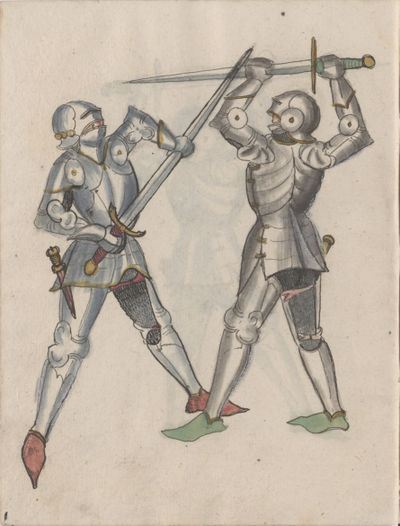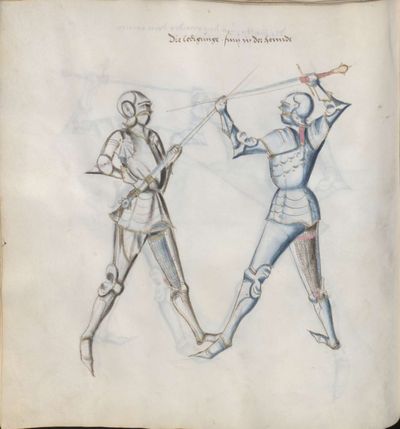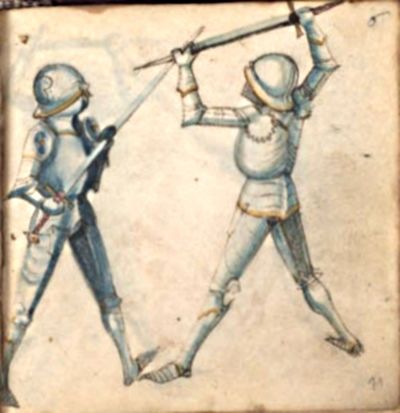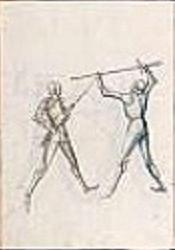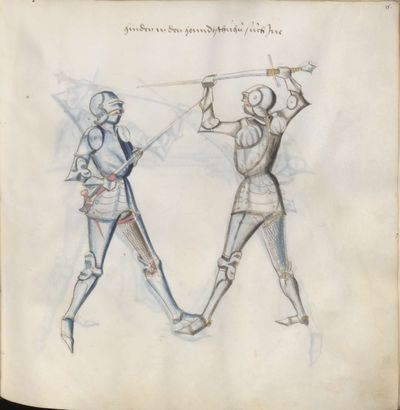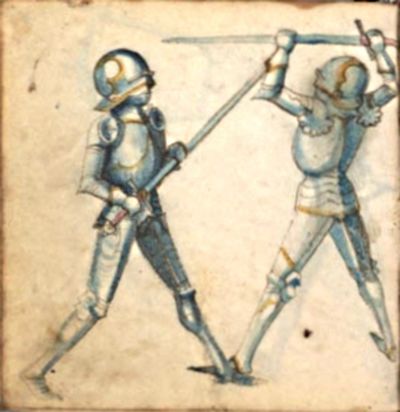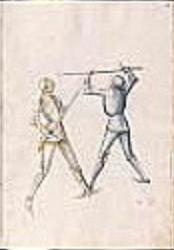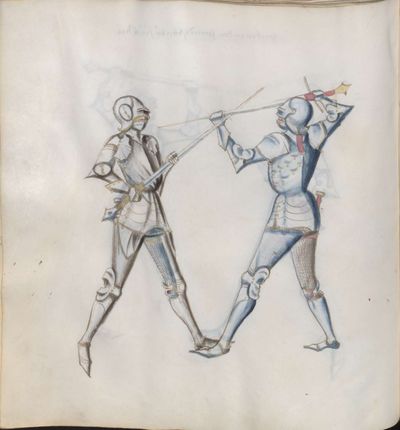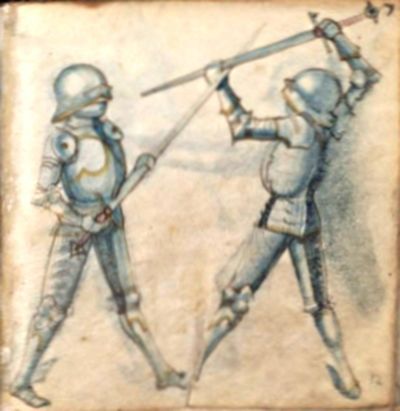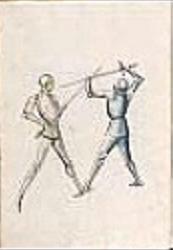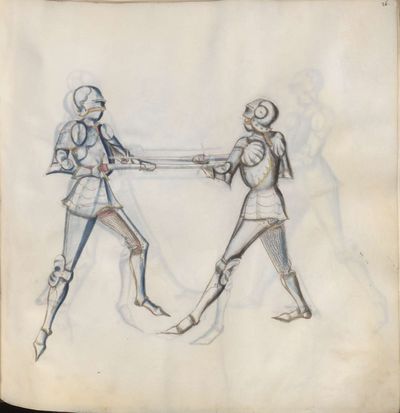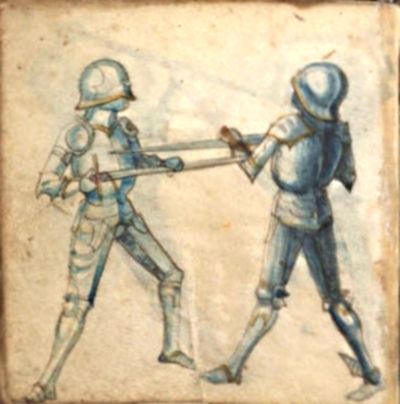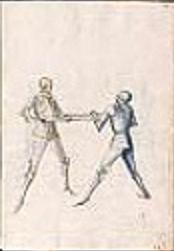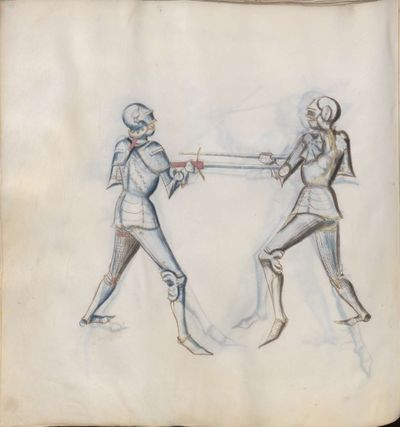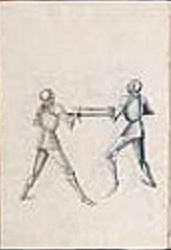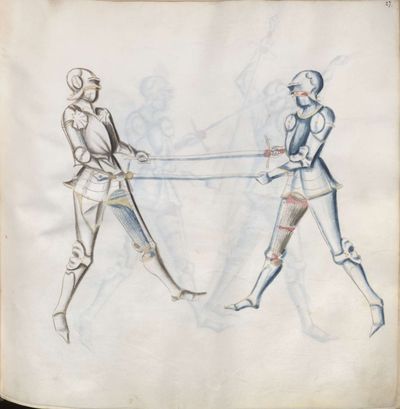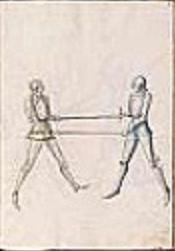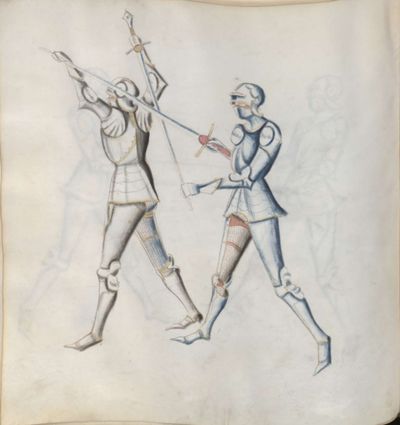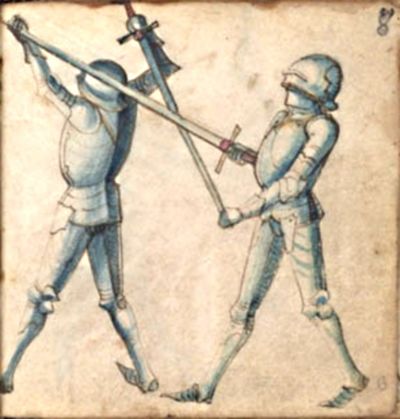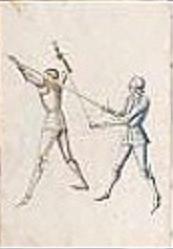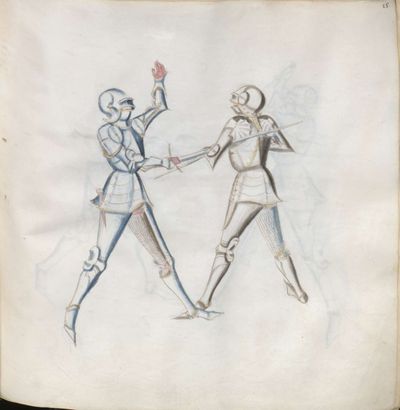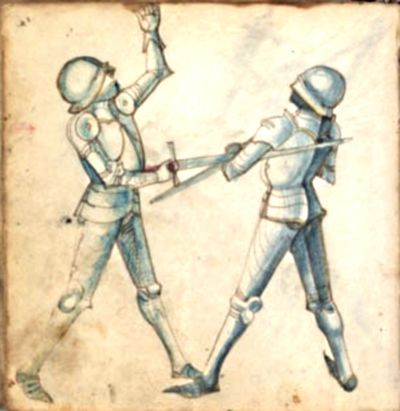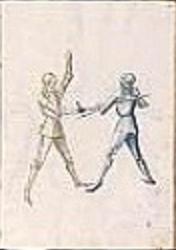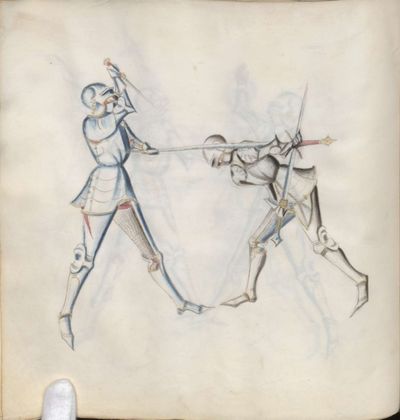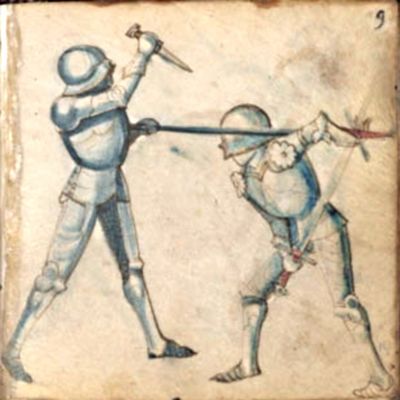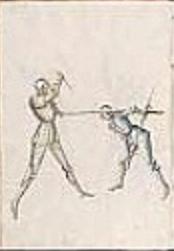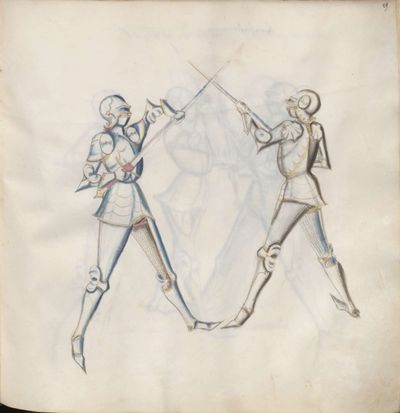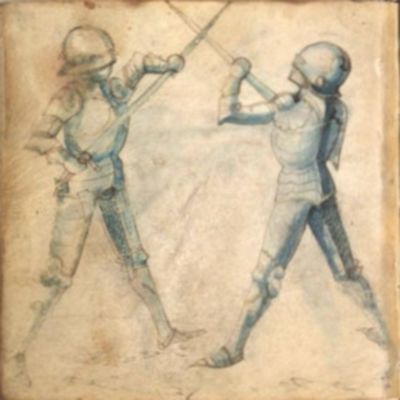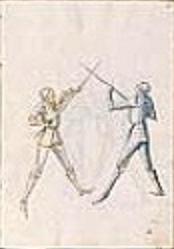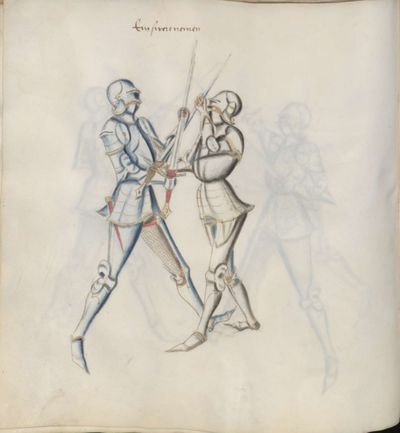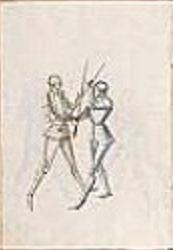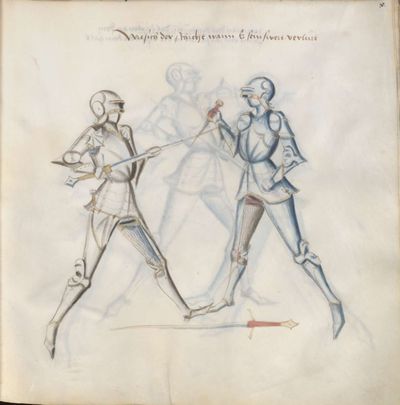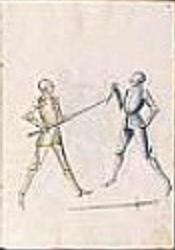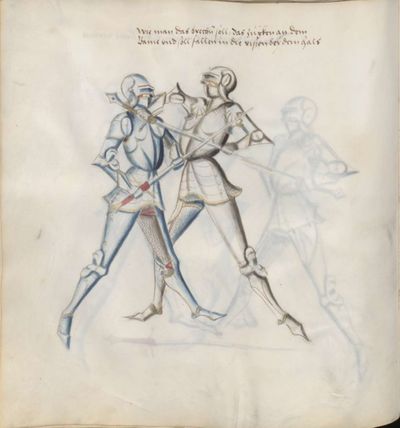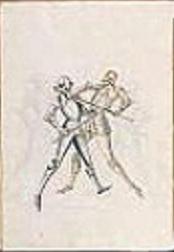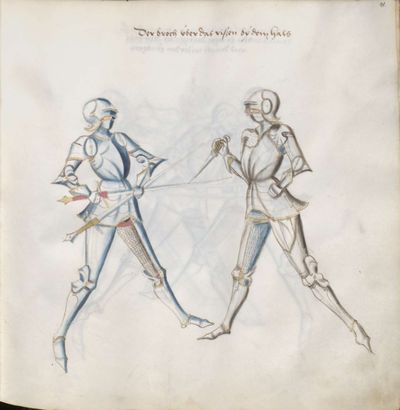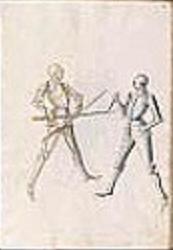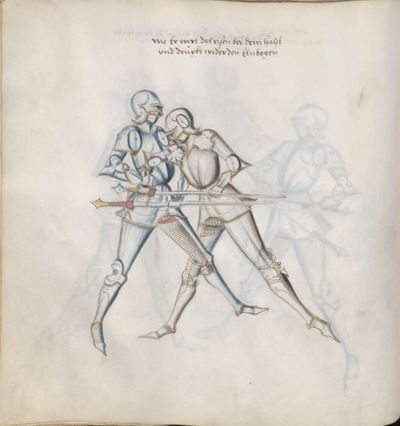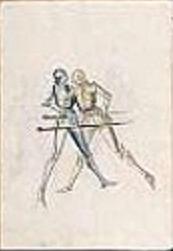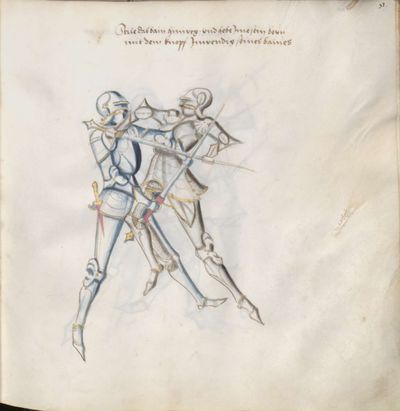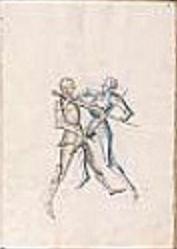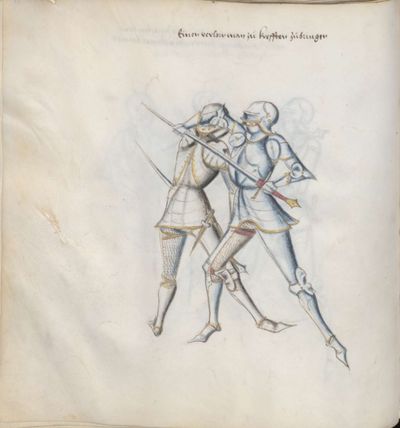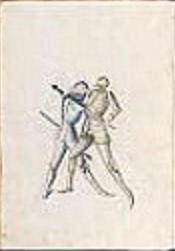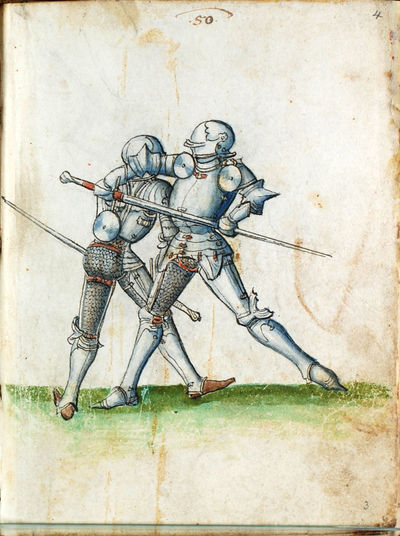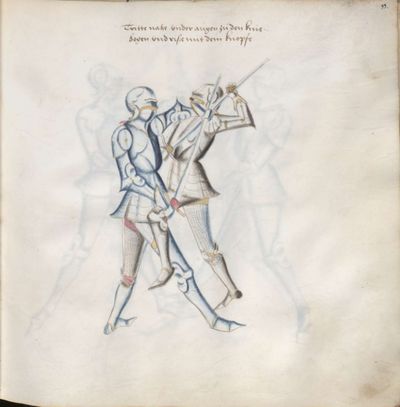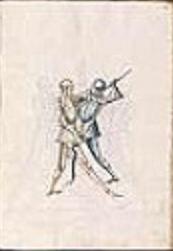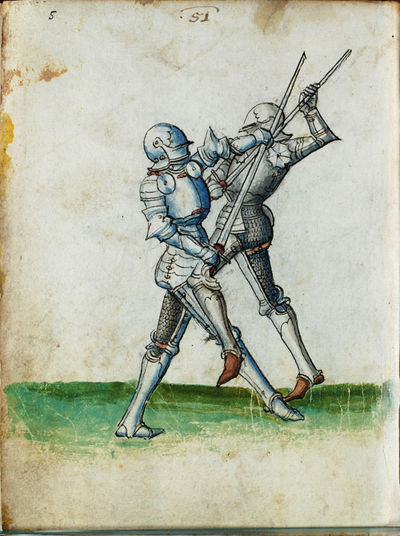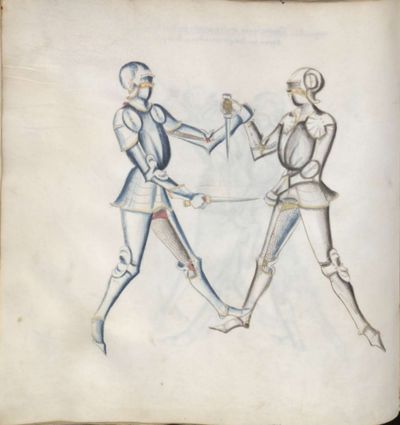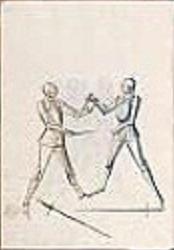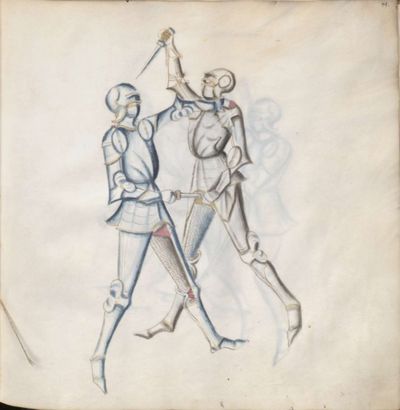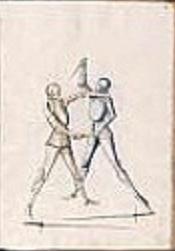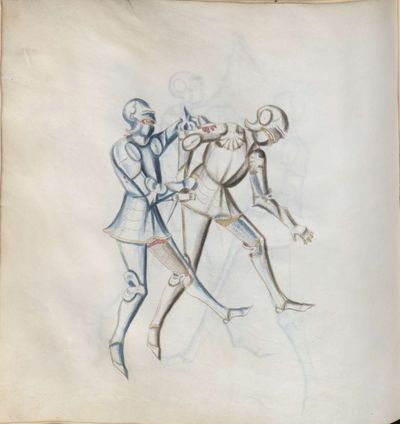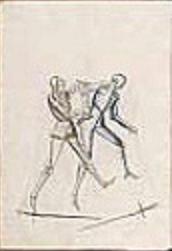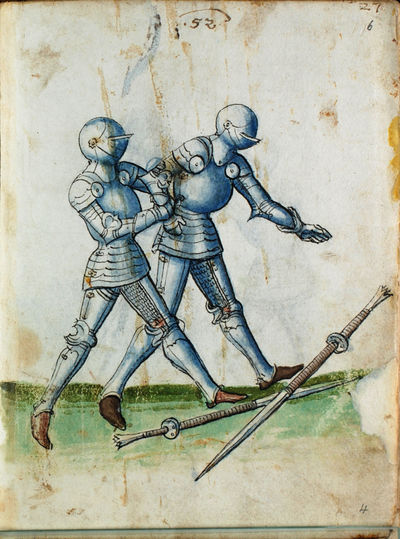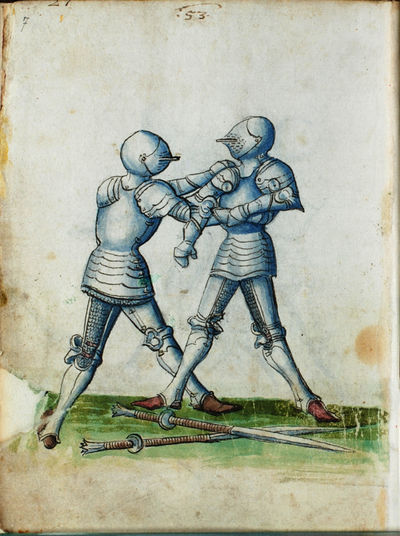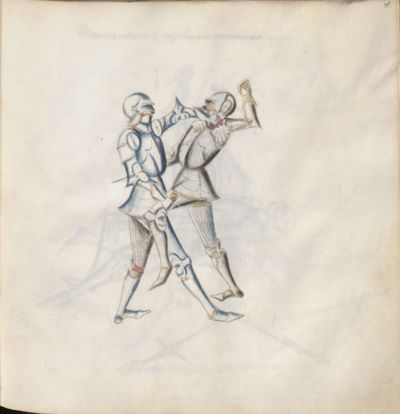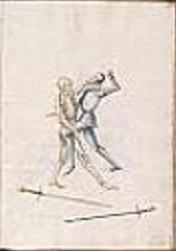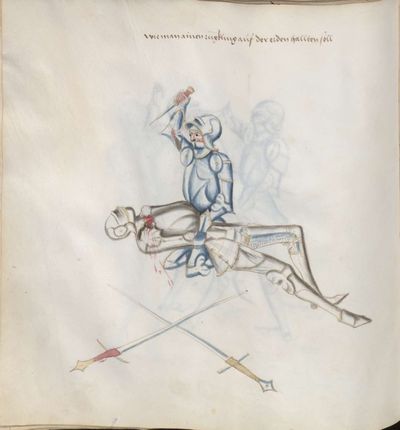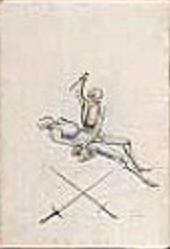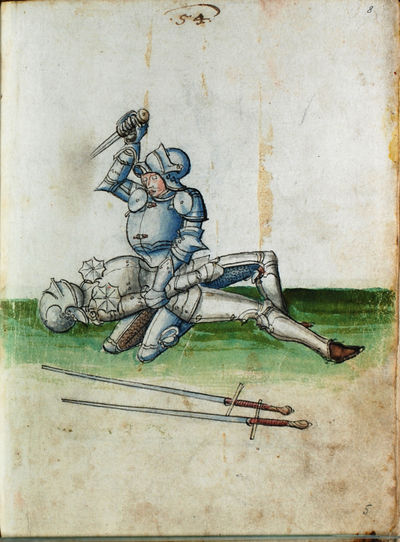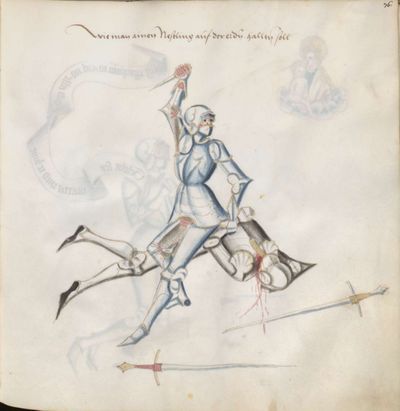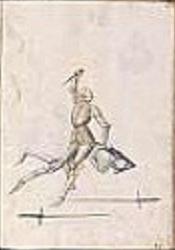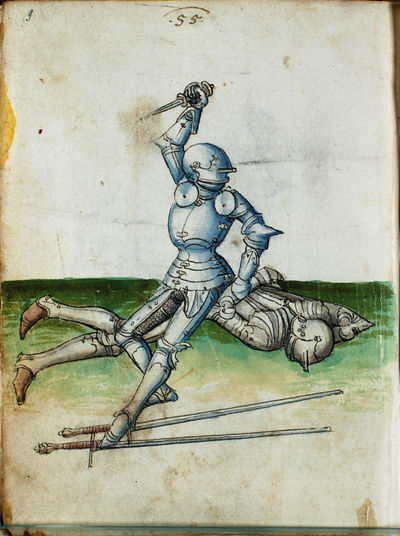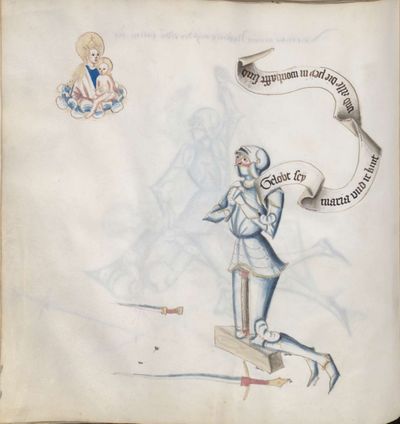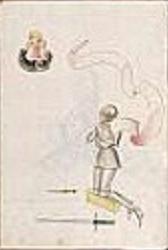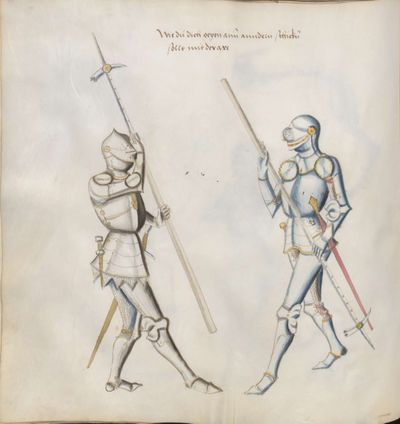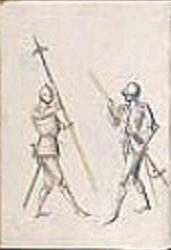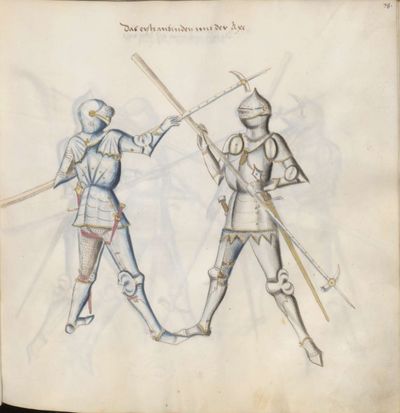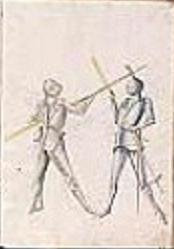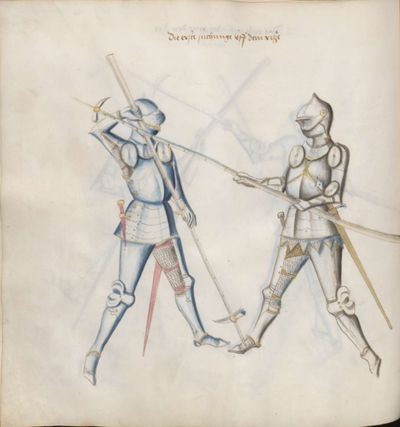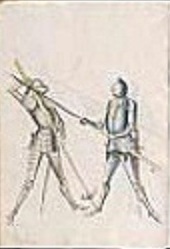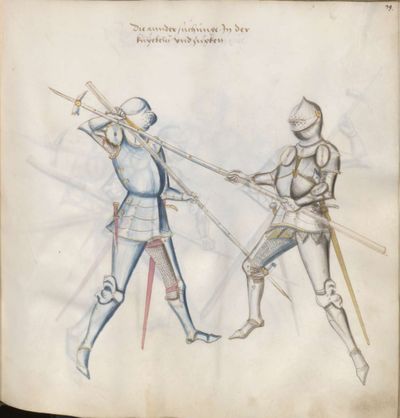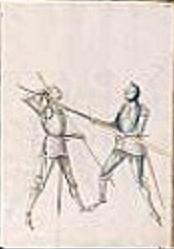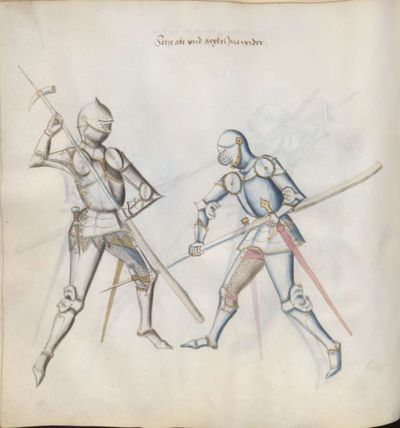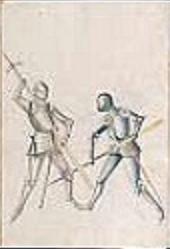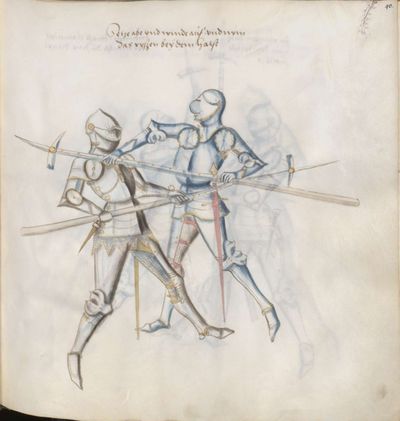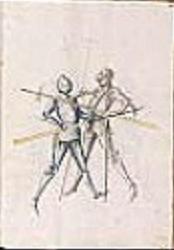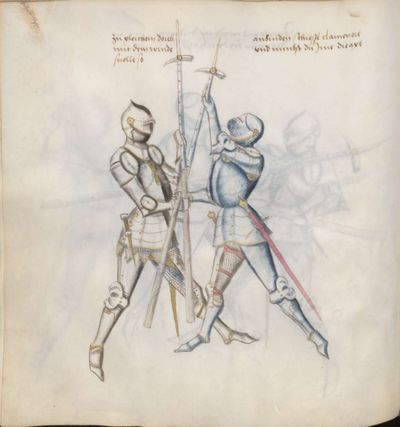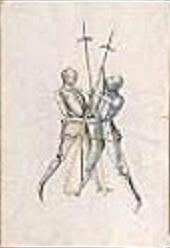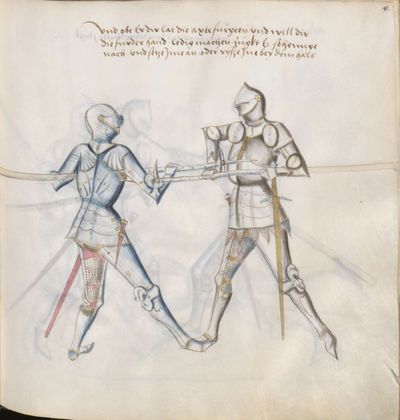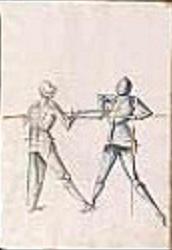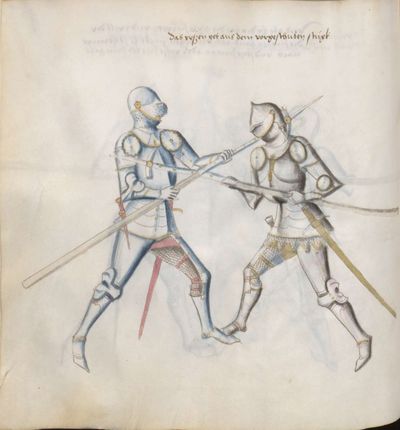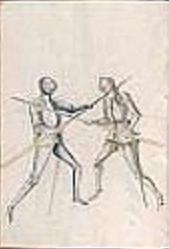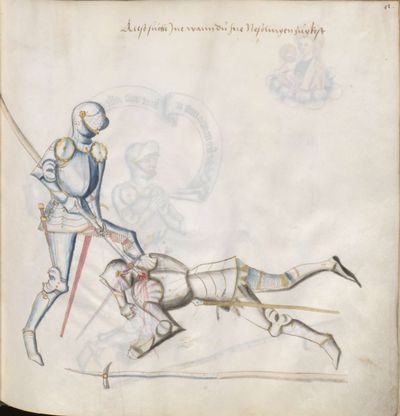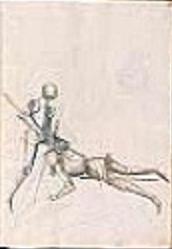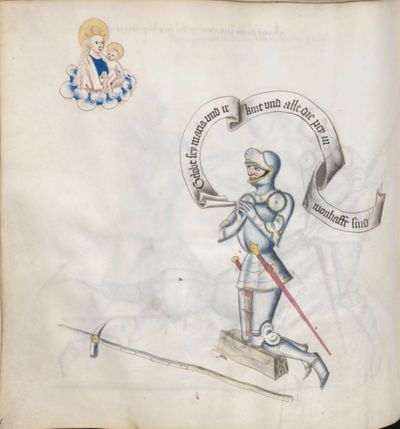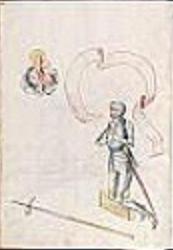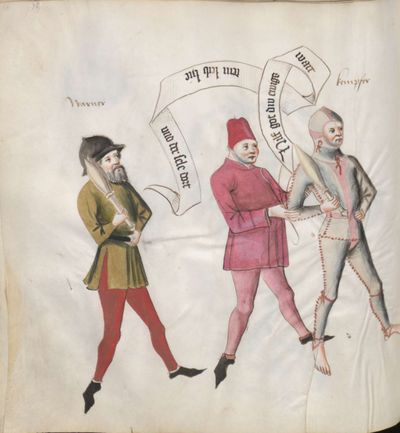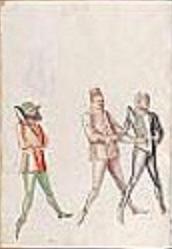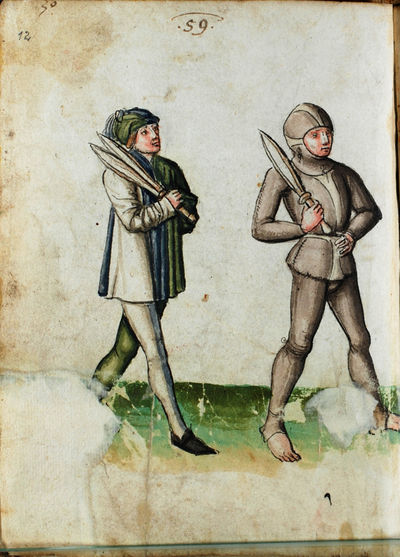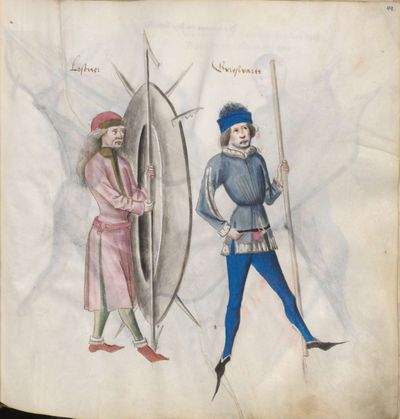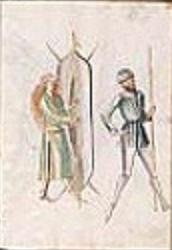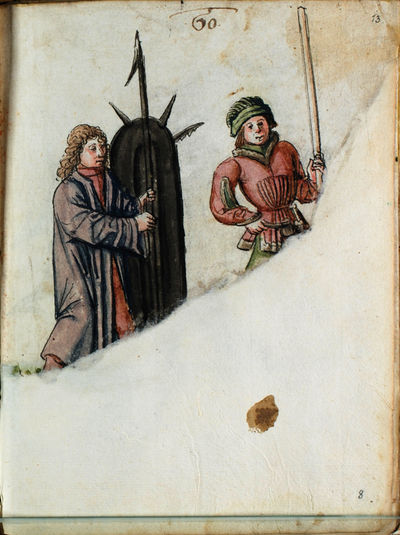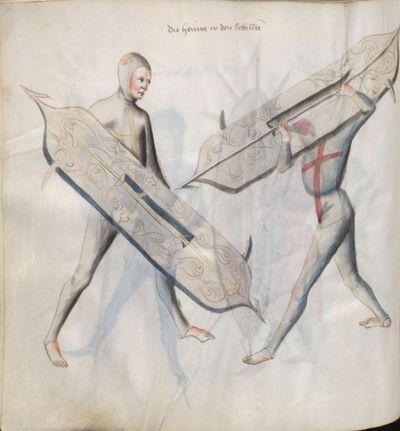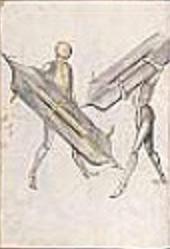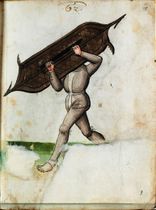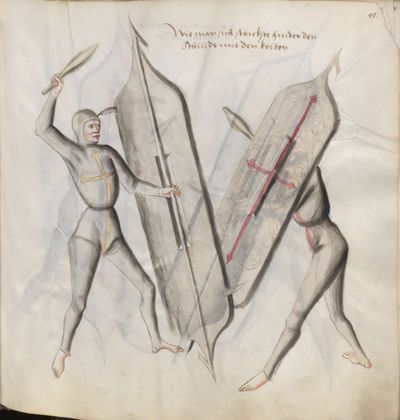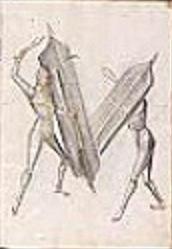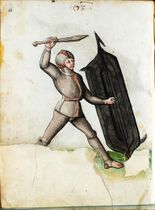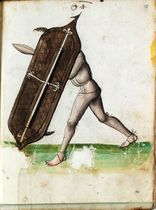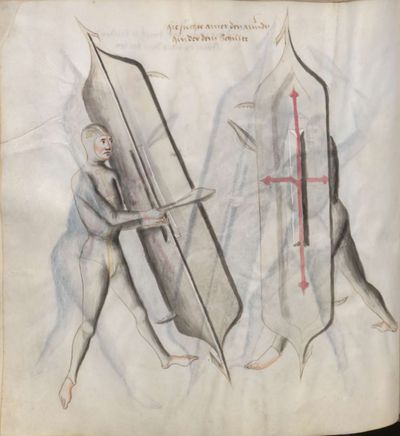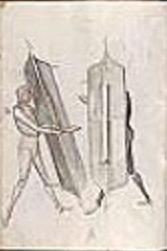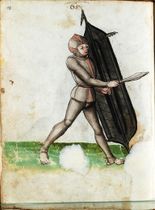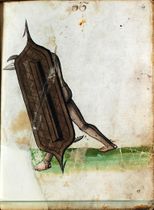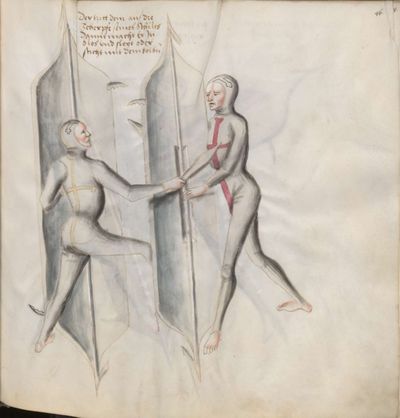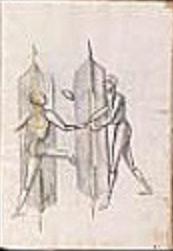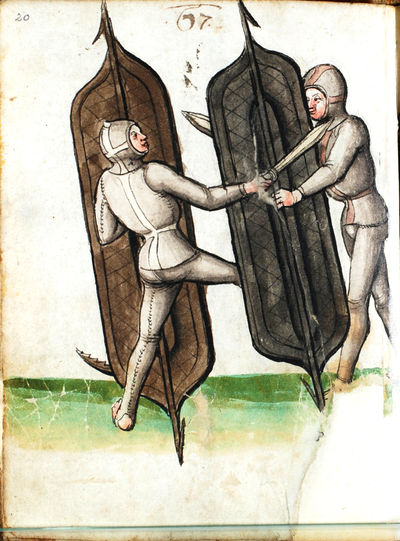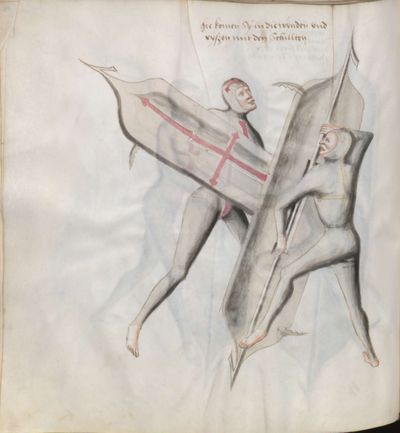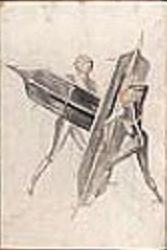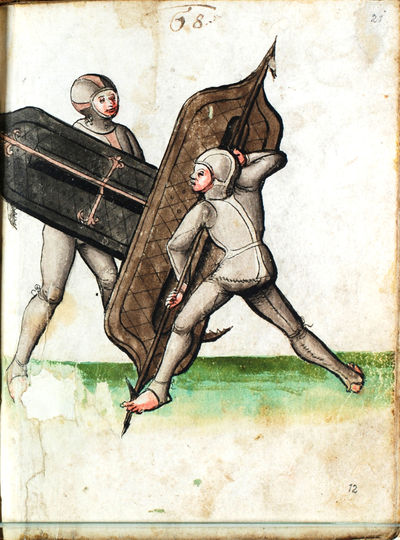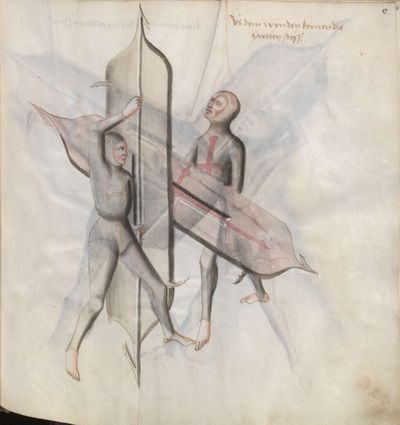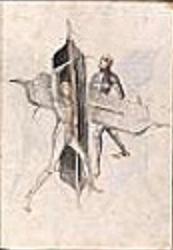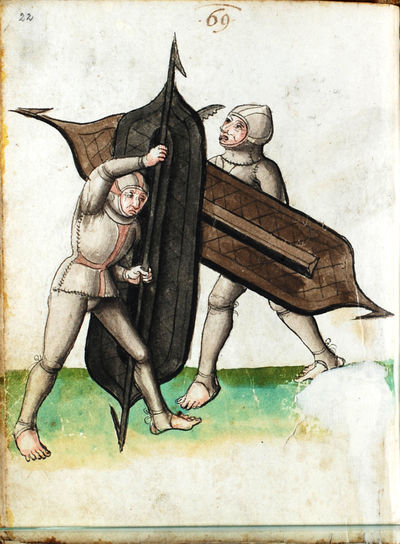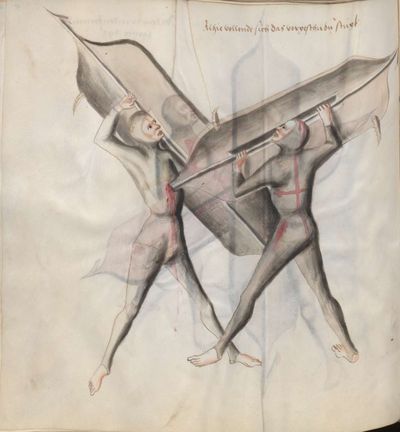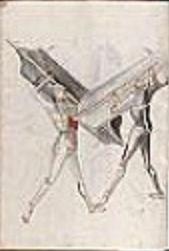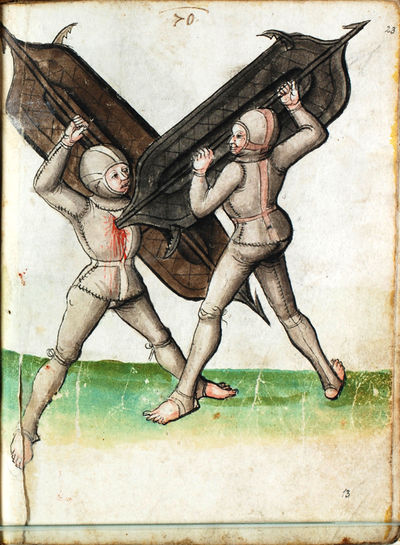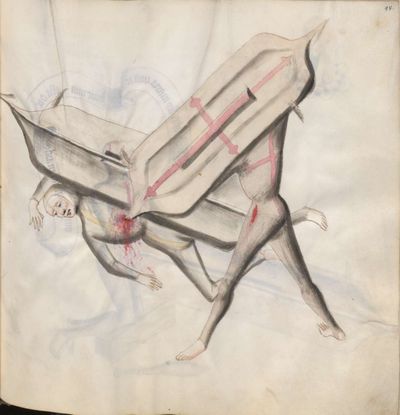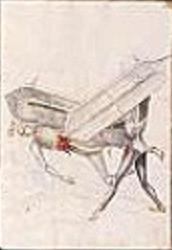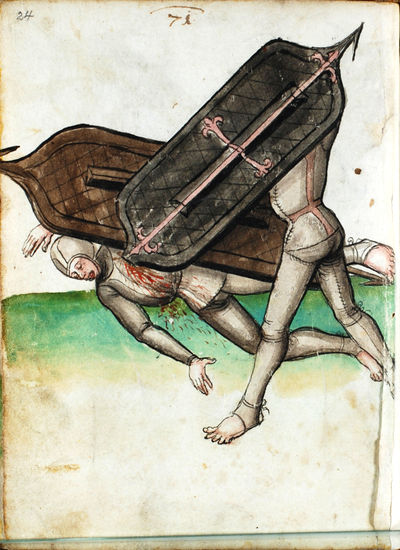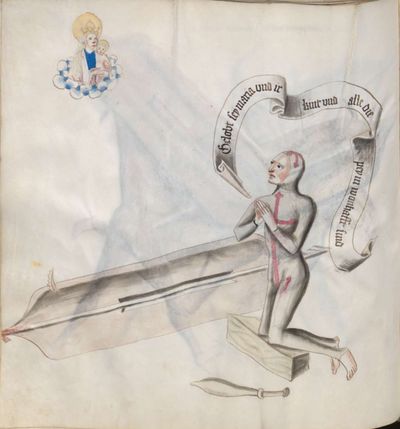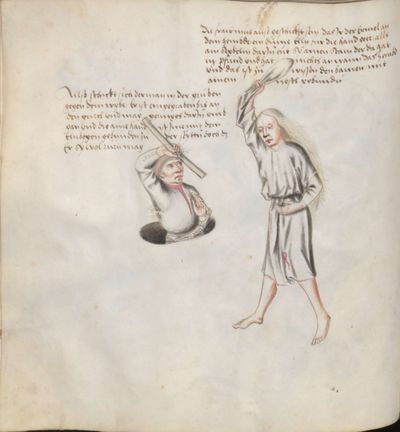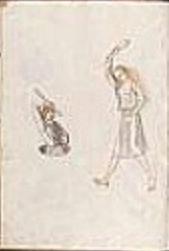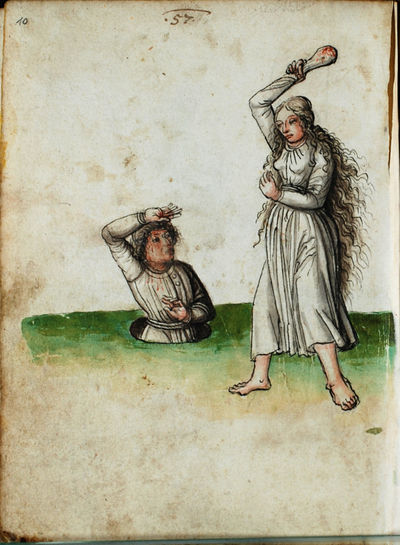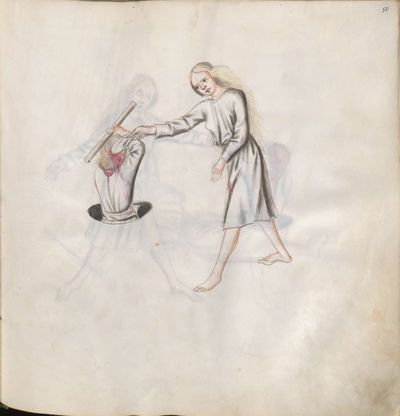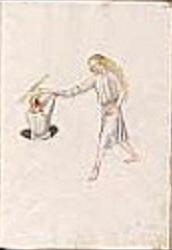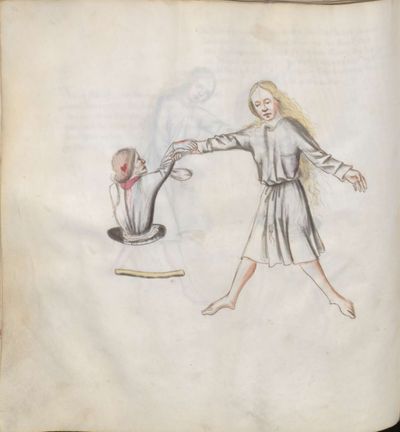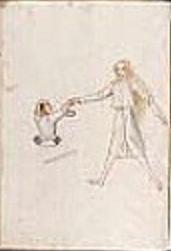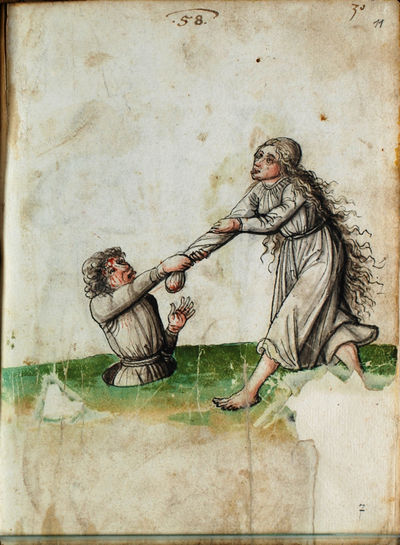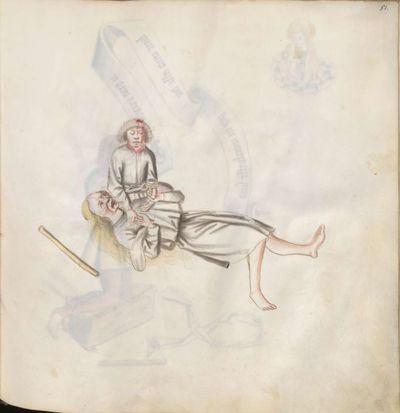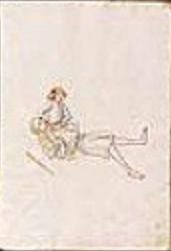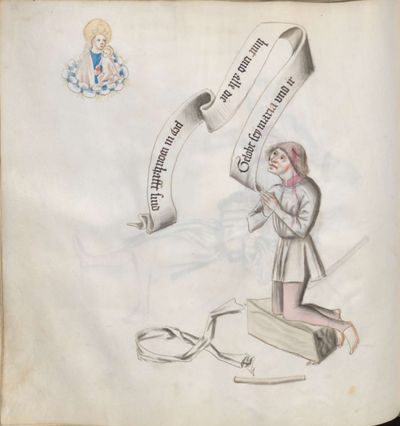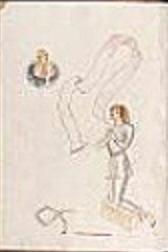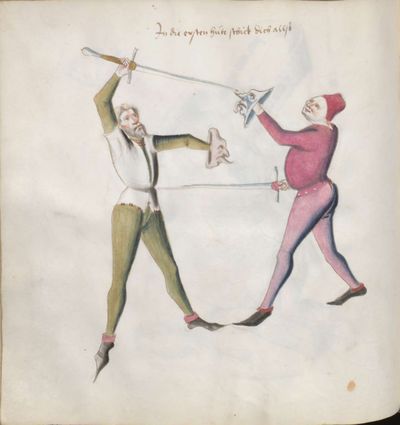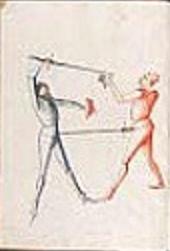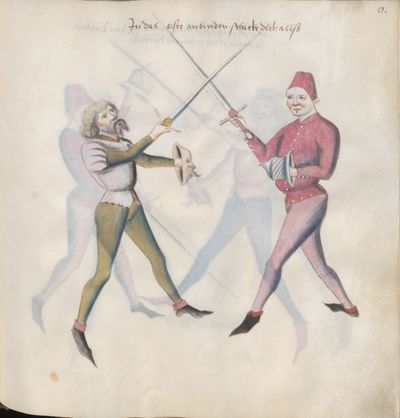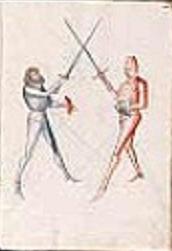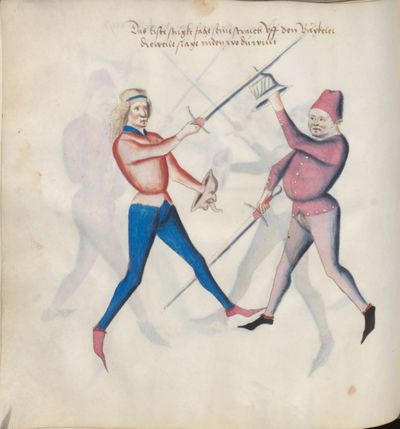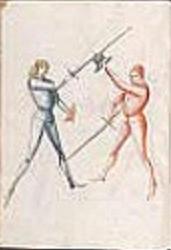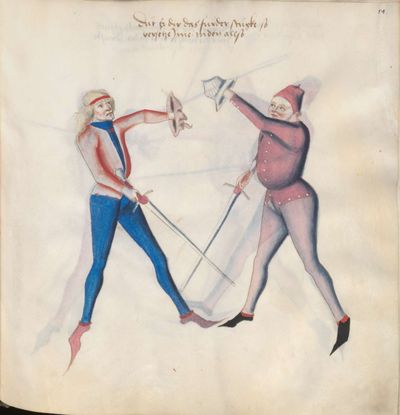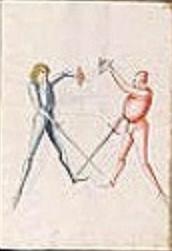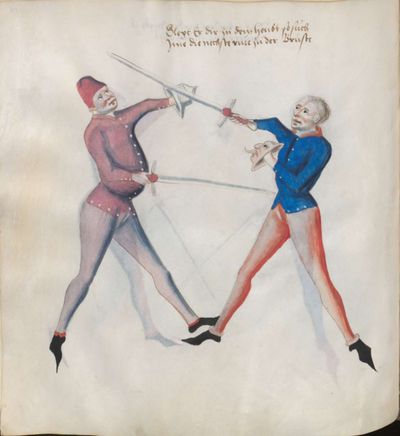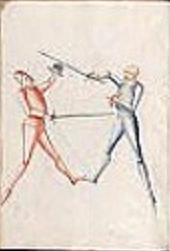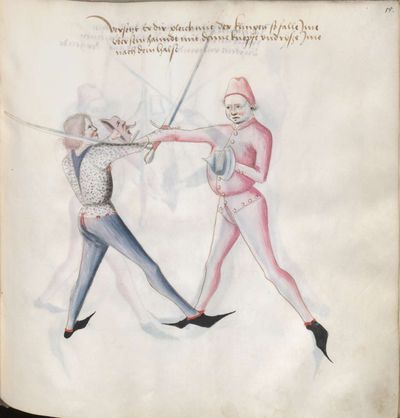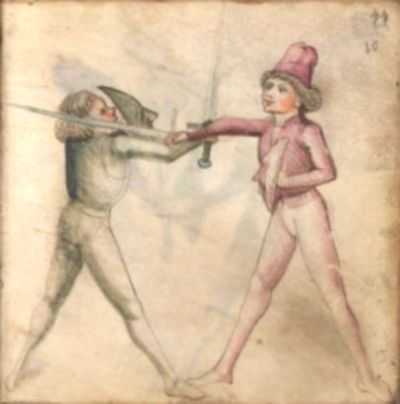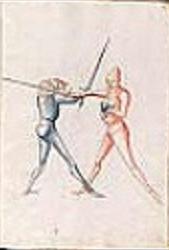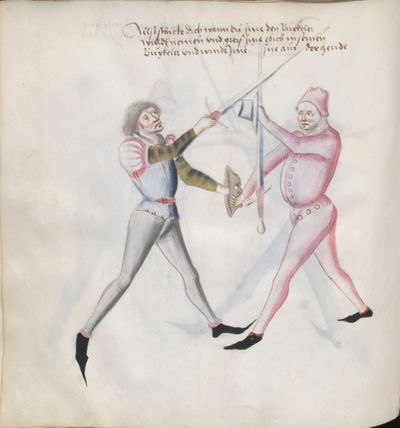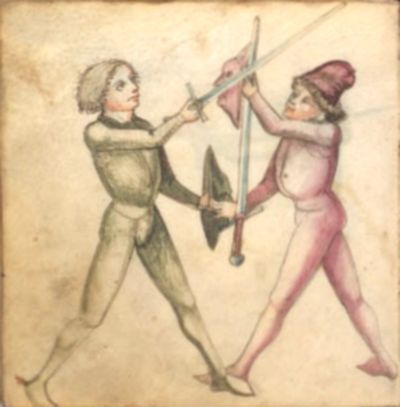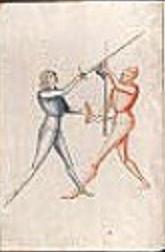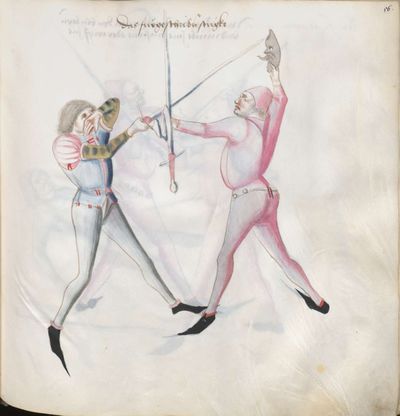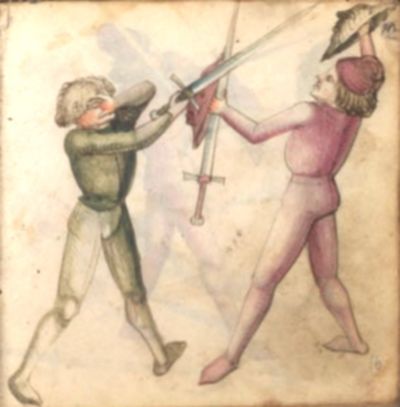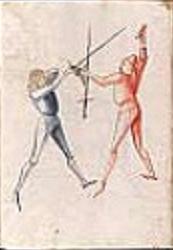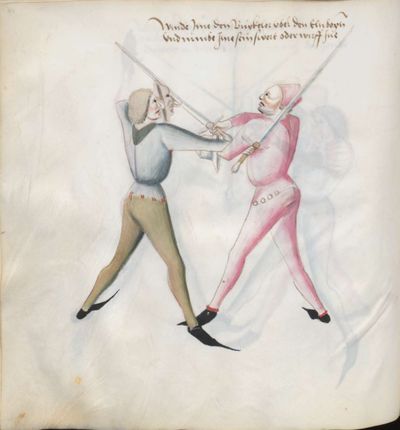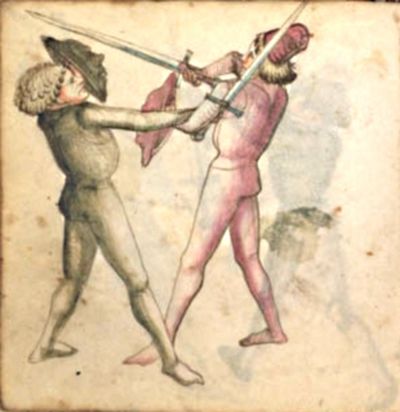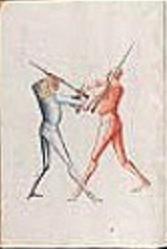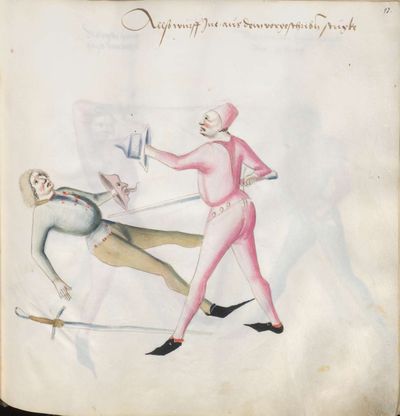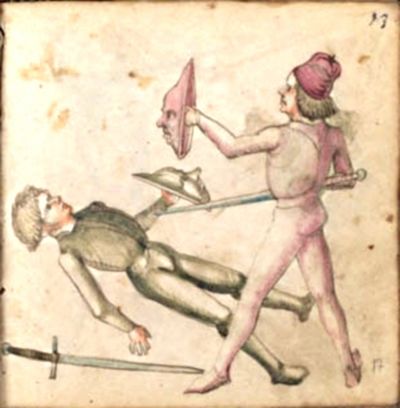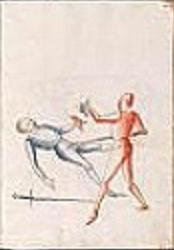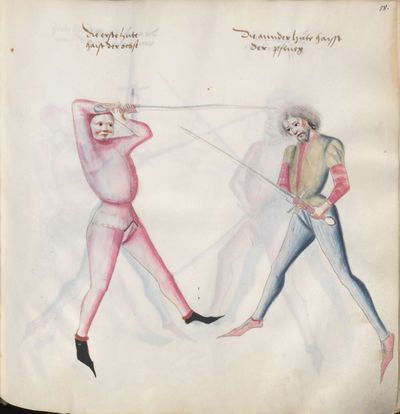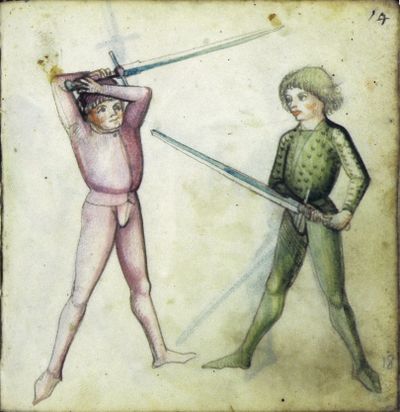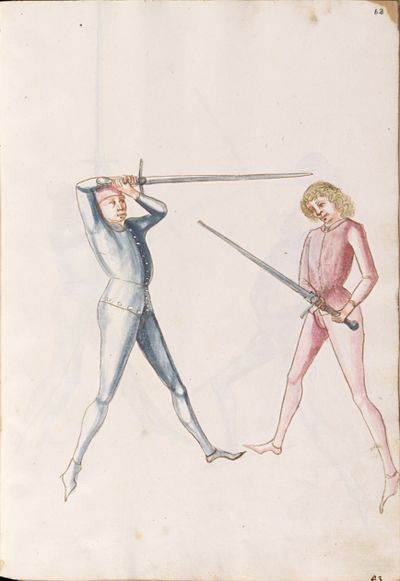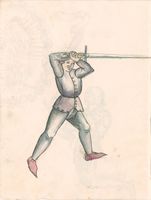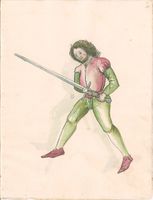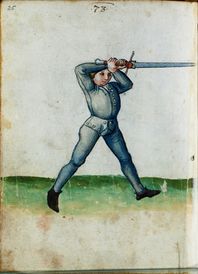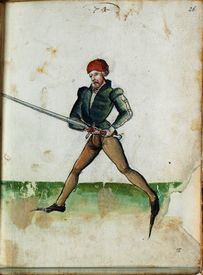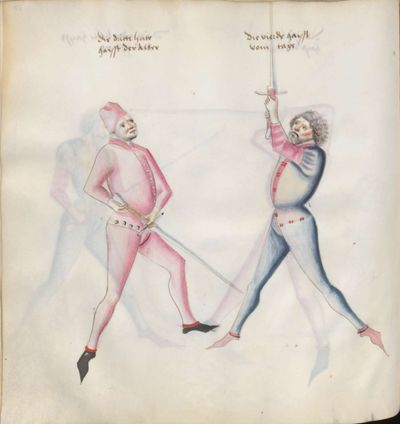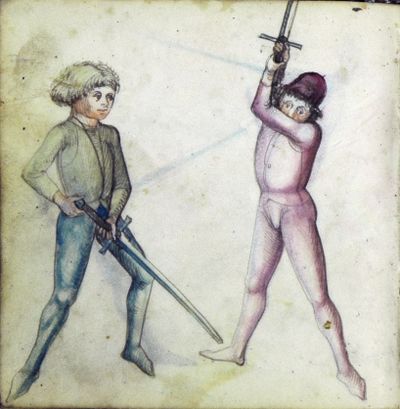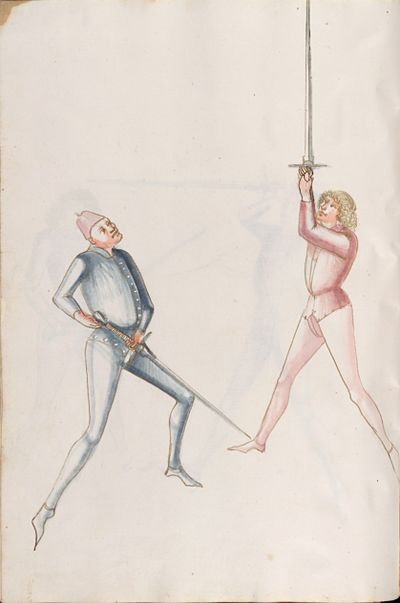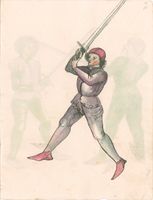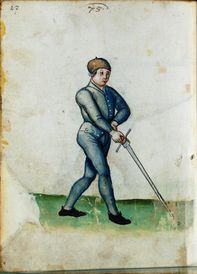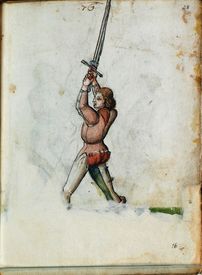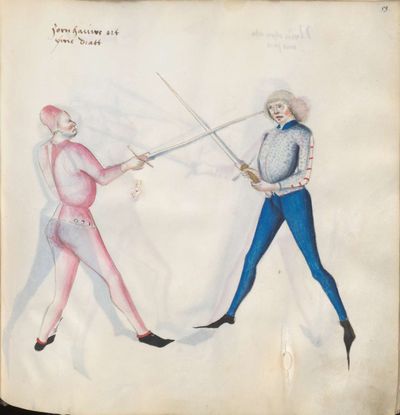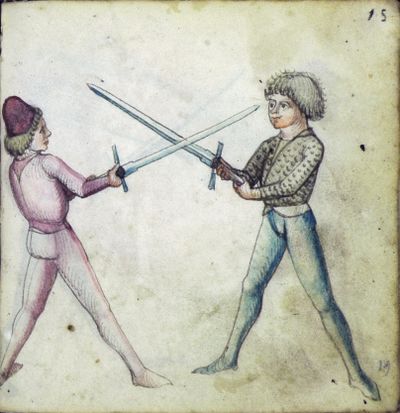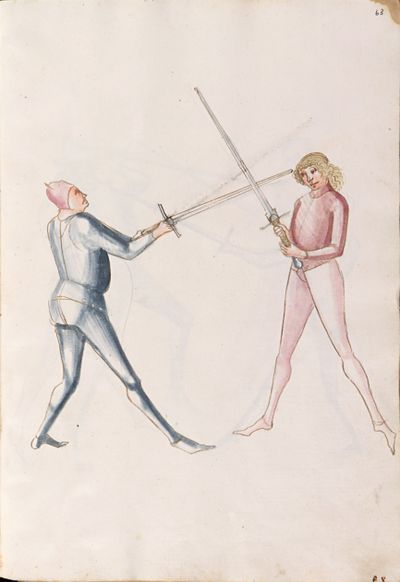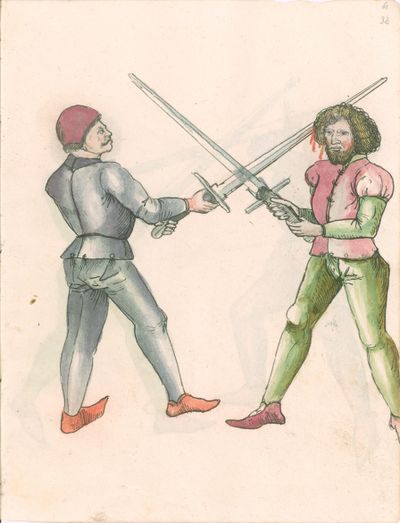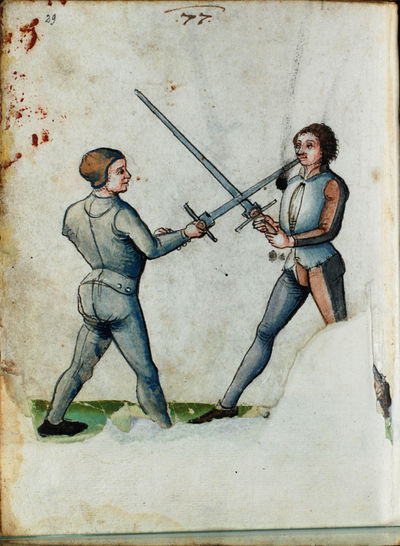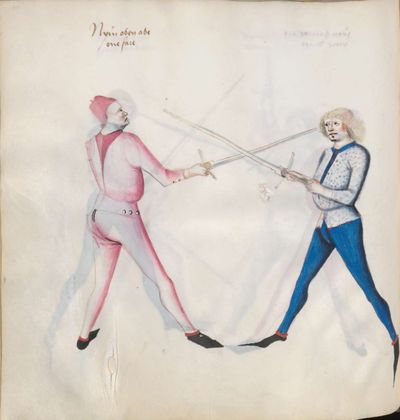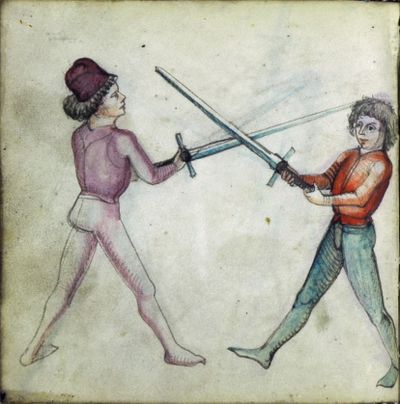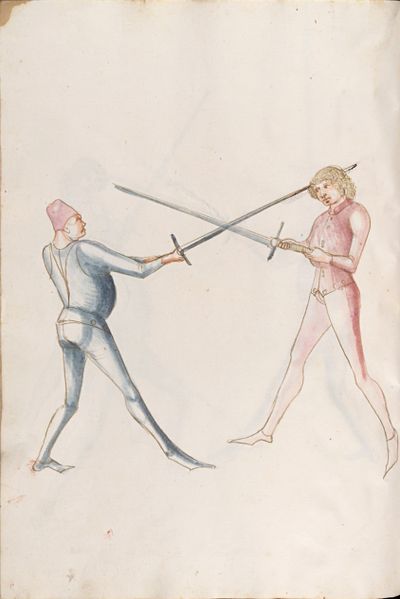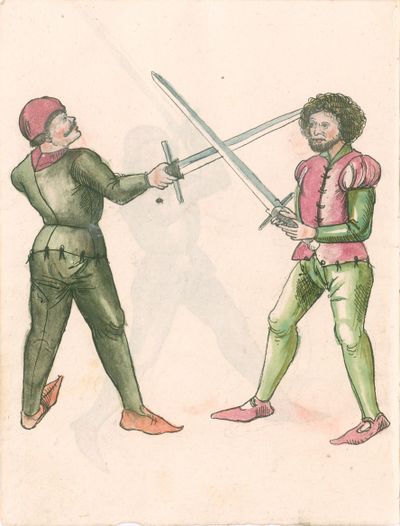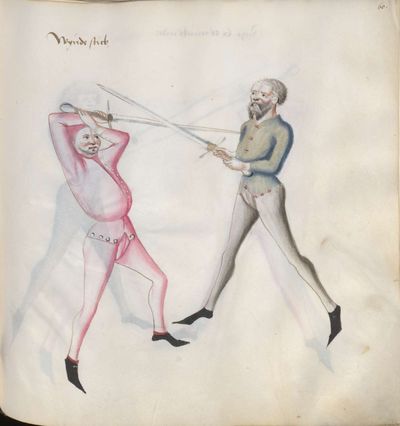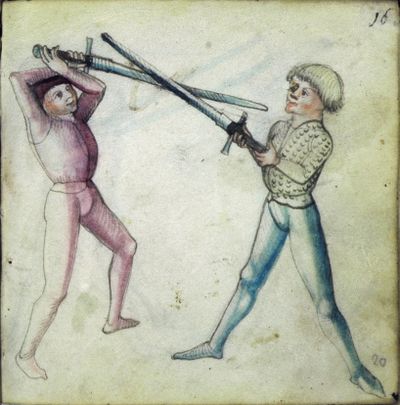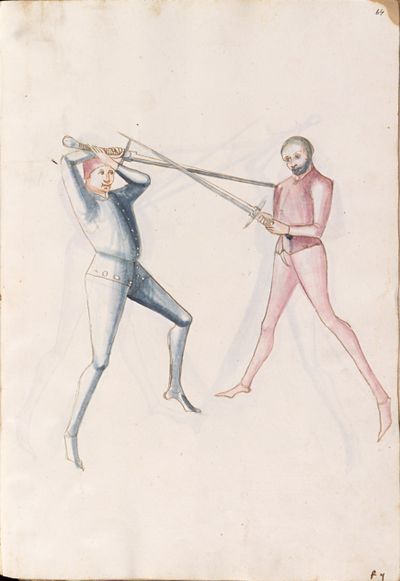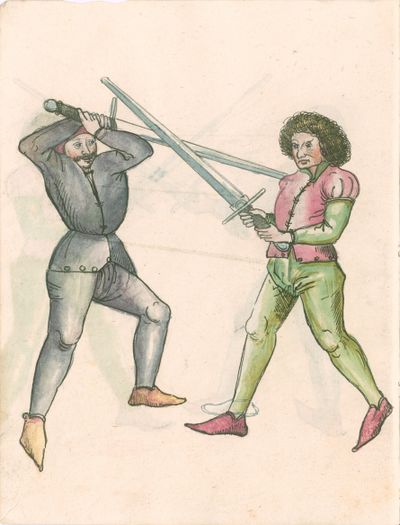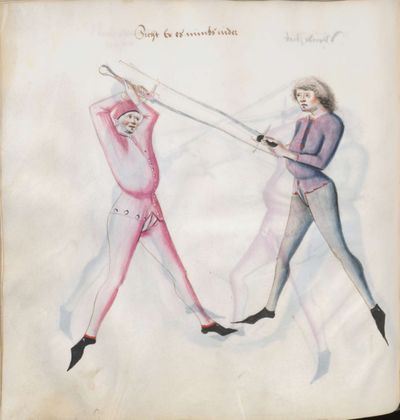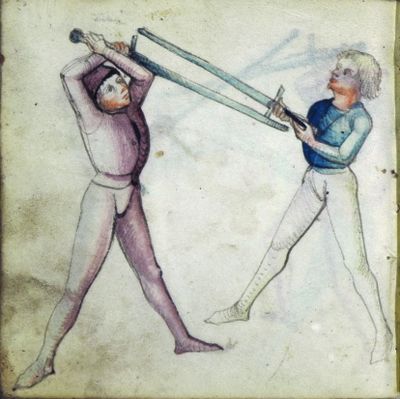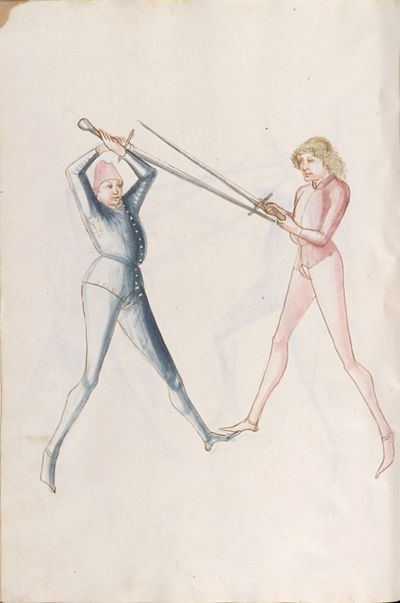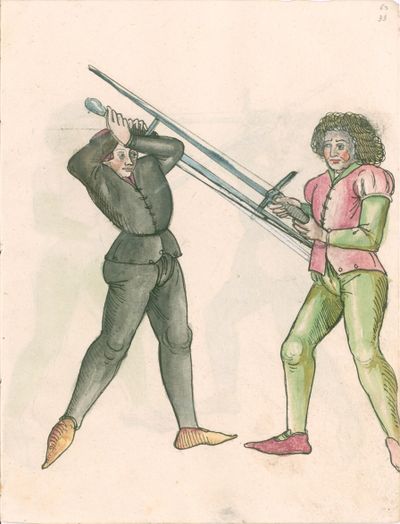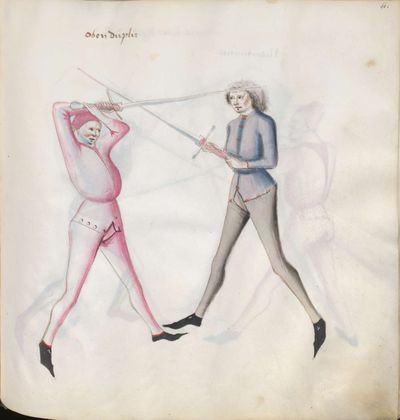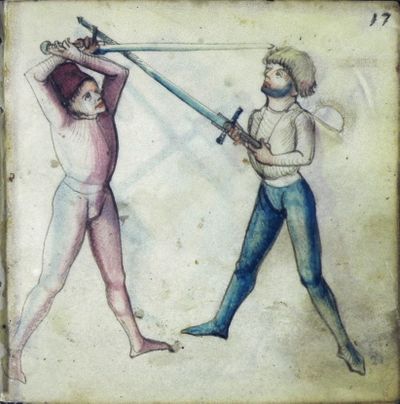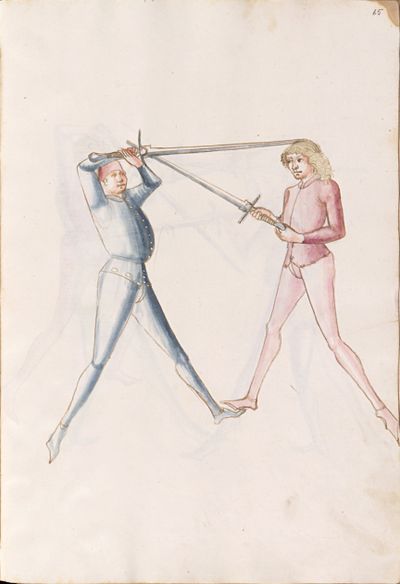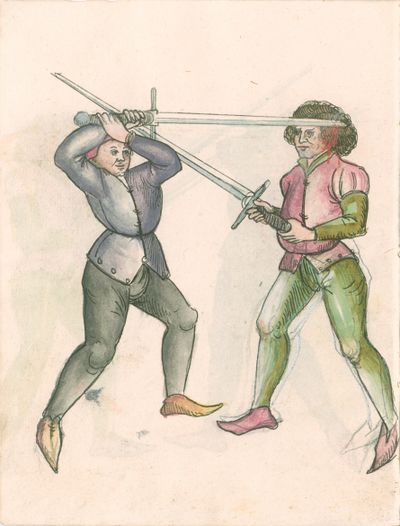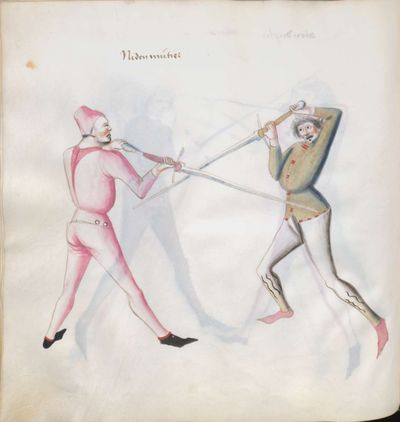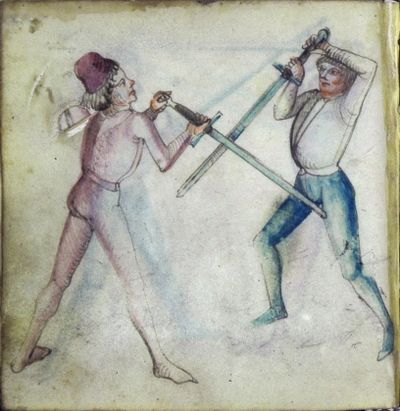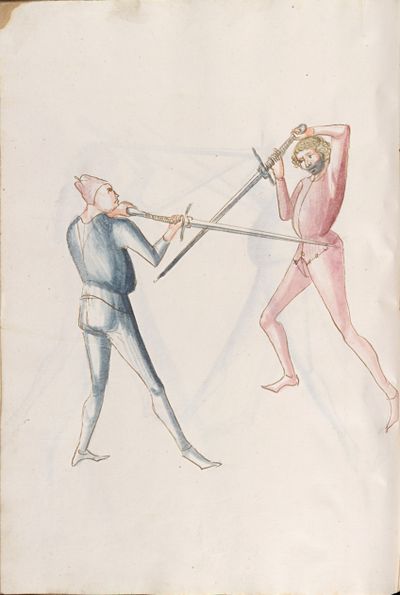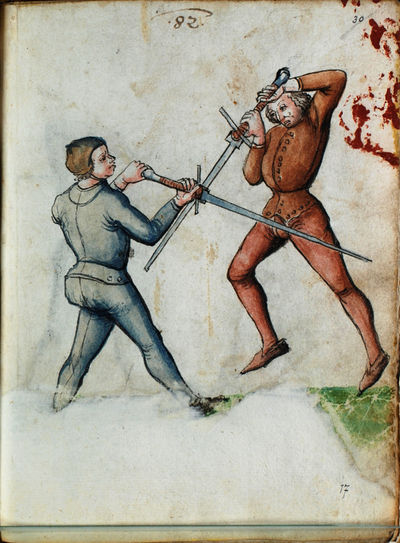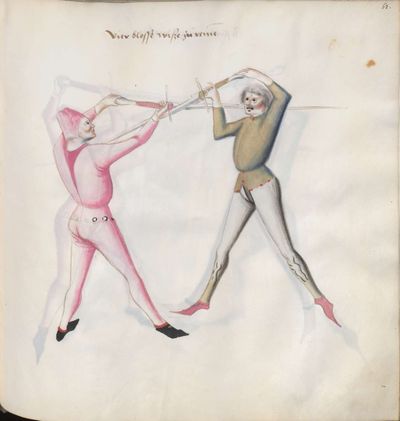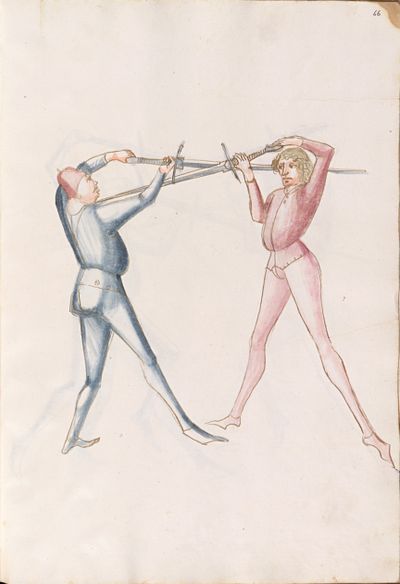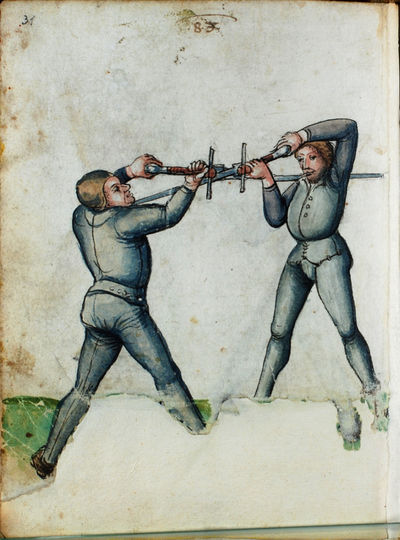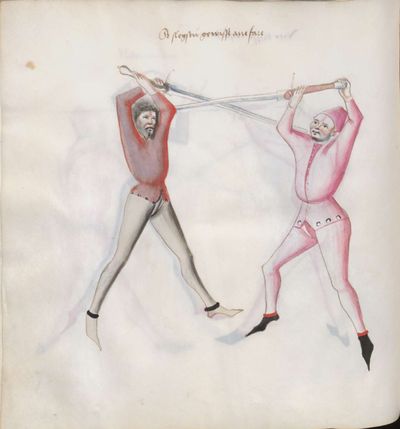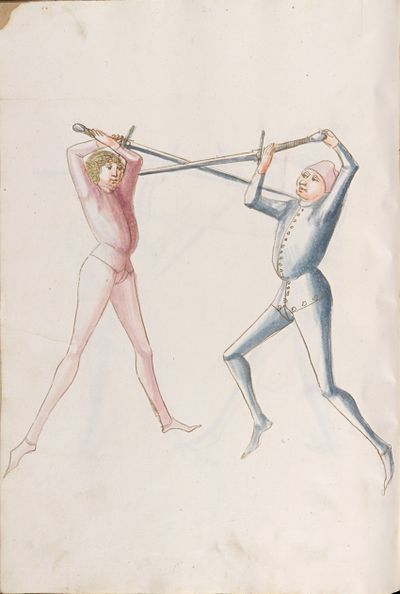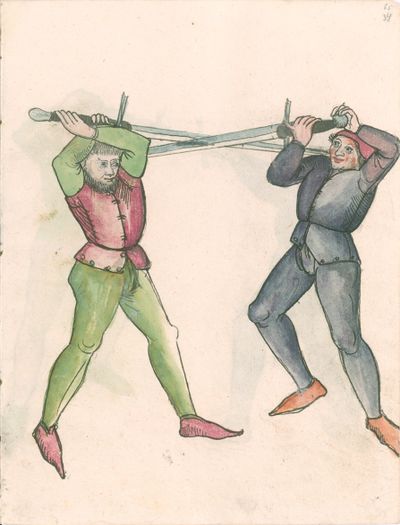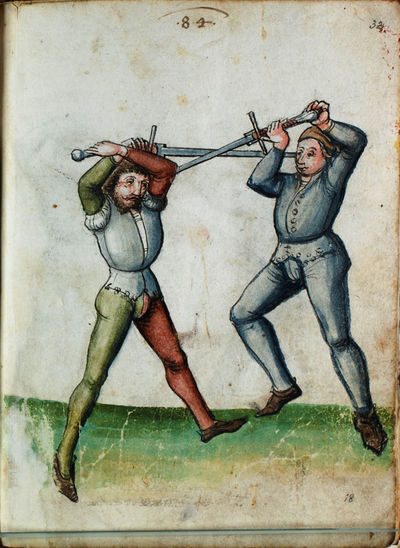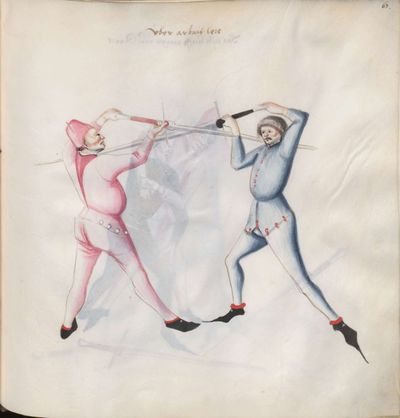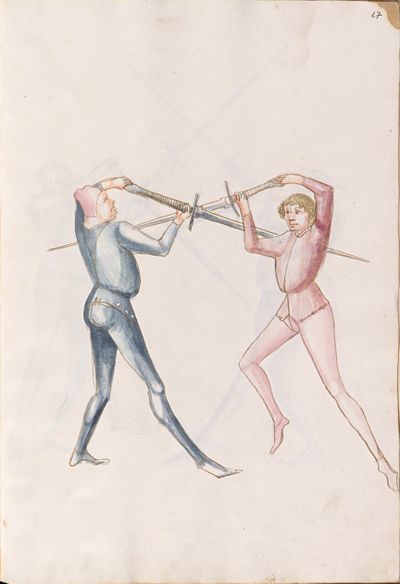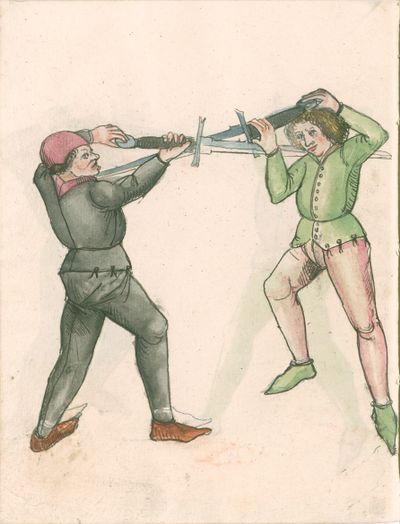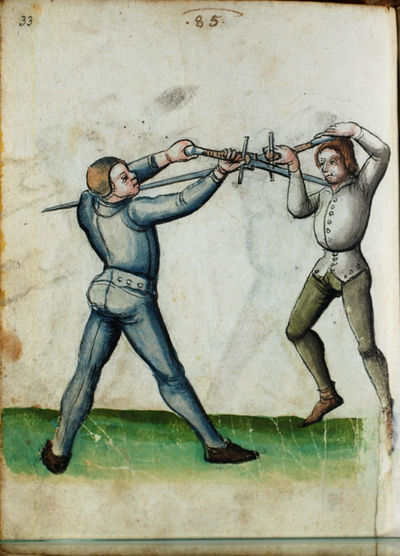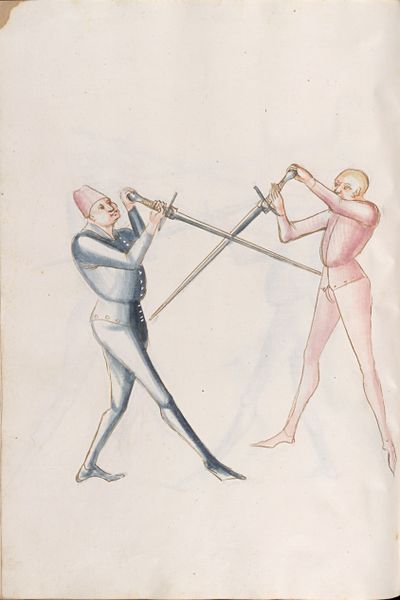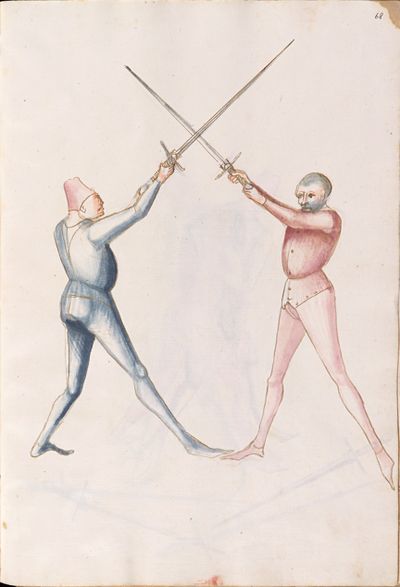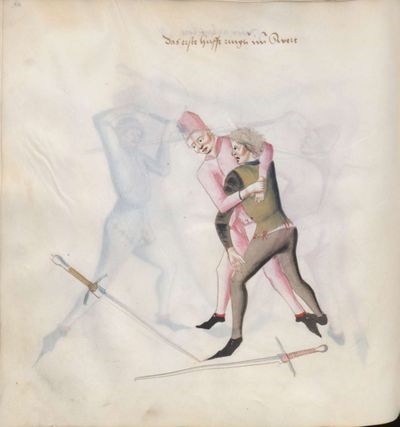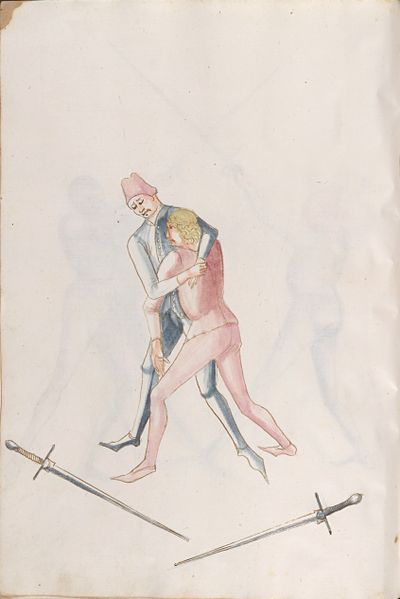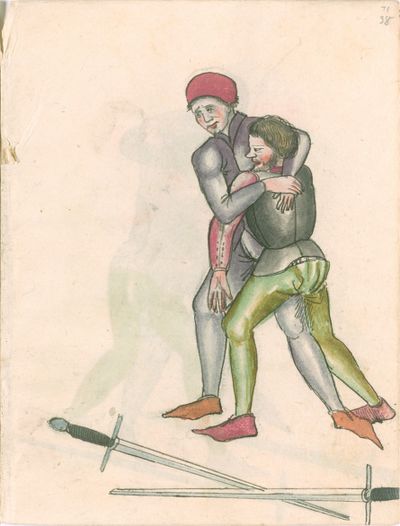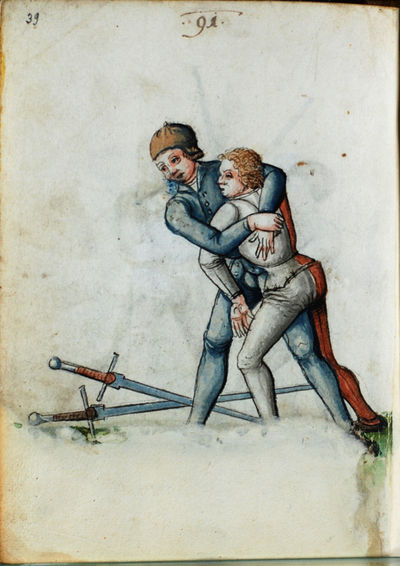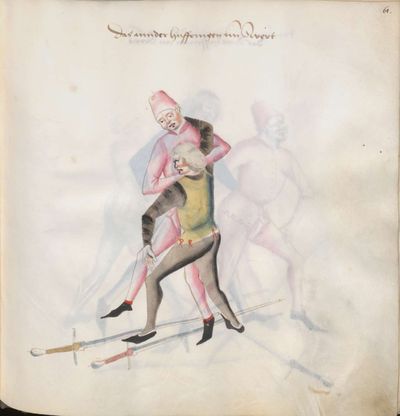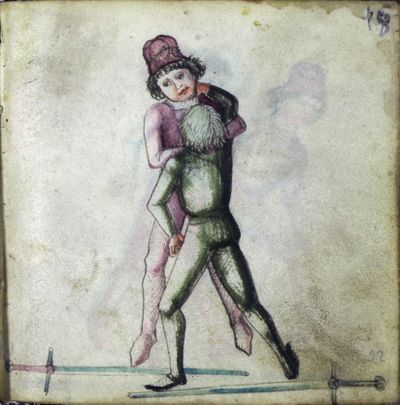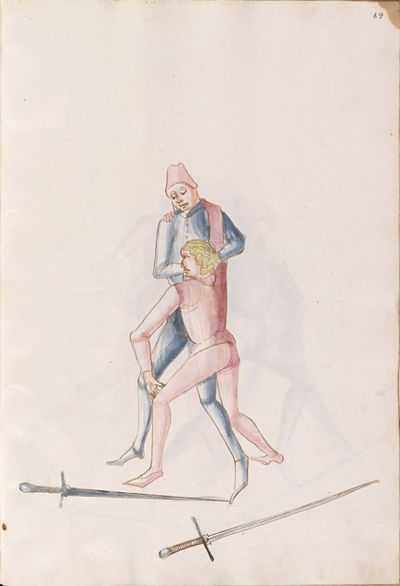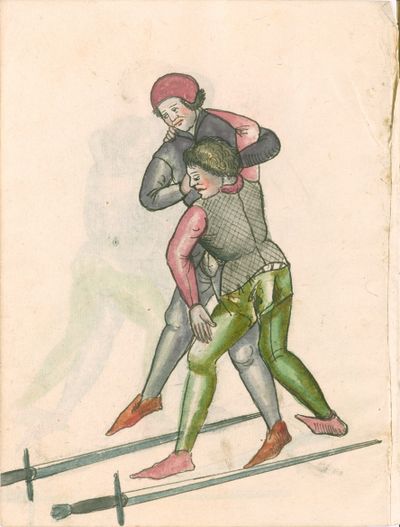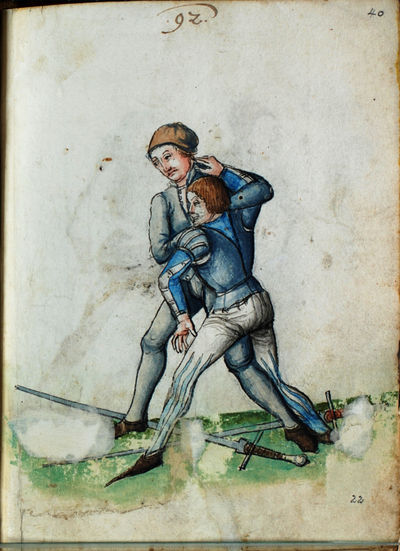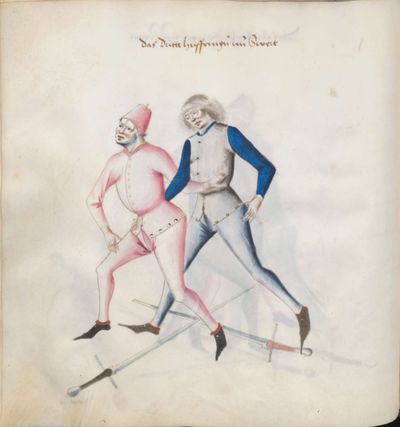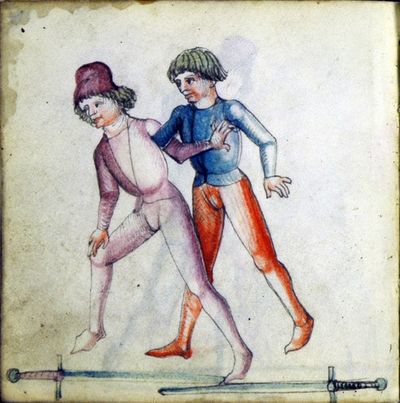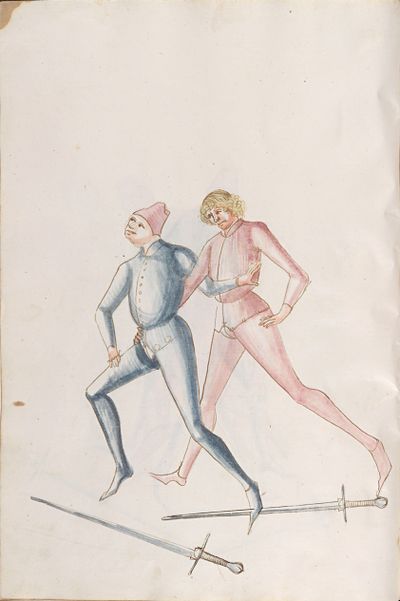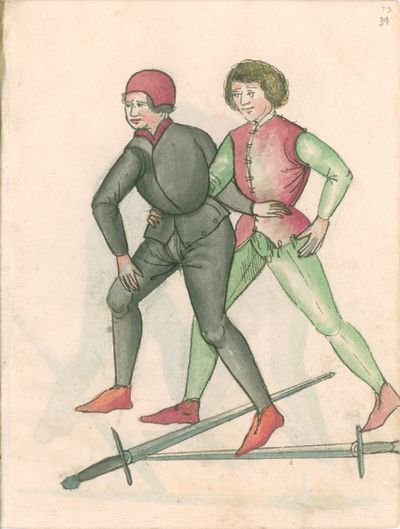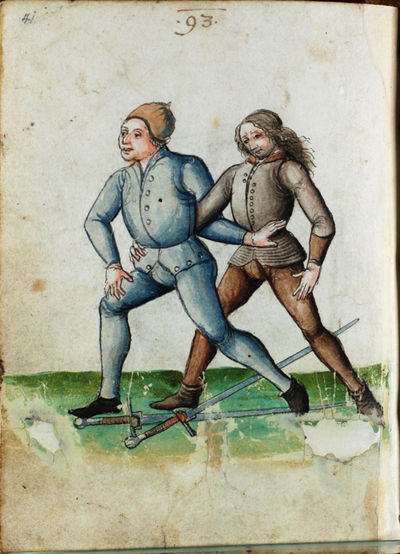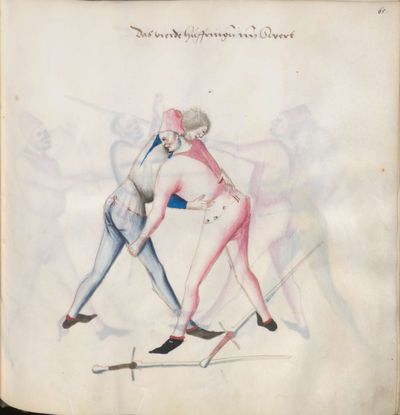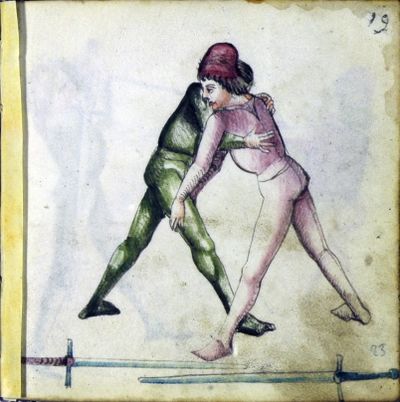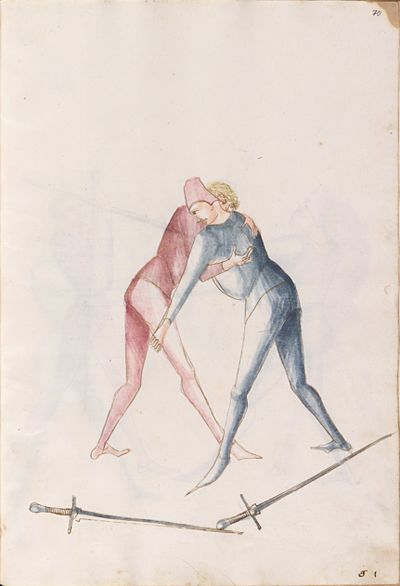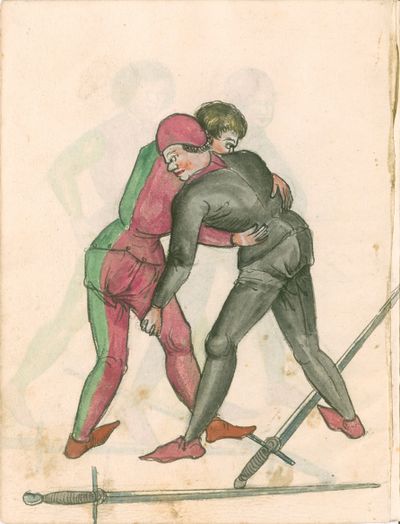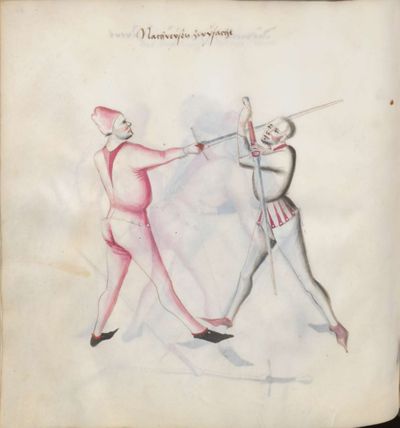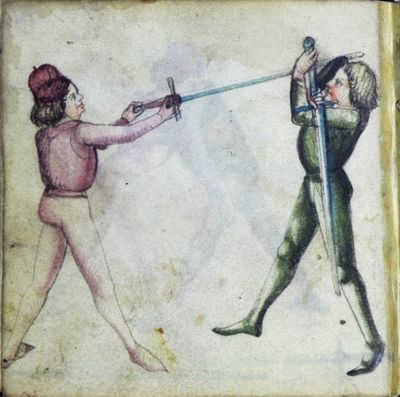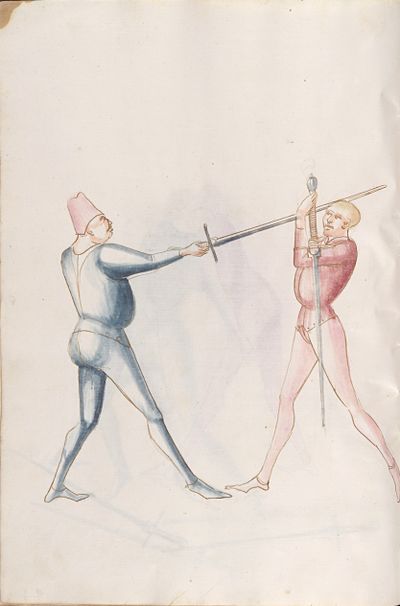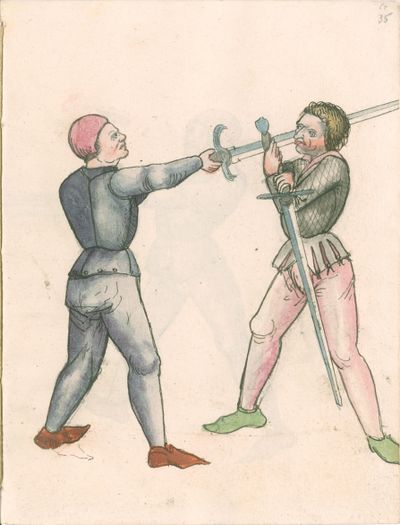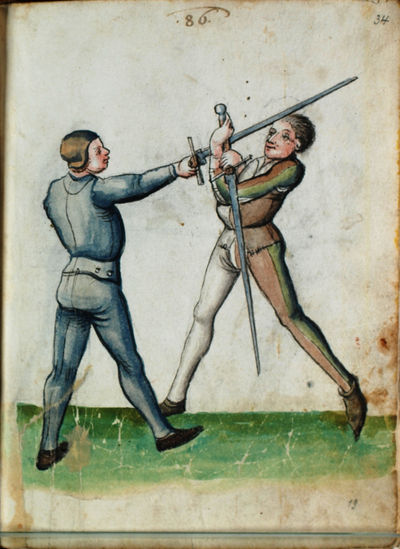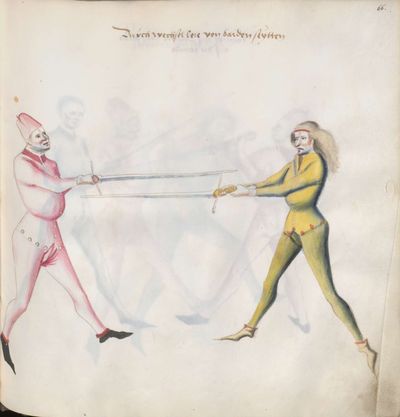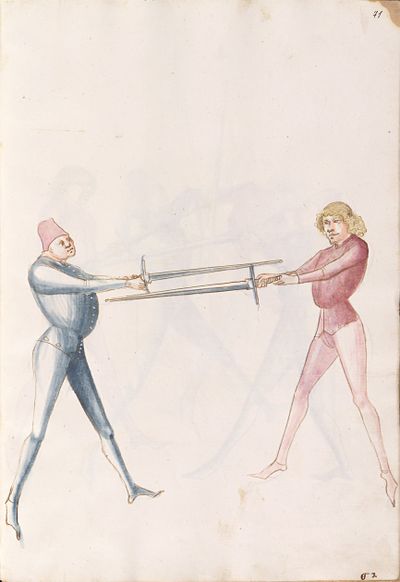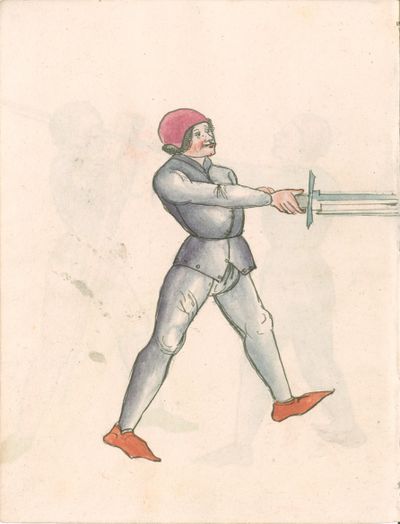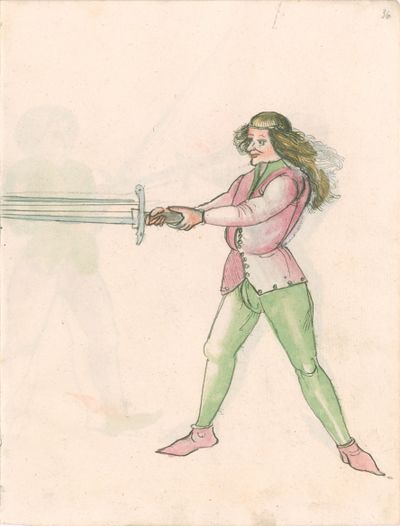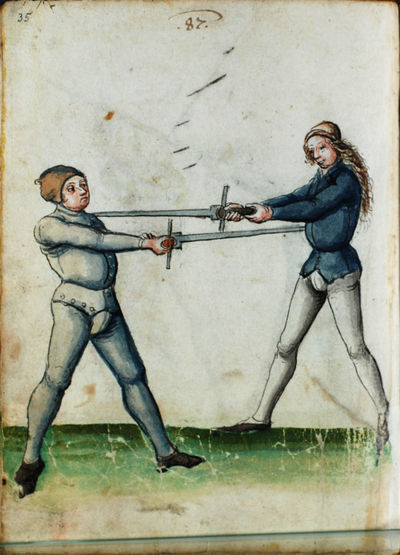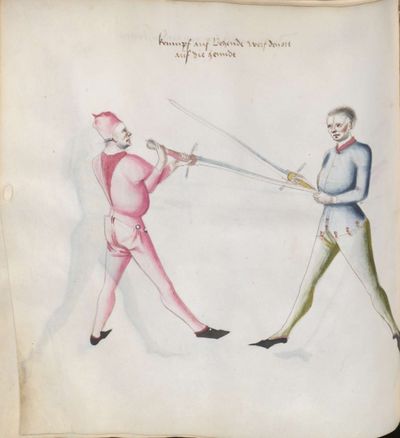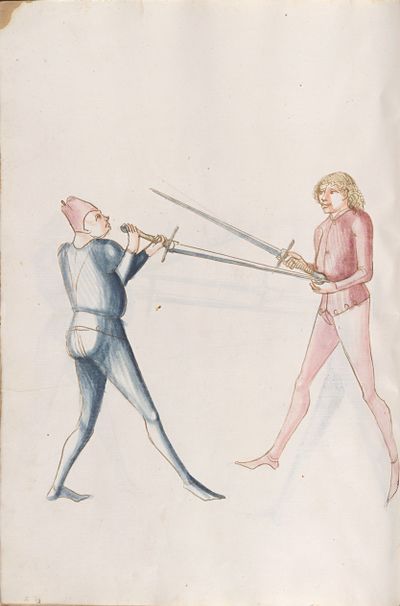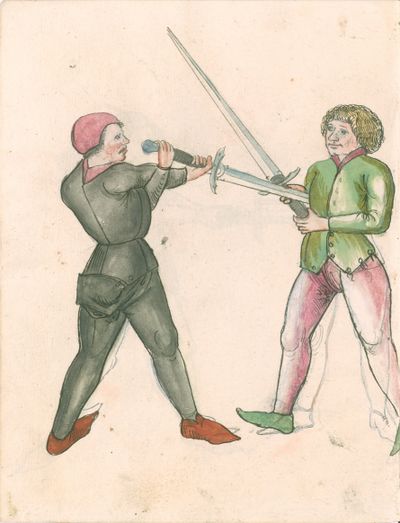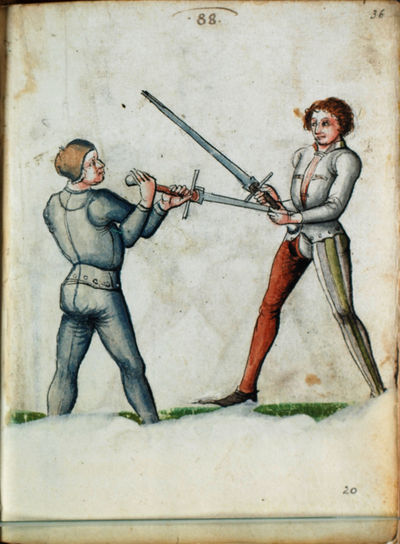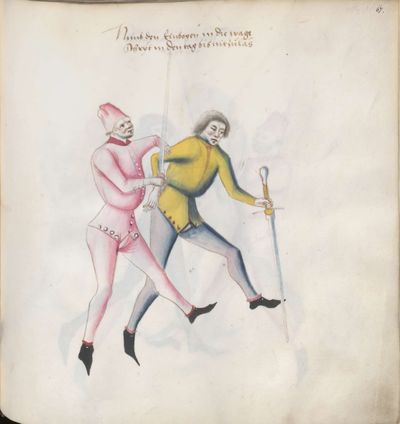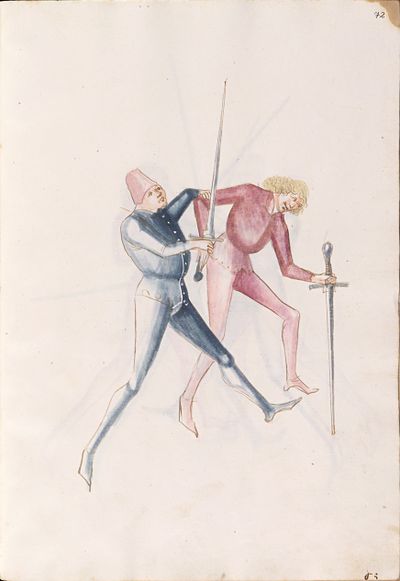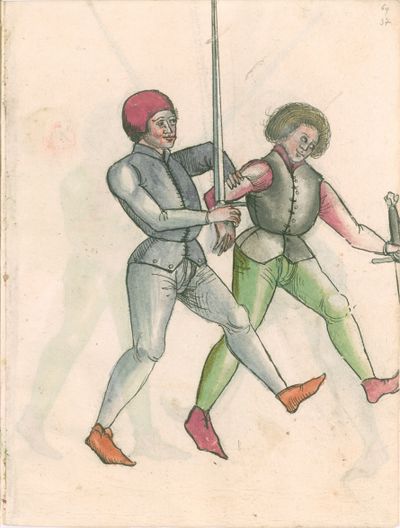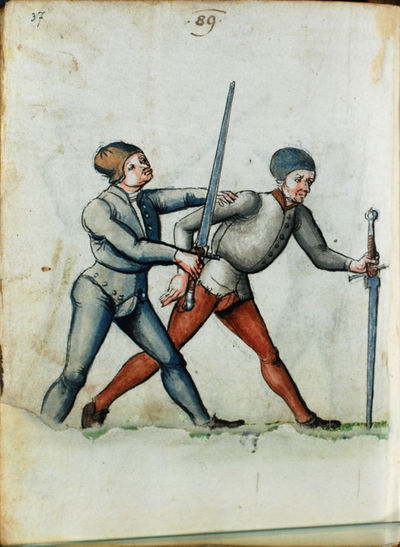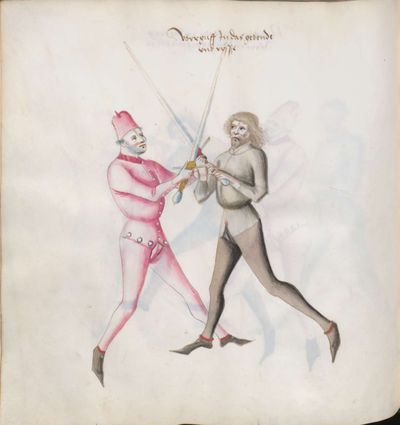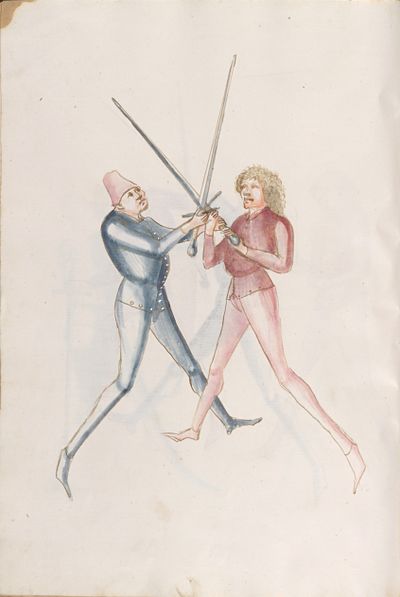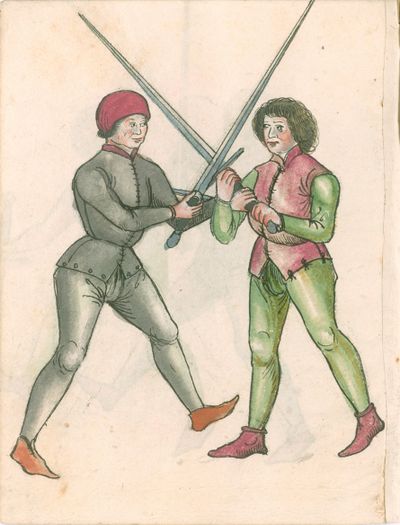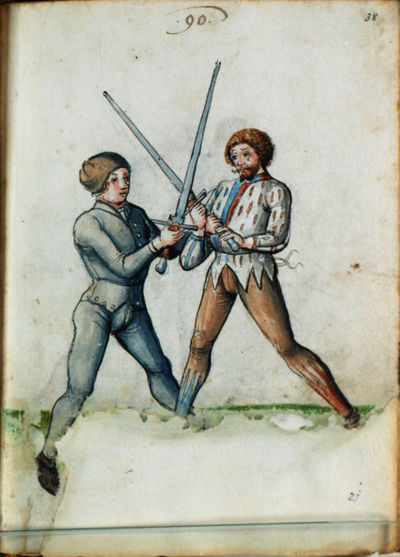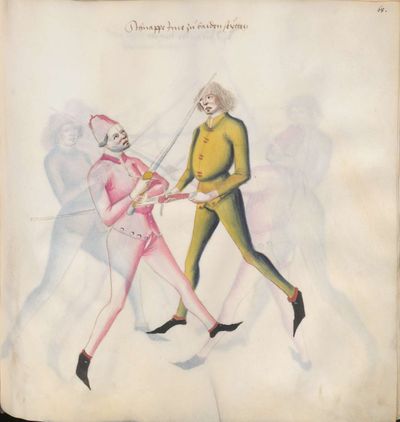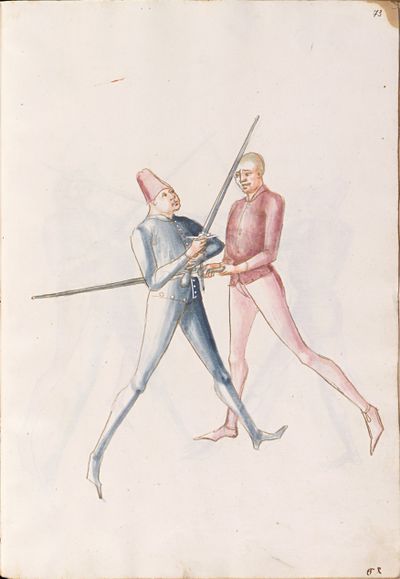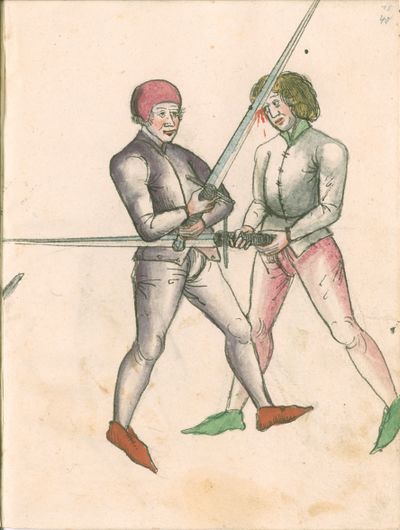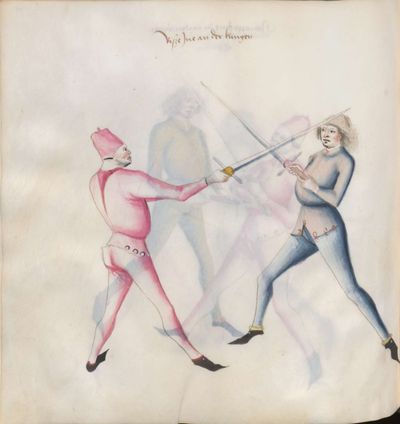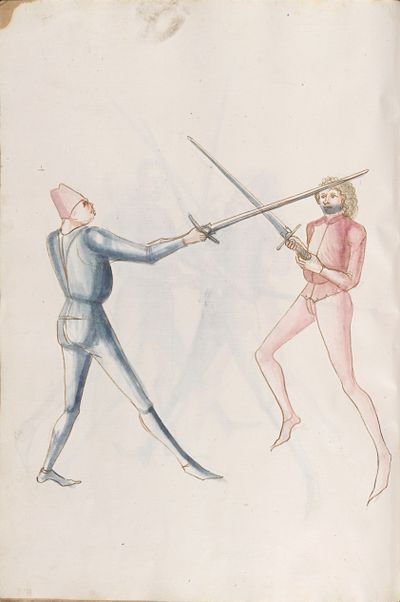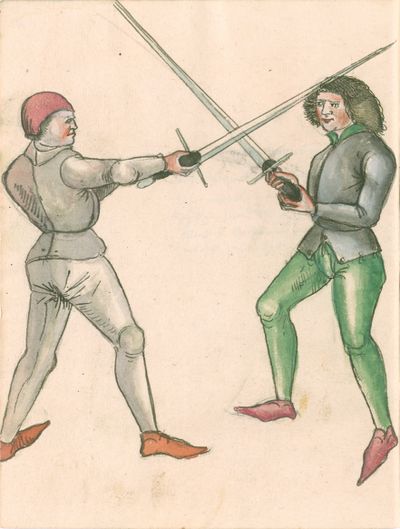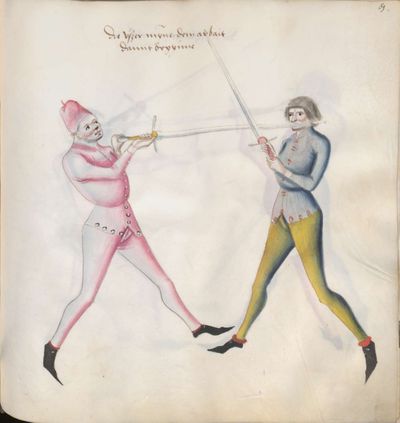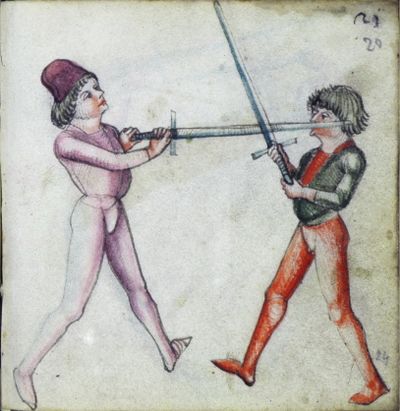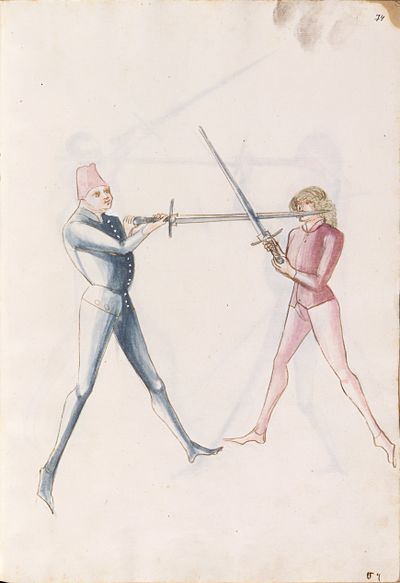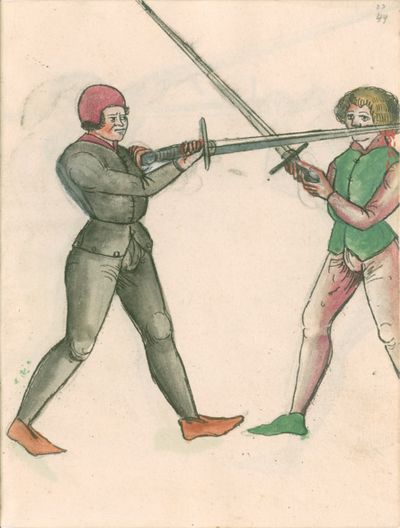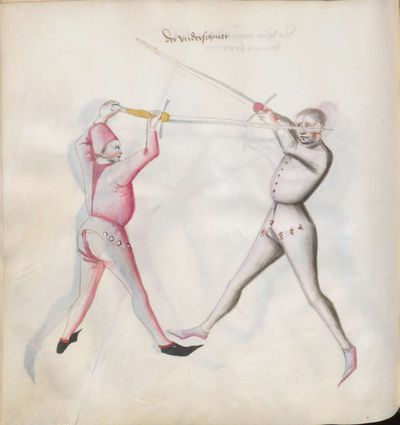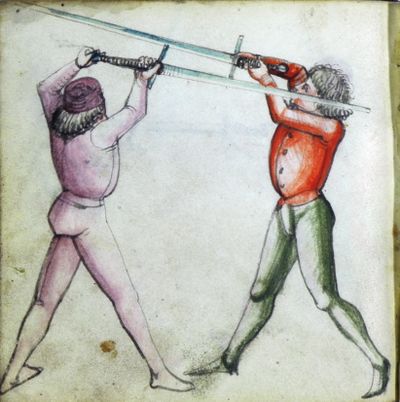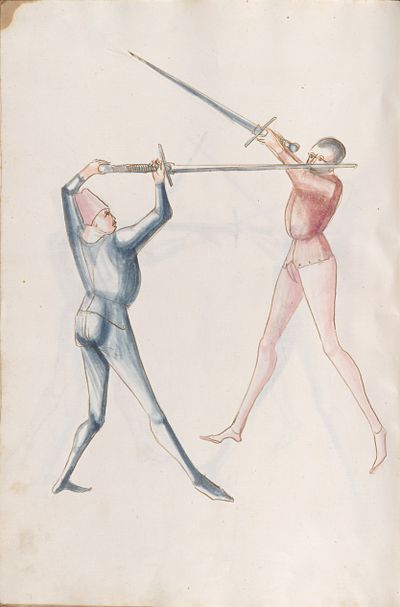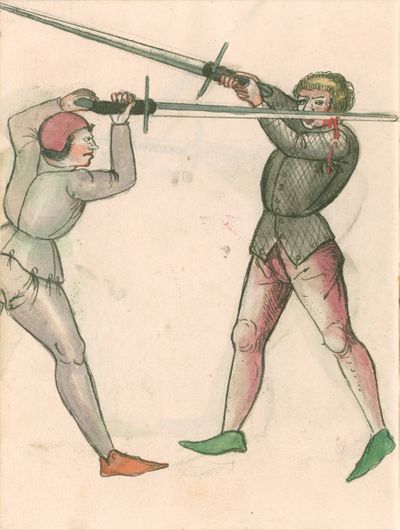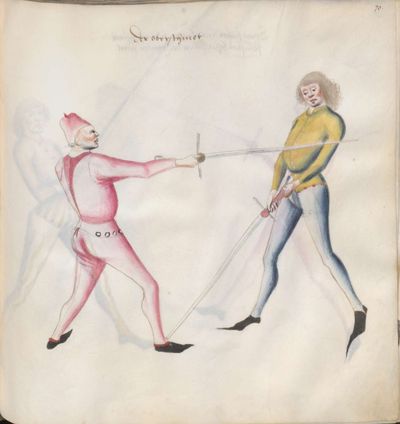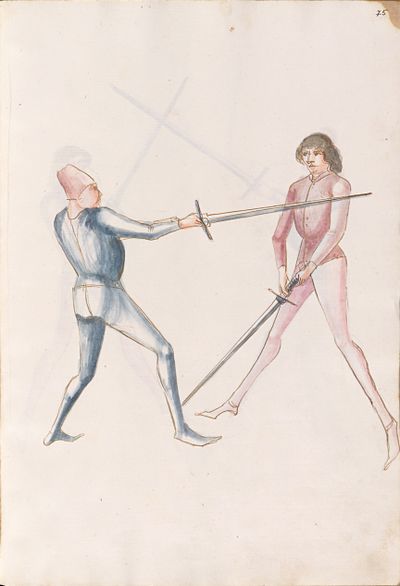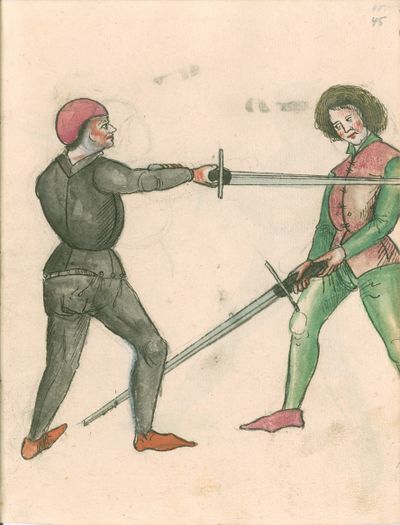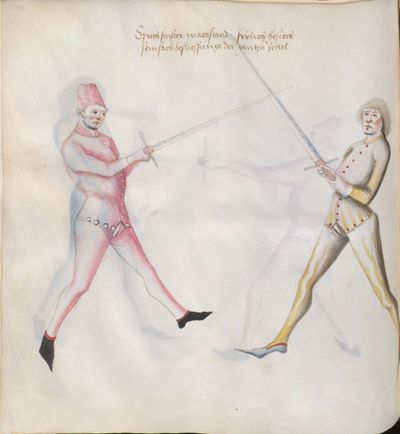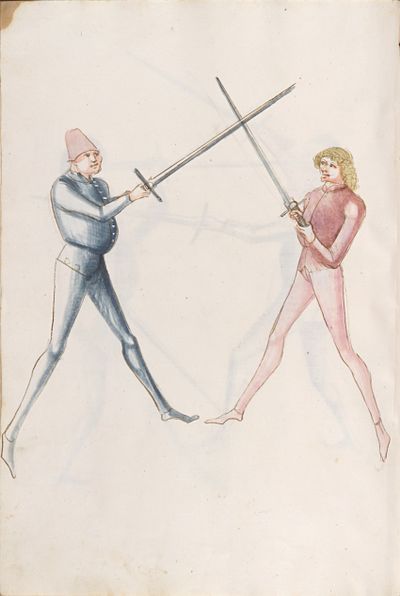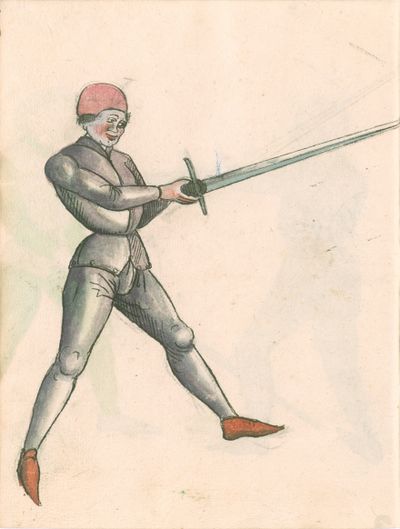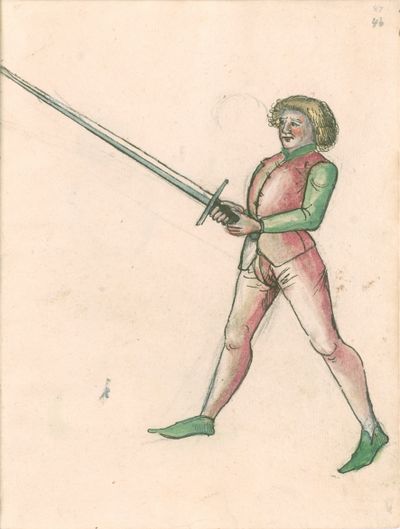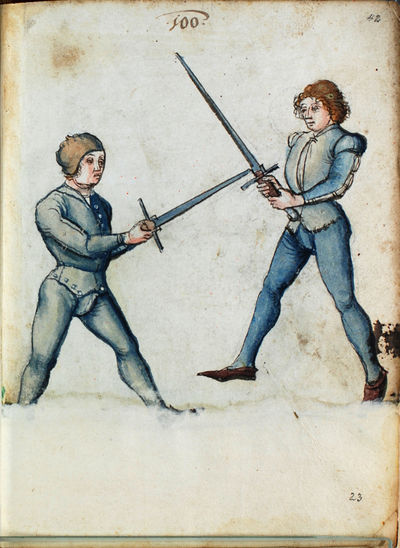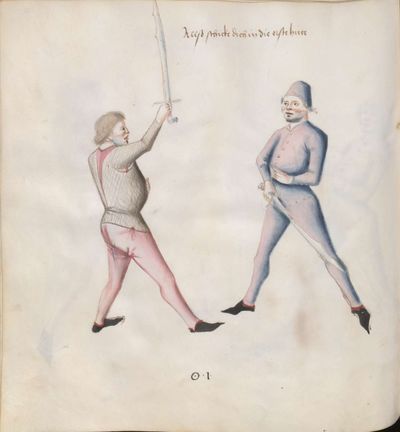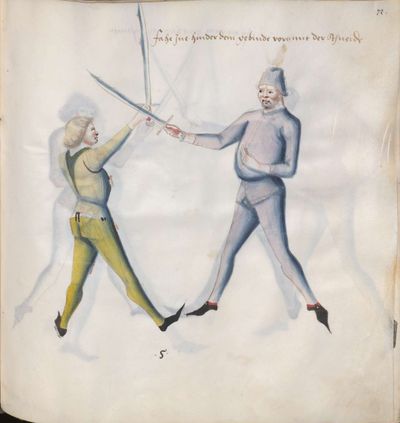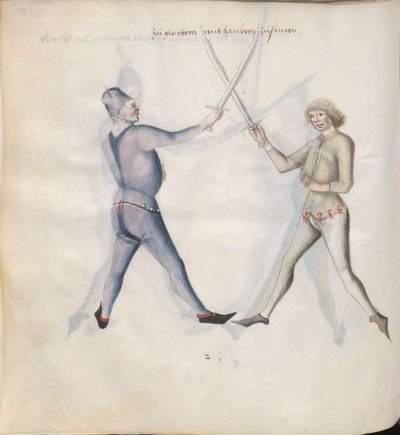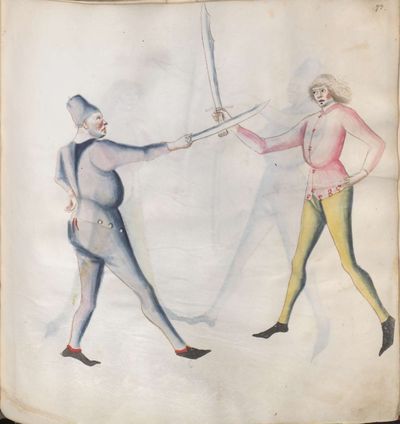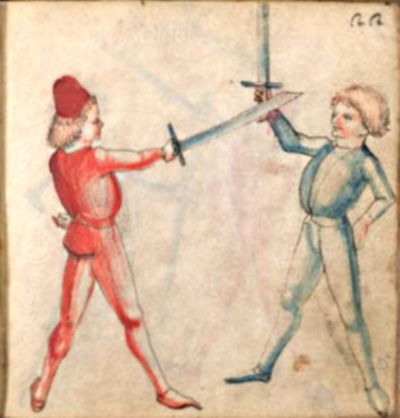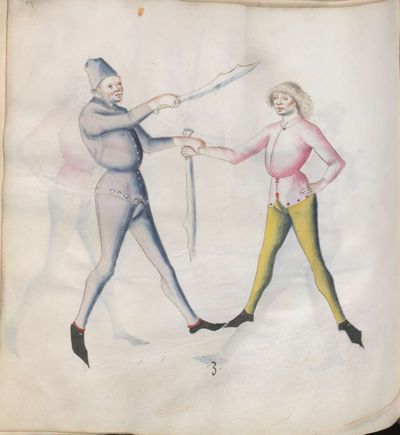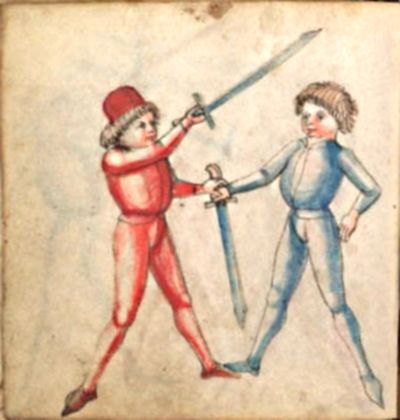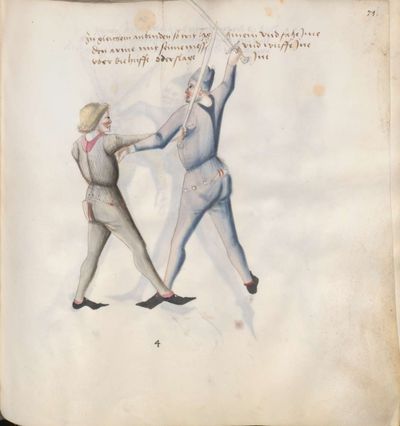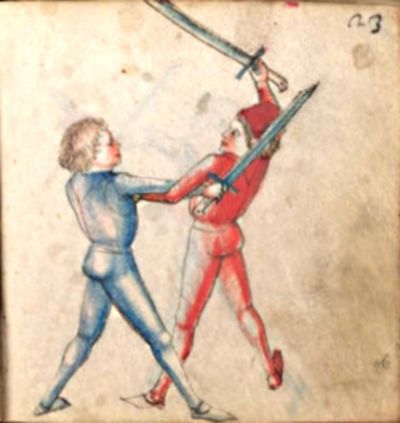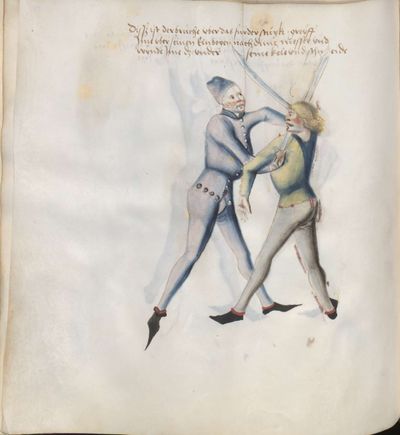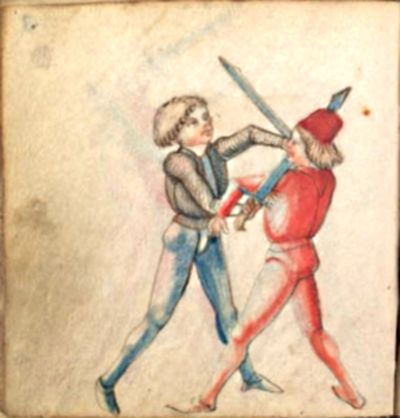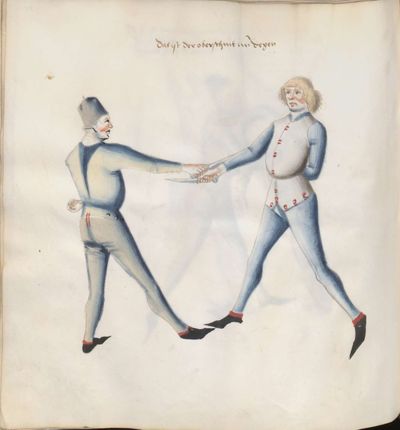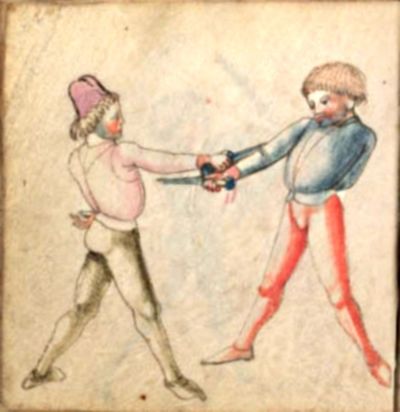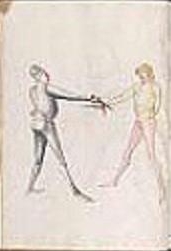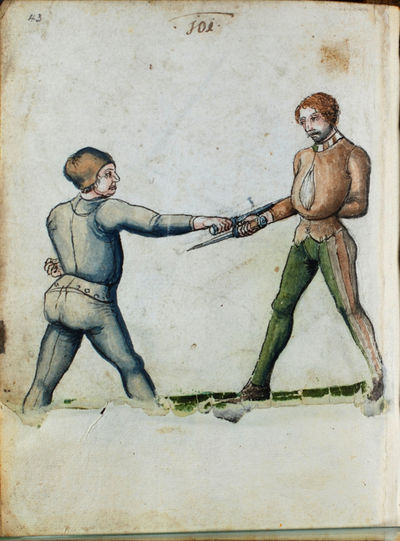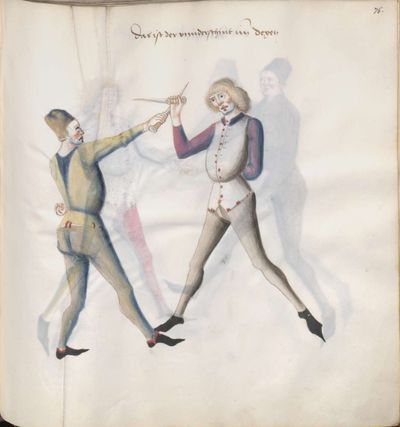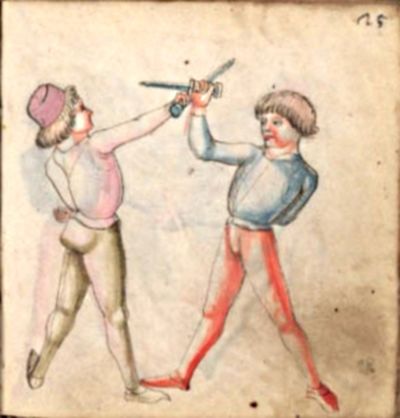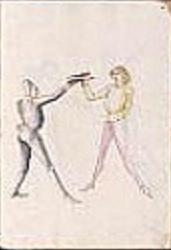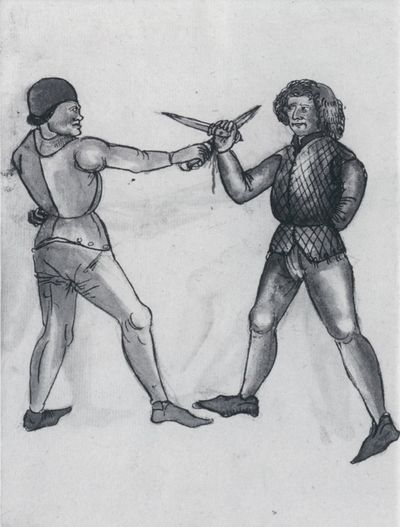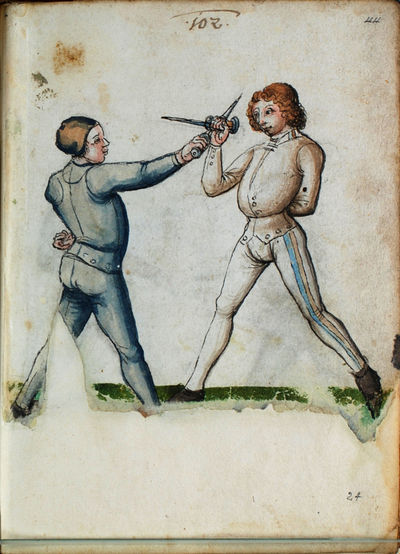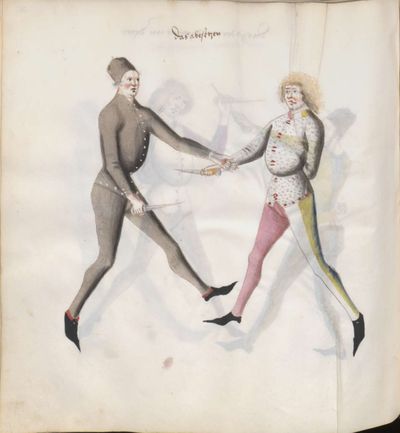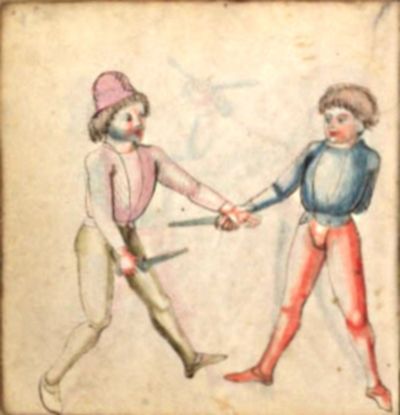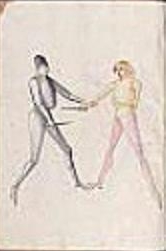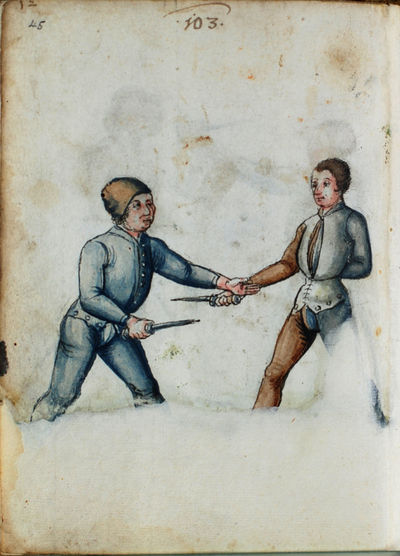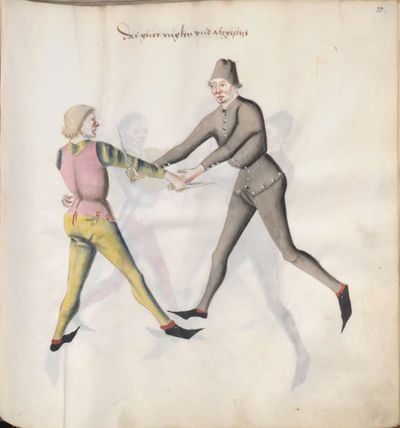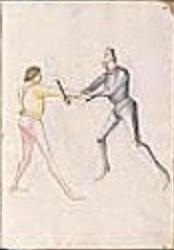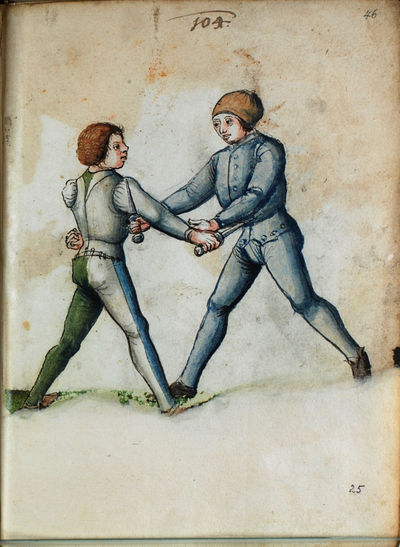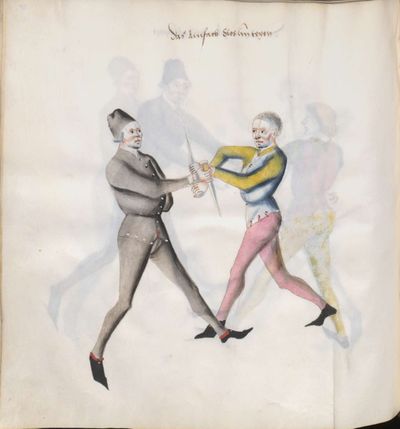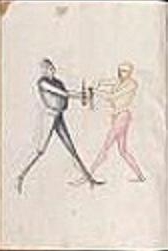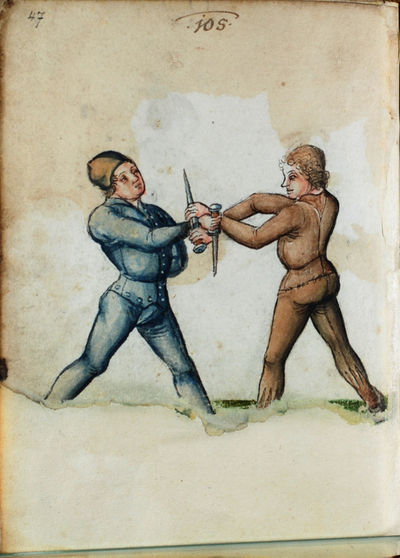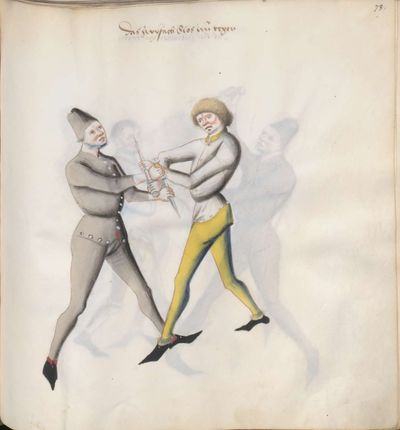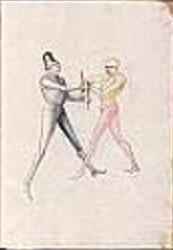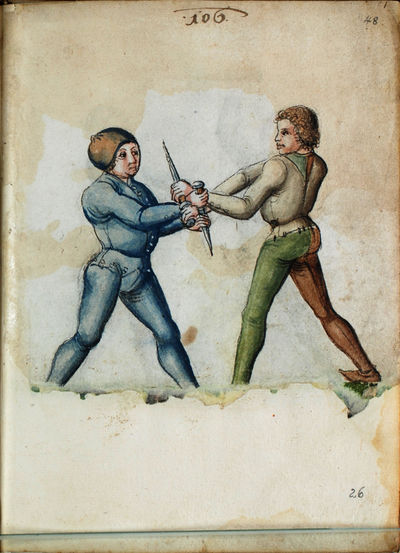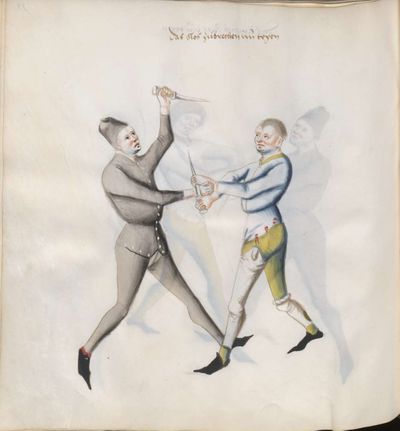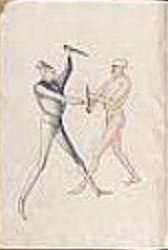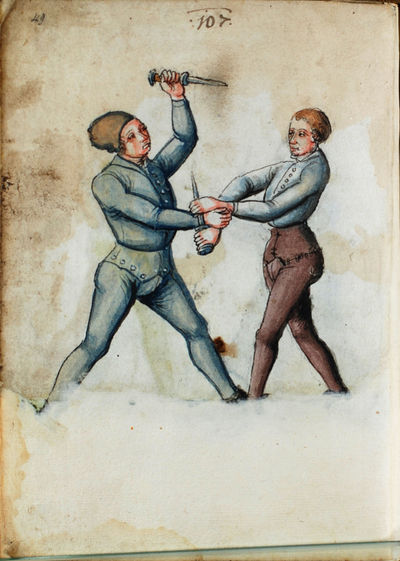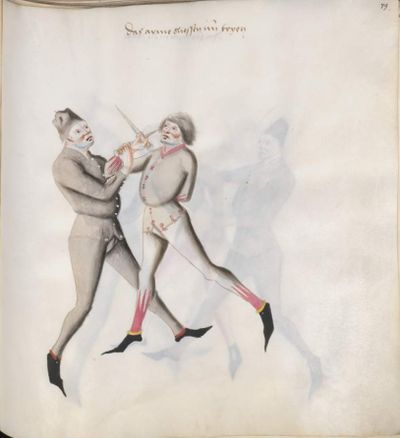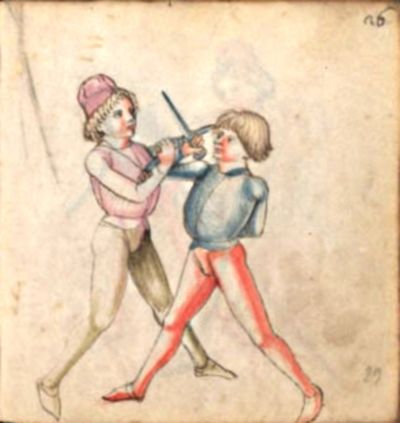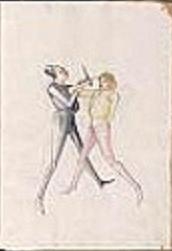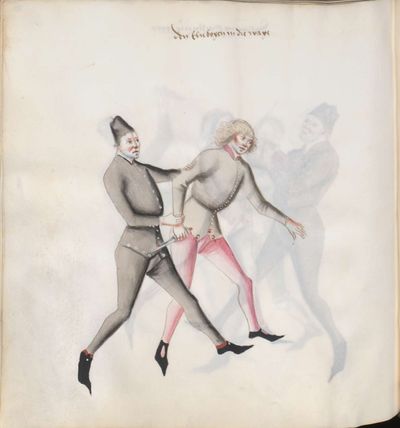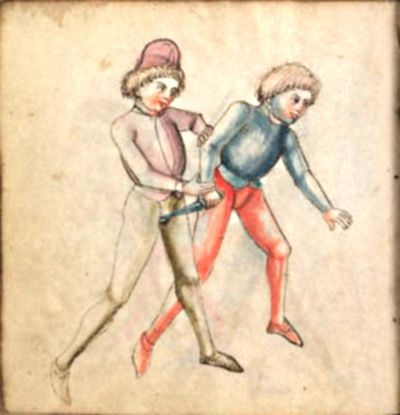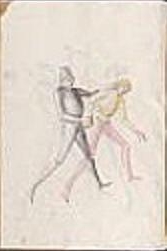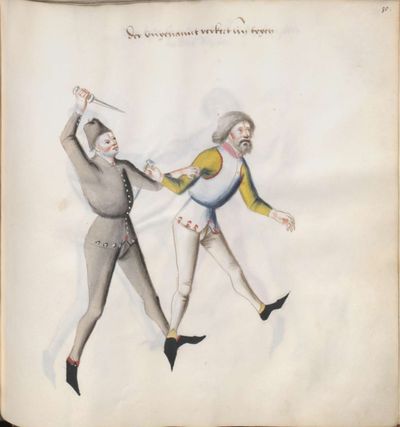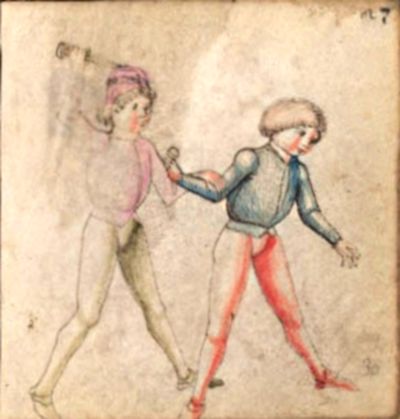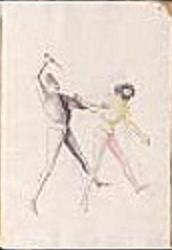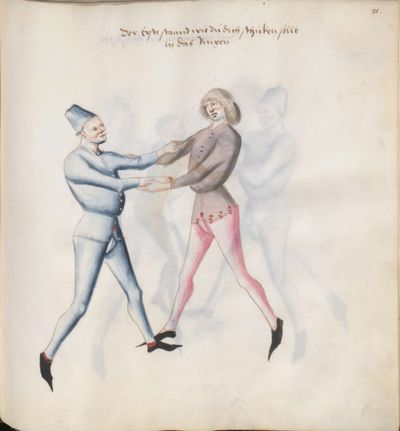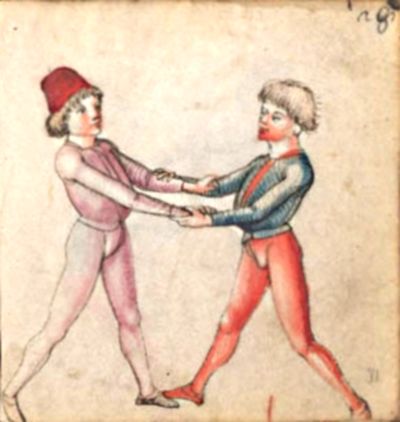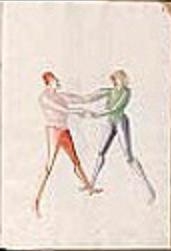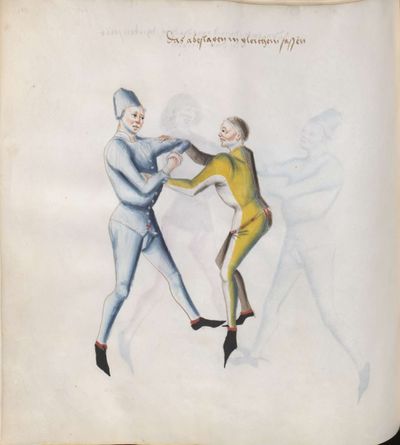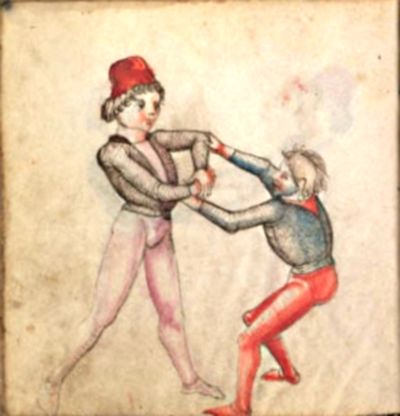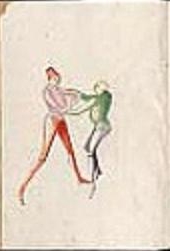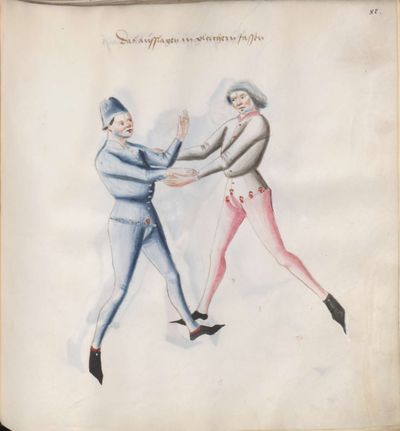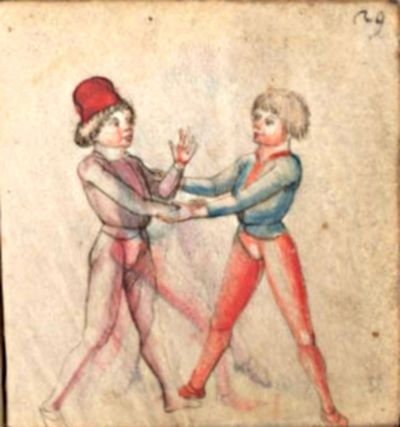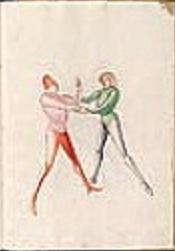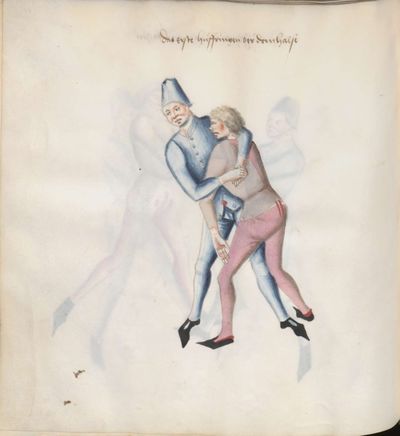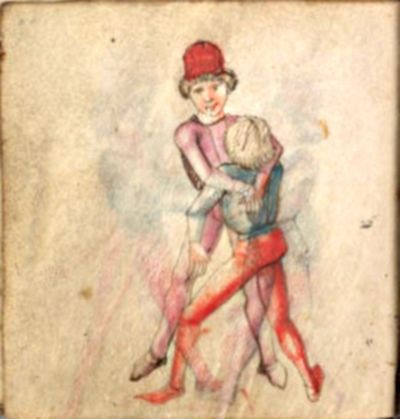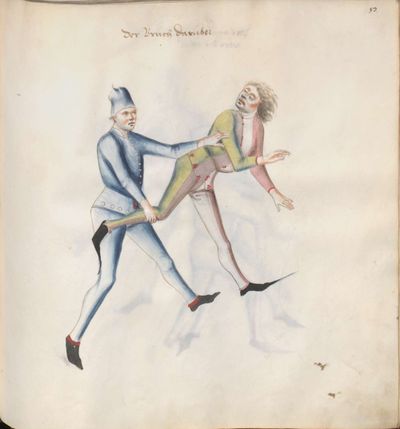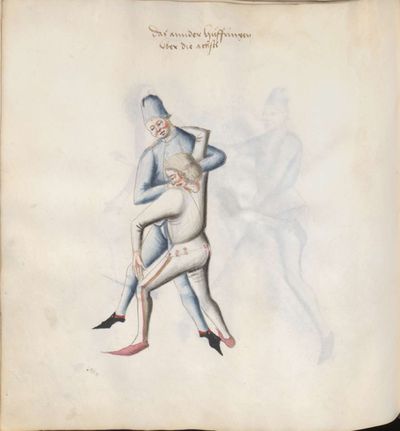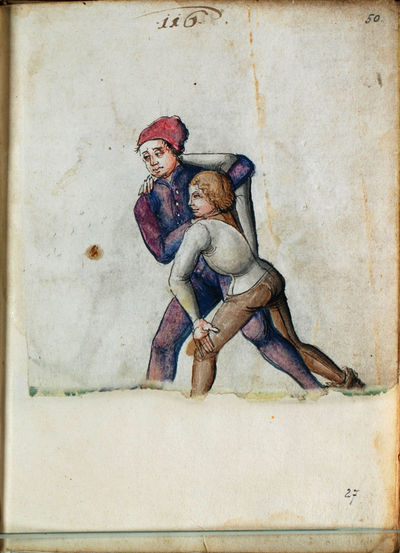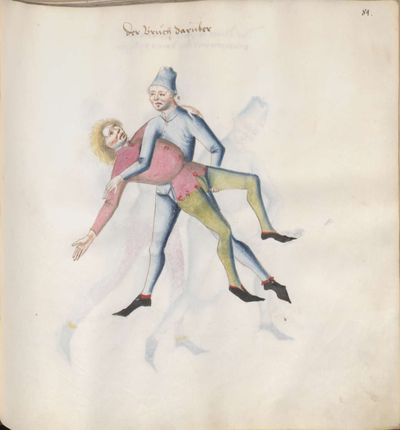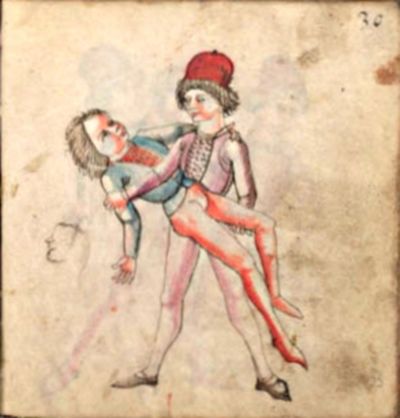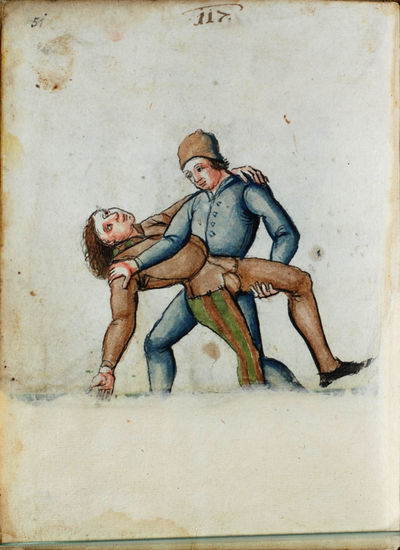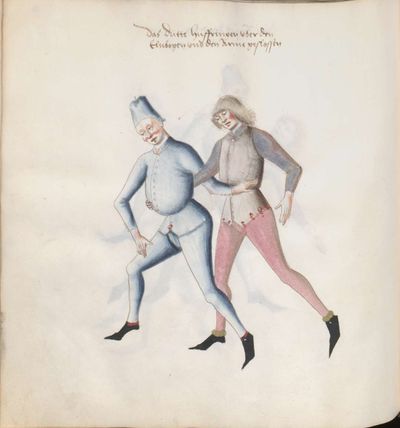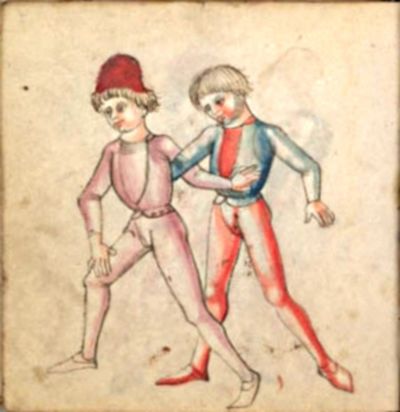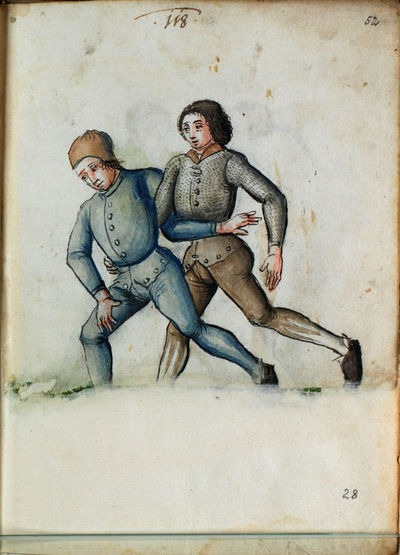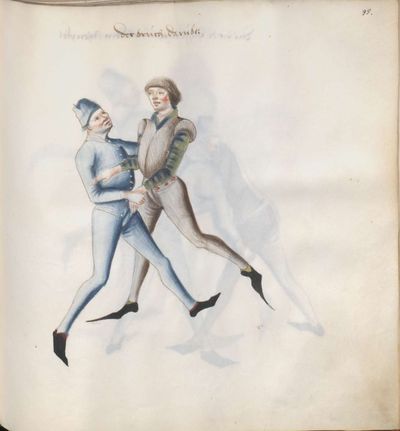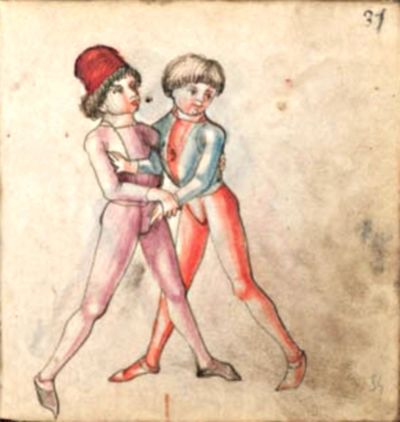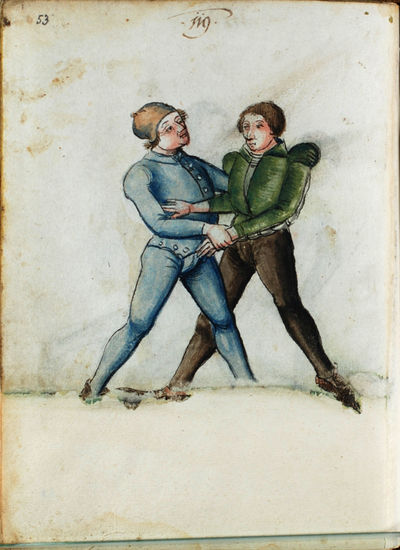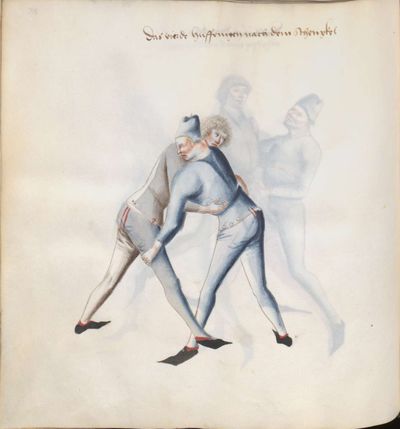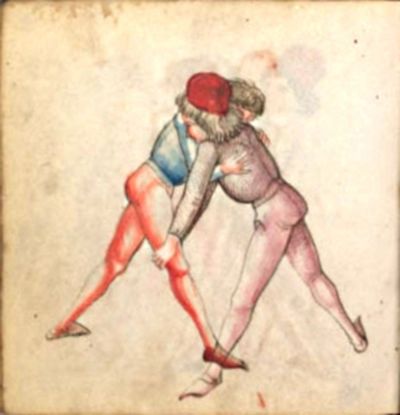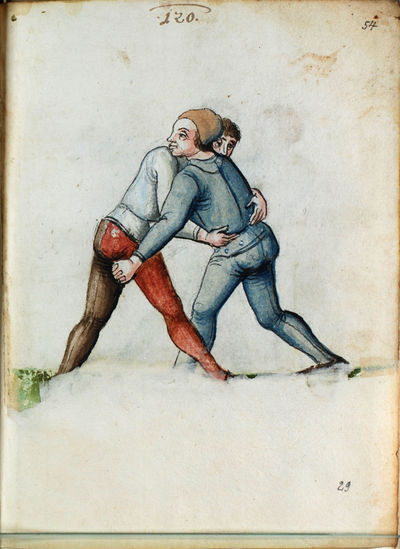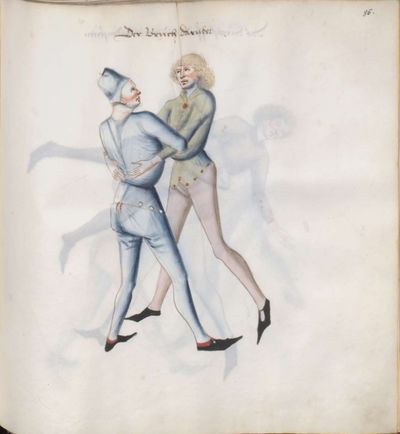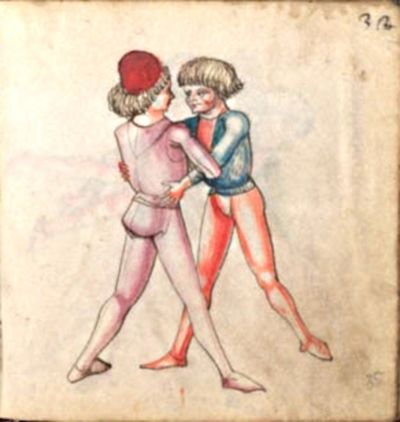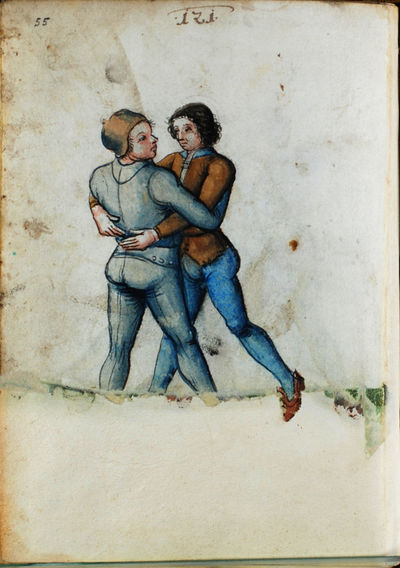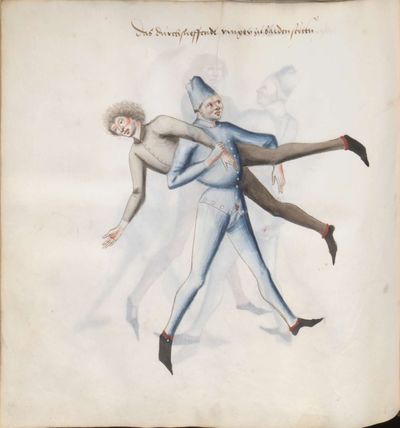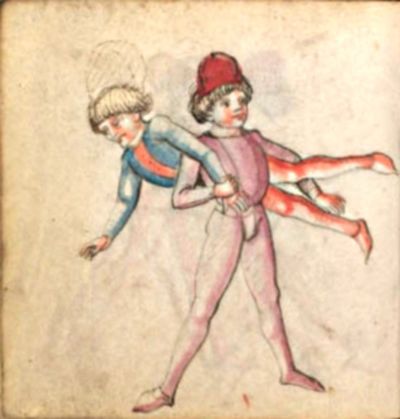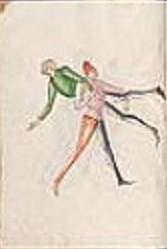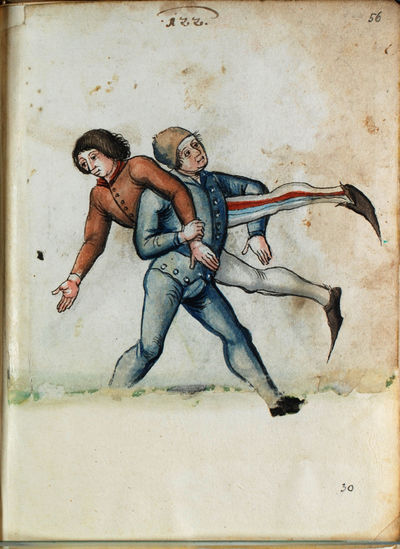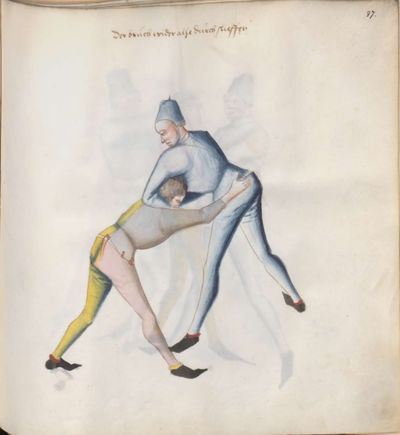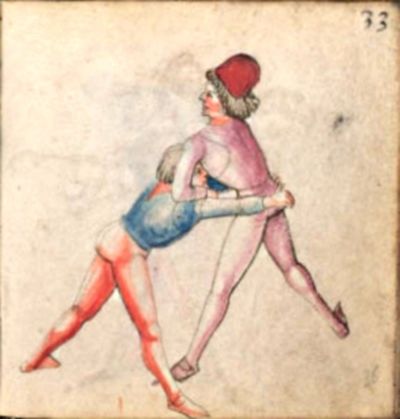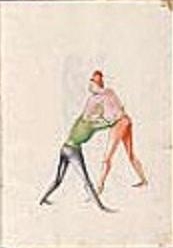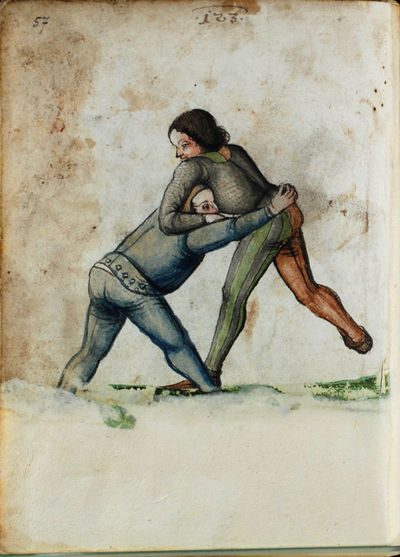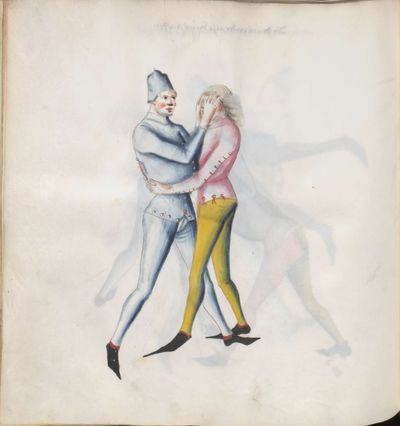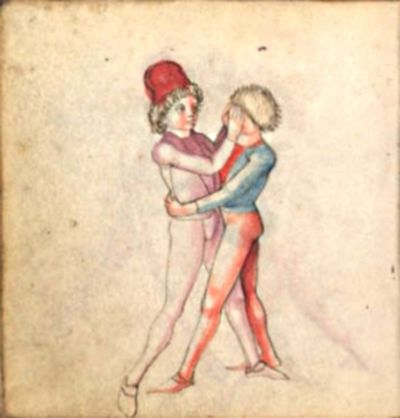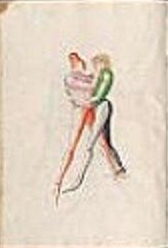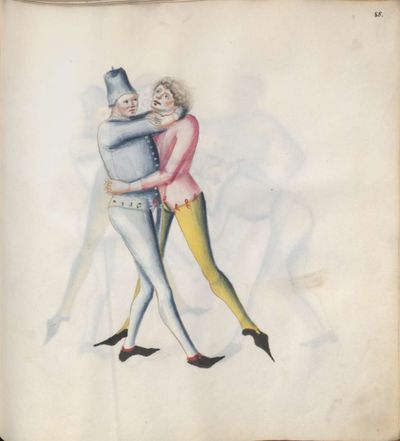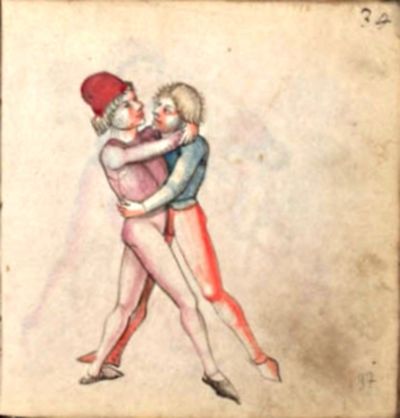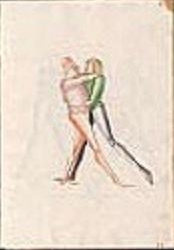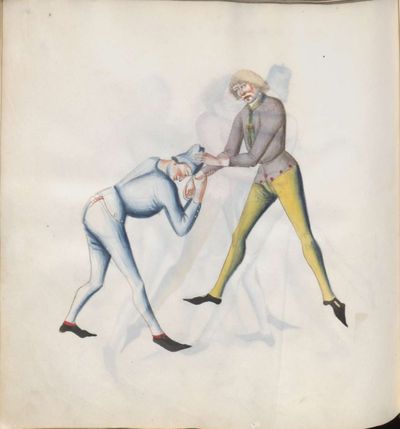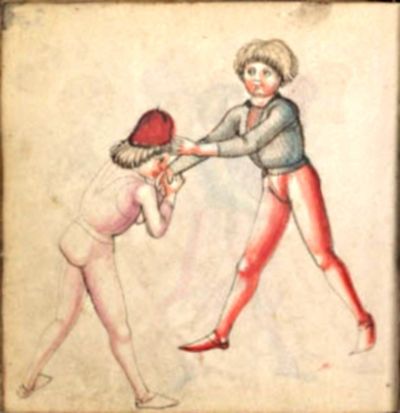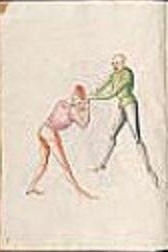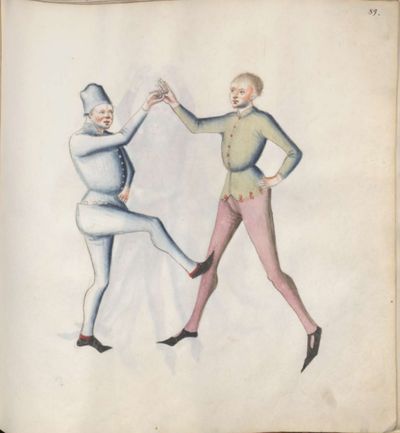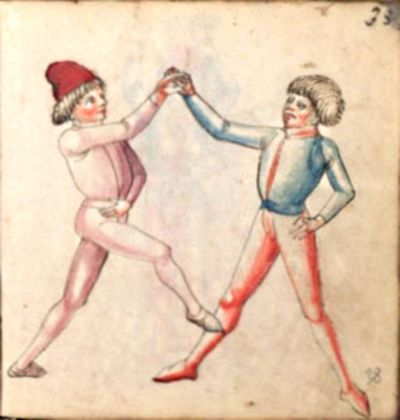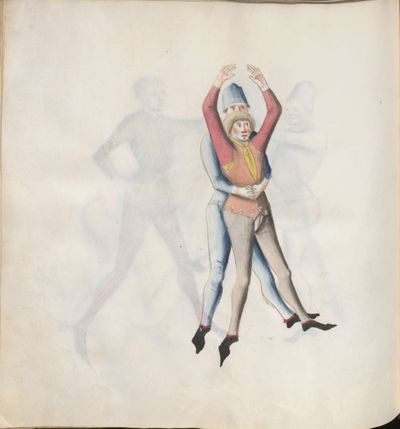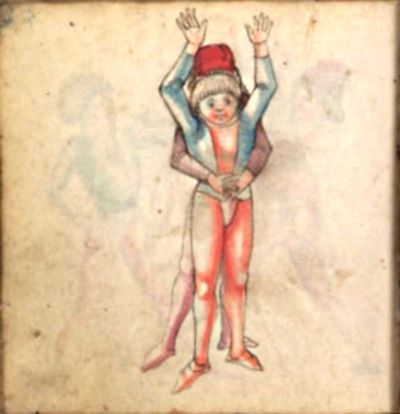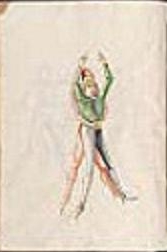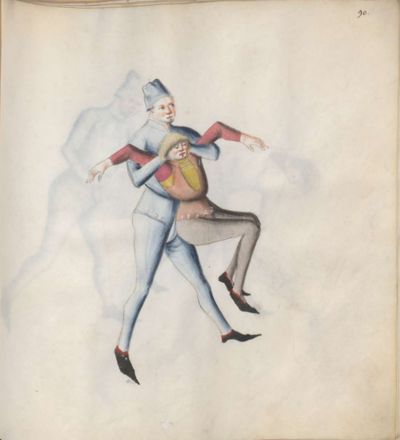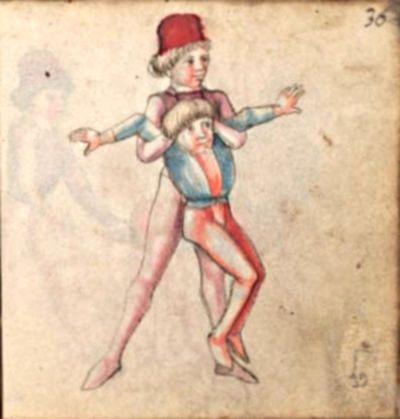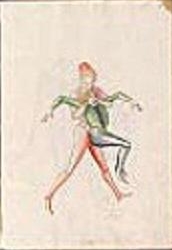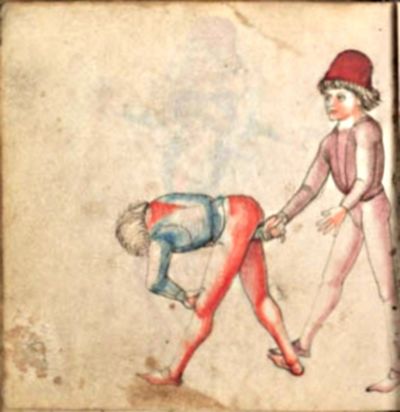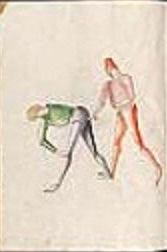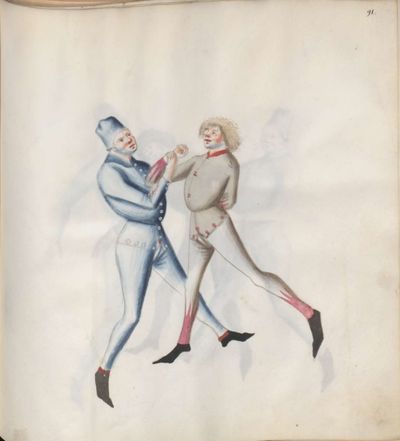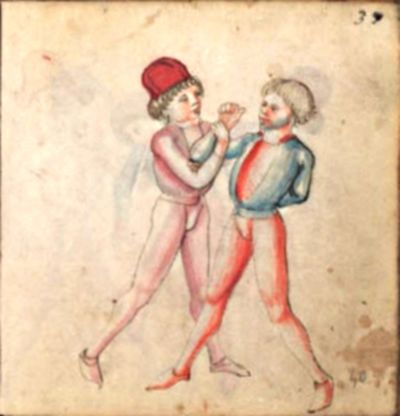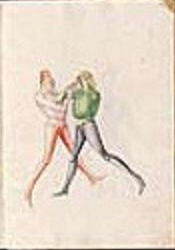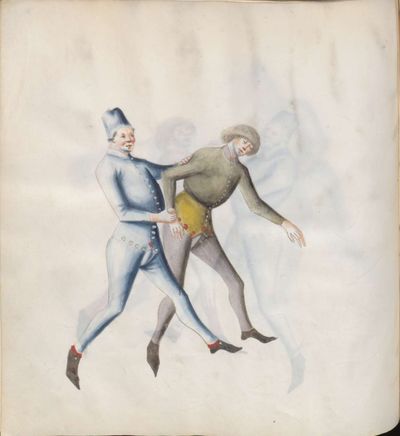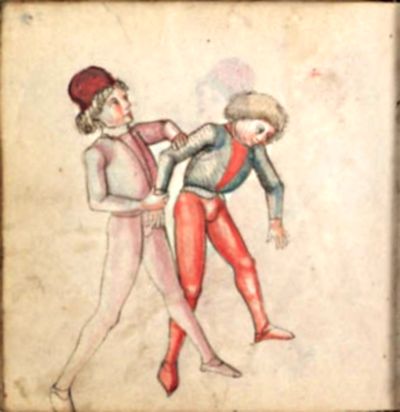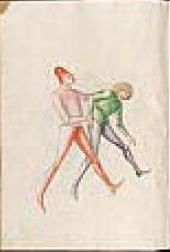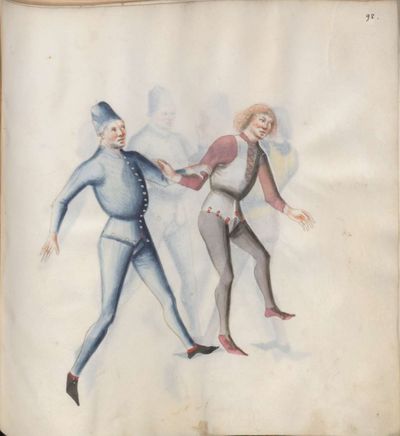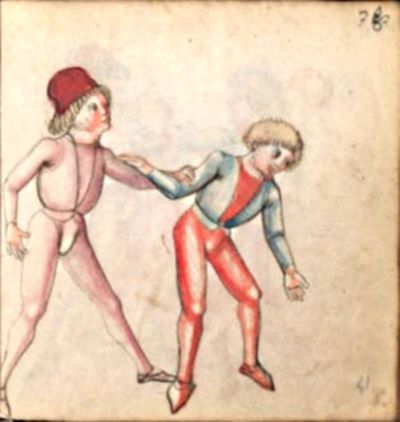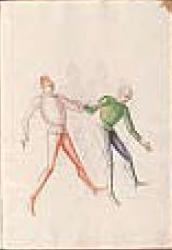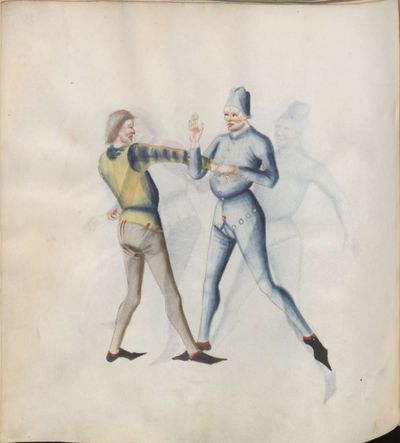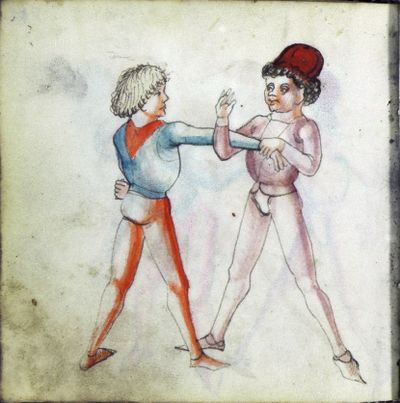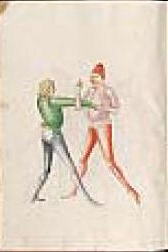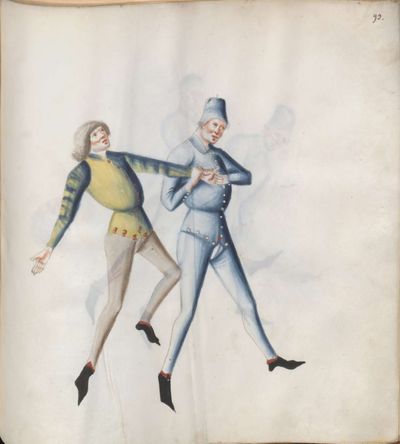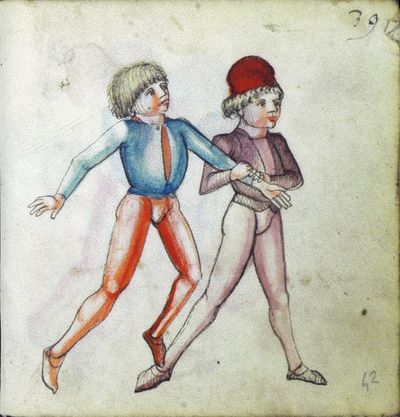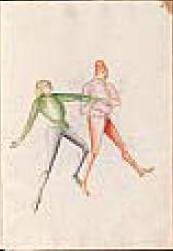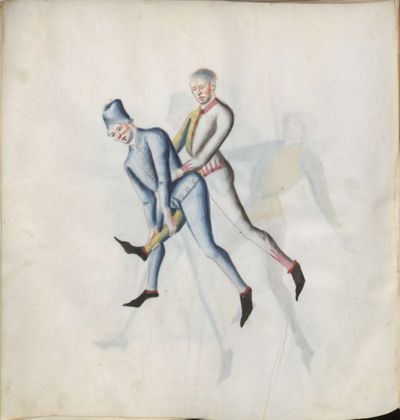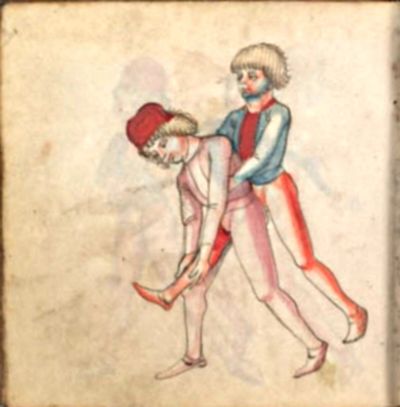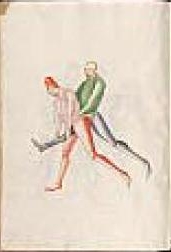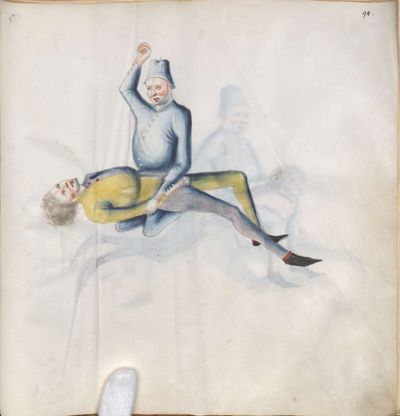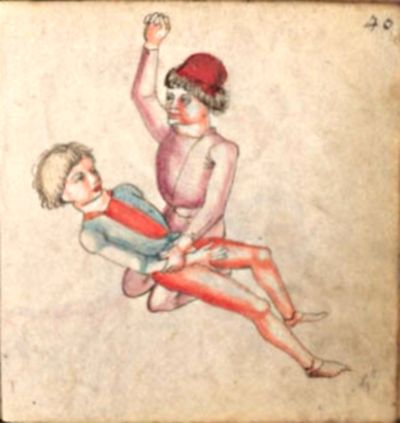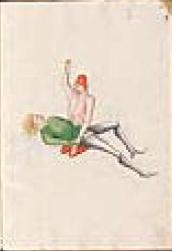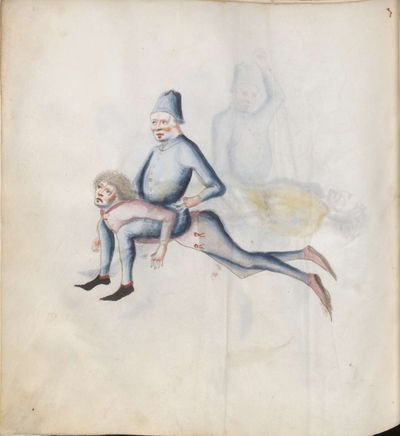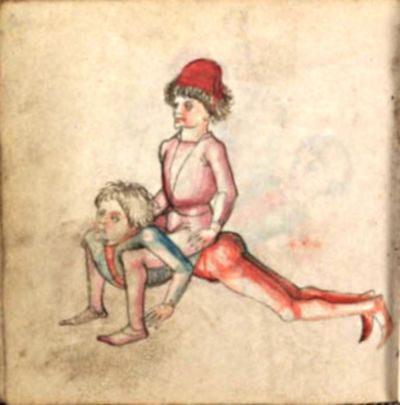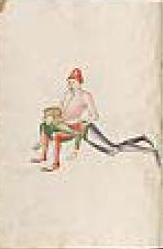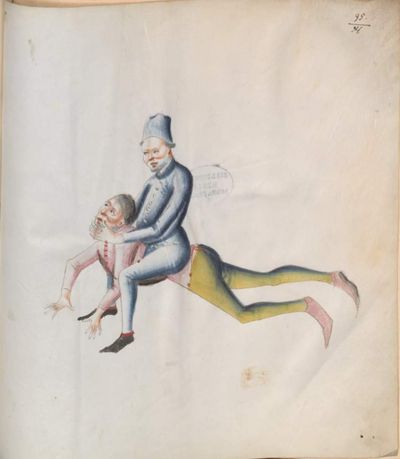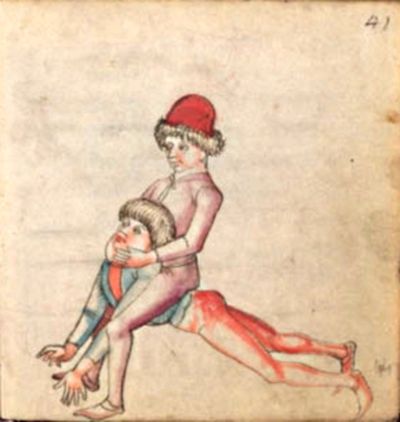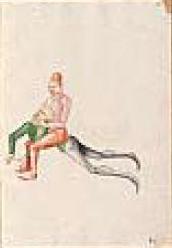|
|
You are not currently logged in. Are you accessing the unsecure (http) portal? Click here to switch to the secure portal. |
Paulus Kal/Illustrations
Contents
Preface
Draft Translation |
Munich Version (ca. 1470) |
Bologna Version (1460-1480) |
Vienna Version (ca. 1480s) |
Gotha Version (ca. 1473-1503) |
Solothurn Version (ca. 1506-1514) |
|
|---|---|---|---|---|---|---|
With the help of God and of the highborn lord Duke Ludwig, Count Palatine of the Rhine, Duke of Lower and Upper Bavaria, I, Master Paulus Kal, an exponent of the art, have made this book, which deals with all knightly weapons in brief succession. |
||||||
Here begins the art that Liechtenauer has created with his fellowship and applied with all knightly weapons. May God have mercy on him. |
||||||
Master Johannes Liechtenauer. |
||||||
The noble and zealous Hans Stettner, which is most of all the master of all pupils—and I, Master Paulus Kal, was his student—may God have mercy on him above all of them. |
||||||
God, thou Eternal Word, help the body here, the soul there. |
||||||
My Lord, I vow to serve you. My God and his dear mother to be our help. |
||||||
Take the sword, my lord, you will be protected by the Mother of God and the chivalrous knight, St. George. |
||||||
I have eyes like a hawk, so you do not deceive me.
|
Mounted Fencing
Draft Translation |
Munich Version (ca. 1470) |
Bologna Version (1460-1480) |
Vienna Version (ca. 1480s) |
Gotha Version (ca. 1473-1503) |
Solothurn Version (ca. 1506-1514) |
|||||||||
|---|---|---|---|---|---|---|---|---|---|---|---|---|---|---|
Your spear extends very far.
|
||||||||||||||
At the half spear, set aside the long spear. |
||||||||||||||
Raise your spear over the shoulder and turn the horse to him, or set the spear behind the buttocks and meet him. |
||||||||||||||
Set aside on your right. |
||||||||||||||
Strike on his spear to the right side and catch his lance under your right arm. Put your pommel at the beginning of his saddle with the point. |
||||||||||||||
Put your sword on the left hand on your bridle, and as far away from you as you can. Setting it aside with the blade and plunge with the hilt his spear to the ground. Turn your pommel to the saddle bow, and set upon him with the point where you can. |
||||||||||||||
The first guard.
The second guard.
|
||||||||||||||
The third guard.
|
||||||||||||||
The outer sword taking. |
||||||||||||||
The inner sword taking. |
||||||||||||||
The sheep grip fights what's under the face. |
||||||||||||||
Fall over whoever wants those who wrestle with you on the neck. |
||||||||||||||
Set aside from the front of the head whoever will grab you. |
||||||||||||||
If you set aside and lock the arm, turn around with your horse away from the man. |
||||||||||||||
This is the sun pointer. |
||||||||||||||
Embark against the man on horseback thus. |
||||||||||||||
Embark to throw a man on horseback thus. |
Short Sword
Draft Translation |
Munich Version (ca. 1470) |
Bologna Version (1460-1480) |
Vienna Version (ca. 1480s) |
Gotha Version (ca. 1473-1503) |
Solothurn Version (ca. 1506-1514) |
|||
|---|---|---|---|---|---|---|---|---|
Embark so to set aside a throw. |
||||||||
Setting aside the long spear with his hand and rotating it and setting it aside with the sword. |
||||||||
The bottom guard in the short sword.
|
||||||||
The third guard under the arm.
|
||||||||
A murder strike to the elbow. |
||||||||
Seek his openings under the arms. |
||||||||
The free driving in the hand. |
||||||||
It reached behind the gauntlet. |
||||||||
A sword taking. |
||||||||
How he does if he loses his sword. |
||||||||
How to break him by jerking the leg and tearing of the neck. |
||||||||
The break to the tearing at the neck. |
||||||||
How to ward off the tearing at the neck by pushing against the elbow. |
||||||||
Put the leg to the side and raise him up with the knob inside his leg. |
||||||||
Defeat a beaten man with power. |
||||||||
Pass under his eyes near the knee, bend and tear with the pommel. |
||||||||
How to keep someone on his back on the ground. |
||||||||
How to hold someone on his nose on the ground. |
||||||||
Praised be Mary and her child and all who live with them. |
Poleaxe
Munich Version (ca. 1470) |
Bologna Version (1460-1480) |
Vienna Version (ca. 1480s) |
Gotha Version (ca. 1473-1503) |
Solothurn Version (ca. 1506-1514) |
||
|---|---|---|---|---|---|---|
The way you will confront someone with the axe. |
||||||
The first binding-on with the axe. Note now when you use the pollaxe to fence, learn high and low binding-on as with the staff.[1] |
||||||
The first attempt at the wrenching. Next you come to the first play. If he holds his hammer above him, then hold your thumb underneath by the left leg across the body. If he strikes from above, then parry with the lower part of the axe held above. Or let fly at him with a sweep and hook the axe inside the right knee to pull him down. |
||||||
Another attempt at crippling and pulling. Next he wants to perform the above play on you and hook you. When he lays the hook on you, strike with your axe from inside against his axe, lay with it against his leg and pull upwards with it as mentioned. |
||||||
A parry and hook in return. Next if he counters the play above, then come in with the axe and wind in upwards... |
||||||
Displace, wind up, and wrench him down by the neck. ...Wrench at his neck from above and set him back over your left leg on the right, or over the right leg to the left, and throw him. The play works from both sides. |
||||||
Wind through quickly and directly like this; bind on and cast your point forward, pulling the axe towards you.[2] Next, he binds on to you and both hammers stand upright. If he makes a peasant strike at you, sense and act as if you will parry, but let his strike go through forward so you can hook him by the nape, or strike him freely to the head, the shoulder or the arm. |
||||||
And if he straightens the axe to pull your leading hand free, when he pulls, hang[3] after and impale[4] him, or wrench him down by the neck. Next if he strikes at the same time as you and wants to pull your leading hand free, then give way and take his (hand) from him. If he sets his axe on to you, then set yours also onto him,[5] and lengthen your axe... |
||||||
The wrenching from the previous play. ...Then pull the left leg backward and place your axe on your right side, thus you have over-extended him. |
||||||
Seek to pierce between the armour. Next, then lay the axe across the body with the hammer underneath and act as though you want to parry with the upper point, but seek to wrench[6] him from below, if he then strikes wide,[7] seek the opening inside the hand or under the armpit and set upon[8] him. Next if you are performing the previous play and parry with the upper point,[9] then guide all his strikes to the side, and the play goes like Hildebrand’s Cut[10] in the long sword, however[11] it works with the axe as well as with other weapons. |
||||||
Blessed be Maria and Child, and all who are with them. |
Questions for dueling
Munich Version (ca. 1470) |
Bologna Version (1460-1480) |
Vienna Version (ca. 1480s) |
Gotha Version (ca. 1473-1503) |
Solothurn Version (ca. 1506-1514) |
||
|---|---|---|---|---|---|---|
Advisor Fighter |
||||||
Listerner
|
Longshield
Munich Version (ca. 1470) |
Bologna Version (1460-1480) |
Vienna Version (ca. 1480s) |
Gotha Version (ca. 1473-1503) |
Solothurn Version (ca. 1506-1514) |
||||
|---|---|---|---|---|---|---|---|---|
The stroke at the shield Item, do thus with the long shield: learn to deliver the Oberhau and Unterhau and learn to bind well below and above, and in the techniques described hereafter you will learn the side wrenching. |
||||||||
How one should be behind the shield with the club Item, do thus the first technique behind the shield if you have a sword or mace: if you have a sword strike whatever opening you see; or cast [the mace] and call your marshal to give you another mace. |
||||||||
Here one seeks the other behind the shield Item, do this with the shield and with mace near to him and shoot with the point of the mace to his shield’s barb [?] so that he must expose himself; immediately strike or thrust. |
||||||||
The step between the shields whereby he can expose him and strike or thrust with the club Item, do this nearer to him and step with a foot on a point of his shield so that he is completely exposed, then strike to lame the wrist. |
||||||||
Here it comes to the winding and wrenching with the shields Item, if you have used all of your maces, and stand freely with the shield and he also stands freely with his shield, see if you can go under his shield by the point and wrench it toward you, then take it and quickly cast it from you and work with your shield. |
||||||||
From the winding comes the thrust to the heart Item, if you have no mace and he has none then wind against him and note, as you thrust, the feeling; this is called ‘finding’ or ‘weak and strong’. |
||||||||
Here the previously described technique is completed Item, if you have come from the mace and shield, then remember the "murder grips": with the bottom of the feet pressing to the shin and stepping on the knee, grasping the genitals, the wrestling at the hip, the thrust to the heart, the arm break, to the neck and the nose, to the eyes, under the ears, or the Sun Pointer. |
||||||||
Praised be Mary and her child and all who live with them. |
Duel Between a Man and a Woman
Draft Translation |
Munich Version (ca. 1470) |
Bologna Version (1460-1480) |
Vienna Version (ca. 1480s) |
Gotha Version (ca. 1473-1503) |
Solothurn Version (ca. 1506-1514) |
|
|---|---|---|---|---|---|---|
Thus is the man in the pit against the woman: he is buried to the waist and can walk around a little in it. One hand is tied to him by the elbow to the side, but he can move well.
|
||||||
Praise be to Mary and her child and all of those with them in Paradise. |
Sword and Buckler
Munich Version (ca. 1470) |
Bologna Version (1460-1480) |
Vienna Version (ca. 1480s) |
Gotha Version (ca. 1473-1503) |
Solothurn Version (ca. 1506-1514) |
||
|---|---|---|---|---|---|---|
In the first guard position yourself thus. |
||||||
In the first binding-on position yourself thus. |
||||||
The first technique. Catch his strike on your buckler, meanwhile strike low where you want. |
||||||
If he does the previous technique to you, then parry him low thus. |
||||||
If he strikes to your head, then search for the nearest touch to his breast . |
||||||
If he parries you equally with the blade, then fall over his hand with your pommel and tear after his neck. |
||||||
Position yourself thus when you want to take his buckler, and grip him inverted in his buckler and wind it from his hand. |
||||||
The previously described technique. |
||||||
Wind the buckler over the elbow and take his sword, or throw him. |
||||||
Thus he is thrown from the previously described technique. |
Long Sword
Munich Version (ca. 1470) |
Bologna Version (1460-1480) |
Vienna Version (ca. 1480s) |
Gotha Version (ca. 1473-1503) |
Solothurn Version (ca. 1506-1514) |
||||||
|---|---|---|---|---|---|---|---|---|---|---|
The first guard is called the Ox.
|
||||||||||
The third guard is called the Fool.
|
||||||||||
The Wrath-hew Point threatens him. |
||||||||||
Take off above without danger. |
||||||||||
Wind, stab. |
||||||||||
If he sees it, take it down. |
||||||||||
Double above. |
||||||||||
Mutate below. |
||||||||||
Know to aim at Four Openings. |
||||||||||
So you strike wisely without danger. |
||||||||||
Learn to work above. |
||||||||||
The first hip wrestling with the sword. |
||||||||||
The second hip wrestling with the sword. |
||||||||||
The third hip wrestling with the sword. |
||||||||||
The fourth hip wrestling with the sword. |
||||||||||
Travel-after twofold. |
||||||||||
Changing-through learn from both sides. |
||||||||||
Crooked on nimbly, throw the point on the hands. |
||||||||||
Take the elbow in the balance. Step in the day, be not too slow. |
||||||||||
Grab-over on the grip and tear. |
||||||||||
Snap at him on both sides. |
||||||||||
Tear at him on the blade. |
||||||||||
The Outer Manner, your work therewith begins. |
||||||||||
The Under-slice. |
||||||||||
The Over-slice. |
||||||||||
Speaking-Window make. Stand freely, see his business. The conclusion of the entire Epitome. |
Messer
Munich Version (ca. 1470) |
Bologna Version (1460-1480) |
Vienna Version (ca. 1480s) |
Gotha Version (ca. 1473-1503) |
Solothurn Version (ca. 1506-1514) |
||
|---|---|---|---|---|---|---|
Thus position yourself in the first guard. |
||||||
Catch him behind the grip at the front with the edge. |
||||||
Simultaneous hews together. |
||||||
Equal binding-on, so step in long and catch his arm with his messer, and throw him over the hip, or strike him. |
||||||
This is the break to the previous technique. Grip over his elbow to your messer, and wind that under his throat and slice. |
Dagger
Munich Version (ca. 1470) |
Bologna Version (1460-1480) |
Vienna Version (ca. 1480s) |
Gotha Version (ca. 1473-1503) |
Solothurn Version (ca. 1506-1514) |
||
|---|---|---|---|---|---|---|
This is the Over-slice with the dagger. |
||||||
This is the Under-slice with the dagger. |
||||||
The setting-off. |
||||||
The limb moving-over and set-off. |
||||||
The one-fold lock with the dagger. |
||||||
The two-fold lock with the dagger. |
||||||
How to break the lock with the dagger. |
||||||
The arm locking with the dagger. |
||||||
The elbow in the balance. |
||||||
The unnamed turn with the dagger. |
Grappling
Draft Translation |
Munich Version (ca. 1470) |
Bologna Version (1460-1480) |
Vienna Version (ca. 1480s) |
Gotha Version (ca. 1473-1503) |
Solothurn Version (ca. 1506-1514) |
|
|---|---|---|---|---|---|---|
How you shall position yourself in the first stance in the wrestling. |
||||||
The striking-off in an equal hold. |
||||||
The striking-out in an equal hold. |
||||||
The first hip wrestling by the neck. |
||||||
The counter over that. |
||||||
The second hip wrestling over the shoulder. |
||||||
The counter over that. |
||||||
The third hip wrestling over the elbow and the arm locked. |
||||||
The counter over that. |
||||||
The fourth hip wrestling after the thigh. |
||||||
The counter over that. |
||||||
The slipping-through wrestling on both sides. |
||||||
The counter against all slipping through. |
||||||
- ↑ It is unclear whether Paulus Kal left behind any staff treatises, but this indicates a clear connection between staff and pollaxe fighting.
- ↑ This looks something like the reissen in Messer.
- ↑ Hang likely means to push the shaft through with your rear hand, suspending the head of the axe in front of you.
- ↑ Ansetzen.
- ↑ Original appears to be nonsensical. With some consultation this is about as clear a translation I came across.
- ↑ "suech den vnttern rist"
- ↑ Presumably since you are only acting as though you will parry, you are voiding, which could expose the armpit etc.
- ↑ Impalement is implied, probably with the queue.
- ↑ The point standing upwards happens to be the queue in this play, but likely does not matter.
- ↑ Hildebrand’s Cut is described by Paurenfeyndt as a parry which allows the opponent’s attack to slide downward off the weapon and to the side.
- ↑ "Indes" - most likely not in the fencing sense but used as it commonly is.

